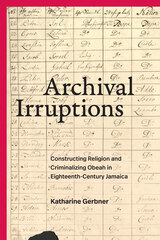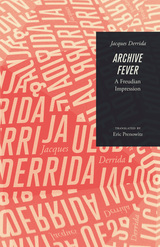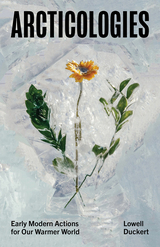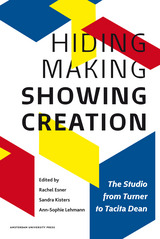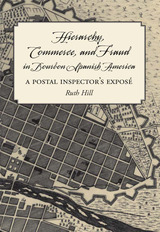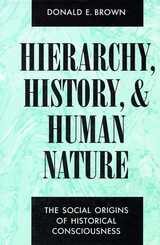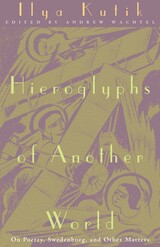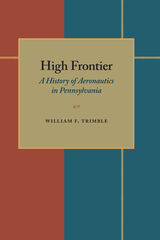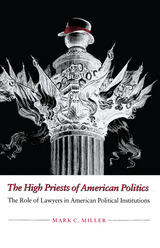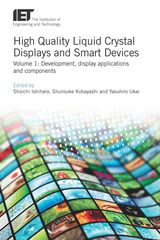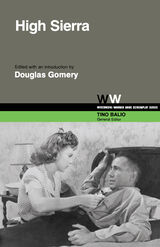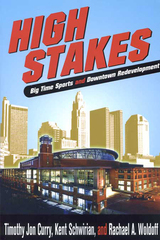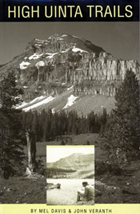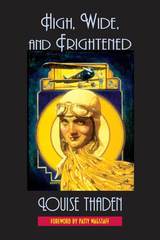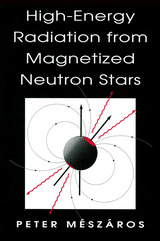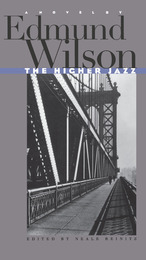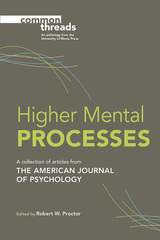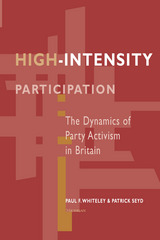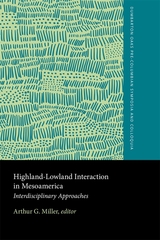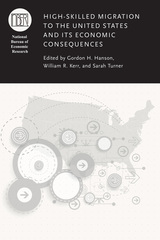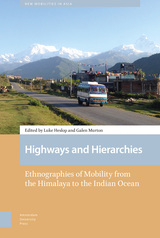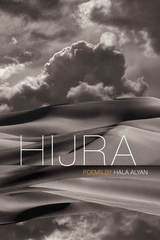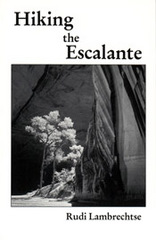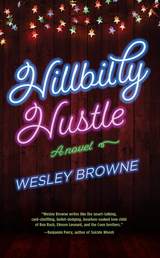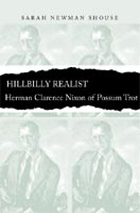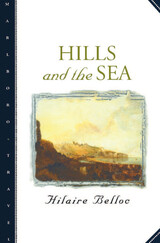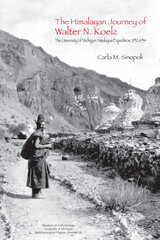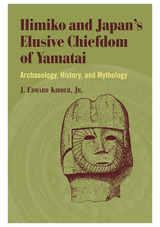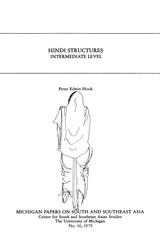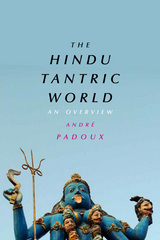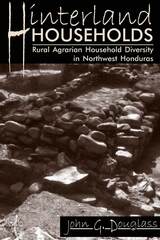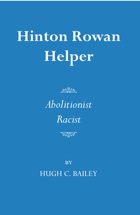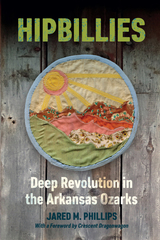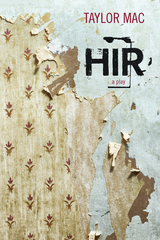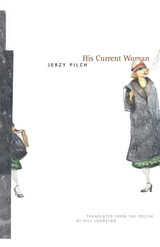 Hide Fox, and All After: What Lies Concealed in Shakespeare's Hamlet?
J. D. Winter
Sussex Academic Press, 2022 Is there anything more to say on Hamlet, this most-discussed of plays? It has become a hive of furious theorising, an anthill of scholarly research. Author J. D. Winter looks at the text afresh, seeing it as something to be viewed through a play-goers eyes: what is taking place on stage, and that only. He adopts three phrases from the text to provide a context for his approach: the plays the thing, a rhapsody of words, and the invisible event. The first suggests the spectacle itself, without regard to what has been written about it. There is no reference to outside opinion nor is another literary work named. The second indicates an awareness of the text as poem. While the tremendous sweep of Shakespearean blank verse-the prose-paragraphs on fire with their own poetry, the whispering gallery of metaphor-can scarcely be accorded proper respect in a prose commentary, certain rhapsodic effects are noted. Finally, the play is contained within a mystery. There is the question of the princes mental state, that so consumes other characters; there is the question of his procrastination, which he himself is desperate about. But the larger question, which in one shape or another has dogged critics down the ages, has to do with the drift of the action towards its culmination, including the way the mind of the audience (or reader) is taken on board. There can be no definitive answer to Hamlet or Hamlet. But like a signpost in a swarming mist, the third phrase may offer a faint clue: the invisible event. [Subject: Hamlet, Shakespeare, Literary Criticism, Theatre Studies]
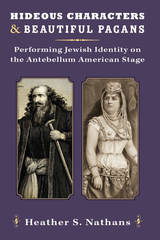 Hideous Characters and Beautiful Pagans: Performing Jewish Identity on the Antebellum American Stage
Heather S. Nathans
University of Michigan Press, 2017 While battling negative stereotypes, American Jews carved out new roles for themselves within the first theatrical entertainments in America. Jewish citizens were active as performers, playwrights, critics, managers, and theatrical shareholders, and often tied their involvement in these endeavors to the patriotic rhetoric of the young republic as they struggled to establish themselves in the new nation. Examining play texts, theatrical reviews, political discourse, and public performances of Jewish rights and rituals, Hideous Characters and Beautiful Pagans argues that Jewish stage types shed light on our understanding of the status of Jewish Americans during a critical historical period.
Using an eclectic range of sources including theatrical reviews, diaries, letters, cartoons, portraiture, tax records, rumors flying around the tavern, and more, Heather S. Nathans has listened for the echoes of vanished audiences who witnessed and responded to these stereotypes onstage, from the earliest appearance of Shylock on an American stage in 1752 to Jewish theater artists on the eve of the Civil War. The book integrates social, political, and cultural histories, with an examination of those texts (both dramatic and literary) that shaped the stage Jew.
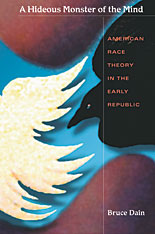 A Hideous Monster of the Mind: American Race Theory in the Early Republic
Bruce Dain
Harvard University Press, 2002 The intellectual history of race, one of the most pernicious and enduring ideas in American history, has remained segregated into studies of black or white traditions. Bruce Dain breaks this separatist pattern with an integrated account of the emergence of modern racial consciousness in the United States from the Revolution to the Civil War. A Hideous Monster of the Mind reveals that ideas on race crossed racial boundaries in a process that produced not only well-known theories of biological racism but also countertheories that were early expressions of cultural relativism, cultural pluralism, and latter-day Afrocentrism.
From 1800 to 1830 in particular, race took on a new reality as Americans, black and white, reacted to postrevolutionary disillusionment, the events of the Haitian Revolution, the rise of cotton culture, and the entrenchment of slavery. Dain examines not only major white figures like Thomas Jefferson and Samuel Stanhope Smith, but also the first self-consciously "black" African-American writers. These various thinkers transformed late-eighteenth-century European environmentalist "natural history" into race theories that combined culture and biology and set the terms for later controversies over slavery and abolition. In those debates, the ethnology of Samuel George Morton and Josiah Nott intertwined conceptually with important writing by black authors who have been largely forgotten, like Hosea Easton and James McCune Smith. Scientific racism and the idea of races as cultural constructions were thus interrelated aspects of the same effort to explain human differences.
In retrieving neglected African-American thinkers, reestablishing the European intellectual background to American racial theory, and demonstrating the deep confusion "race" caused for thinkers black and white, A Hideous Monster of the Mind offers an engaging and enlightening new perspective on modern American racial thought.
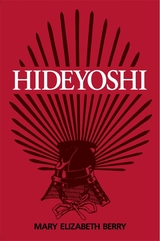 Hideyoshi
Mary Elizabeth Berry
Harvard University Press, 1982 Here is the first full-length biography in English of the most important political figure in premodern Japan.
Hideyoshi—peasant turned general, military genius, and imperial regent of Japan—is the subject of an immense legendary literature. He is best known for the conquest of Japan’s sixteenth-century warlords and the invasion of Korea. He is known, too, as an extravagant showman who rebuilt cities, erected a colossal statue of the Buddha, and entertained thousands of guests at tea parties. But his lasting contribution is as governor whose policies shaped the course of Japanese politics for almost three hundred years.
In Japan’s first experiment with federal rule, Hideyoshi successfully unified two hundred local domains under a central authority. Mary Elizabeth Berry explores the motives and forms of this new federalism which would survive in Japan until the mid-nineteenth century, as well as the philosophical question it raised: What is the proper role of government? This book reflects upon both the shifting political consciousness of the late sixteenth century and the legitimation rituals that were invoked to place change in a traditional context. It also reflects upon the architect of that change—a troubled parvenu who acted often with moderation and sometimes with explosive brutality.
 Hiding
Mark C. Taylor
University of Chicago Press, 1997 The age of information, media, and virtuality is transforming every aspect of human experience. Questions that have long haunted the philosophical imagination are becoming urgent practical concerns: Where does the natural end and the artificial begin? Is there a difference between the material and the immaterial? In his new work, Mark C. Taylor extends his ongoing investigation of postmodern worlds by critically examining a wide range of contemporary cultural practices.
Nothing defines postmodernism so well as its refusal of depth, its emphasis on appearance and spectacle, its tendency to collapse a three-dimensional world in which image and reality are distinct into a two-dimensional world in which they merge. The postmodern world, Taylor argues, is a world of surfaces, and the postmodern condition is one of profound superficiality.
For many cultural commentators, postmodernism's inescapable play of surfaces is cause for despair. Taylor, on the other hand, shows that the disappearance of depth in postmodern culture is actually a liberation repleat with creative possibilities. Taylor introduces readers to a popular culture in which detectives—the postmodern heroes of Paul Auster and Dennis Potter—lift surfaces only to find more surfaces, and in which fashion advertising plays transparency against hiding. Taylor looks at the contemporary preoccupation with body piercing and tattooing, and asks whether these practices actually reveal or conceal. Phrenology and skin diseases, the "religious" architecture of Las Vegas, the limitless spread of computer networks—all are brought within the scope of Taylor's brilliant analysis. Postmodernism, he shows, has given us a new sense of the superficial, one in which the issue is not the absence of meaning but its uncontrollable, ecstatic proliferation.
Embodying the very tendencies it analyzes, Hiding is unique. Conceived and developed with well-known designers Michael Rock and Susan Sellars, this work transgresses the boundary that customarily separates graphic design from the story within a text. The product of nearly three decades of reflection and writing, Hiding opens a window on contemporary culture. To follow the remarkable course Taylor charts is to see both our present and past differently and to encounter a future as disorienting as it is alluring.
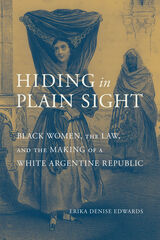 Hiding in Plain Sight: Black Women, the Law, and the Making of a White Argentine Republic
Erika Denise Edwards
University of Alabama Press, 2020 Winner of The Association of Black Women Historians 2020 Letitia Woods-Brown Award for the best book in African American Women’s History and the 2021 Western Association of Women Historian's Barbara "Penny" Kanner Award
2021 Finalist for the Harriet Tubman Book Prize
2020 Finalist Berkshire Conference of Women Historians Book Prize
Details how African-descended women’s societal, marital, and sexual decisions forever reshaped the racial makeup of Argentina
Argentina promotes itself as a country of European immigrants. This makes it an exception to other Latin American countries, which embrace a more mixed—African, Indian, European—heritage. Hiding in Plain Sight: Black Women, the Law, and the Making of a White Argentine Republic traces the origins of what some white Argentines mischaracterize as a “black disappearance” by delving into the intimate lives of black women and explaining how they contributed to the making of a “white” Argentina. Erika Denise Edwards has produced the first comprehensive study in English of the history of African descendants outside of Buenos Aires in the late colonial and early republican periods, with a focus on how these women sought whiteness to better their lives and that of their children.
Edwards argues that attempts by black women to escape the stigma of blackness by recategorizing themselves and their descendants as white began as early as the late eighteenth century, challenging scholars who assert that the black population drastically declined at the end of the nineteenth century because of the whitening or modernization process. She further contends that in Córdoba, Argentina, women of African descent (such as wives, mothers, daughters, and concubines) were instrumental in shaping their own racial reclassifications and destinies.
This volume makes use of a wealth of sources to relate these women’s choices. The sources consulted include city censuses and notarial and probate records that deal with free and enslaved African descendants; criminal, ecclesiastical, and civil court cases; marriages and baptisms records and newsletters. These varied sources provide information about the day-to-day activities of cordobés society and how women of African descent lived, formed relationships, thrived, and partook in the transformation of racial identities in Argentina.
Hiding Making - Showing Creation: The Studio from Turner to Tacita Dean
Edited by Rachel Esner, Sandra Kisters, and Ann-Sophie Lehmann
Amsterdam University Press, 2013 The artist, at least according to Honoré de Balzac, is at work when he seems to be at rest; his labor is not labor but repose. This observation provides a model for modern artists and their relationship to both their place of work—the studio—and what they do there. Examining the complex relationship between process, product, artistic identity, and the artist’s studio—in all its various manifestations—the contributors to this volume consider the dichotomy between conceptual and material aspects of art production. The essays here also explore the studio as a form of inspiration, meaning, function, and medium, from the nineteenth century up to the present.
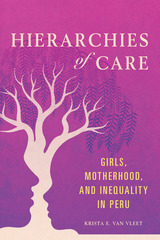 Hierarchies of Care: Girls, Motherhood, and Inequality in Peru
Krista E. Van Vleet
University of Illinois Press, 2019 Palomitáy is an orphanage in highland Peru that provides a home for unmarried mothers as young as twelve years old. In their ordinary lives, these young women encounter diverse social expectations and face moral dilemmas. They endeavor to create a ‘good life’ for themselves and their children in a context complicated by competing demands, economic uncertainties, and structured relations of power. Drawing on a year of qualitative on-site research, Krista E. Van Vleet offers a rich ethnography of Palomitáy's young women. She pays particular attention to the moral entanglements that emerge via people's efforts to provide care amid the inequalities and insecurities of today's Peru. State and nonstate participants involved in the women's intimate lives influence how the women see themselves as mothers, students, and citizens. Both deserving of care and responsible for caring for others, the young women must navigate practices interwoven with a range of a racial, gendered, and class hierarchies. Groundbreaking and original, Hierarchies of Care highlights the moral engagement of young women seeking to understand themselves and their place in society in the presence of circumstances that are both precarious and full of hope.
Hierarchy, Commerce, and Fraud in Bourbon Spanish America: A Postal Inspector's Expose
Ruth Hill
Vanderbilt University Press, 2021 Using El lazarillo de ciegos caminantes (the "Guide for Blind Rovers" by Alonso Carrio de Lavandera, the best known work of the era) as a jumping off point for a sprawling discussion of 18th-century Spanish America, Ruth Hill argues for a richer, more nuanced understanding of the relationship between Spain and its western colonies. Armed with primary sources including literature, maps, census data, letters, and diaries, Hill reveals a rich world of intrigue and artifice, where identity is surprisingly fluid and always in question. More importantly, Hill crafts a complex argument for reassessing our understanding of race and class distinctions at the time, with enormous implications for how we view conceptions of race and class today.
Hierarchy, History, and Human Nature: The Social Origins of Historical Consciousness
Donald E. Brown
University of Arizona Press, 1988
"Here is a book that I can strongly recommend for a variety of reasons. It is well written, it is scholarly, but its greatest appeal lies in the posing of an important question and in the offering of a satisfying (to this reviewer, at least) answer."—Journal of Historical Geography
"This is an intriguing and stimulating study of historical differences in the indigenous historiography of parts of Asia, the Middle East, and Europe."—American Anthropologist.
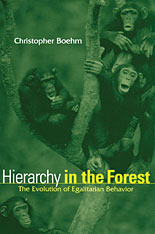 Hierarchy in the Forest: The Evolution of Egalitarian Behavior
Christopher Boehm
Harvard University Press, 2001 Are humans by nature hierarchical or egalitarian? Hierarchy in the Forest addresses this question by examining the evolutionary origins of social and political behavior. Christopher Boehm, an anthropologist whose fieldwork has focused on the political arrangements of human and nonhuman primate groups, postulates that egalitarianism is in effect a hierarchy in which the weak combine forces to dominate the strong.
The political flexibility of our species is formidable: we can be quite egalitarian, we can be quite despotic. Hierarchy in the Forest traces the roots of these contradictory traits in chimpanzee, bonobo, gorilla, and early human societies. Boehm looks at the loose group structures of hunter-gatherers, then at tribal segmentation, and finally at present-day governments to see how these conflicting tendencies are reflected.
Hierarchy in the Forest claims new territory for biological anthropology and evolutionary biology by extending the domain of these sciences into a crucial aspect of human political and social behavior. This book will be a key document in the study of the evolutionary basis of genuine altruism.
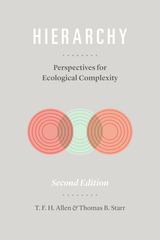 Hierarchy: Perspectives for Ecological Complexity
T. F. H. Allen and Thomas B. Starr
University of Chicago Press, 2017 Although complexity surrounds us, its inherent uncertainty, ambiguity, and contradiction can at first make complex systems appear inscrutable. Ecosystems, for instance, are nonlinear, self-organizing, seemingly chaotic structures in which individuals interact both with each other and with the myriad biotic and abiotic components of their surroundings across geographies as well as spatial and temporal scales. In the face of such complexity, ecologists have long sought tools to streamline and aggregate information. Among them, in the 1980s, T. F. H. Allen and Thomas B. Starr implemented a burgeoning concept from business administration: hierarchy theory. Cutting-edge when Hierarchy was first published, their approach to unraveling complexity is now integrated into mainstream ecological thought.
This thoroughly revised and expanded second edition of Hierarchy reflects the assimilation of hierarchy theory into ecological research, its successful application to the understanding of complex systems, and the many developments in thought since. Because hierarchies and levels are habitual parts of human thinking, hierarchy theory has proven to be the most intuitive and tractable vehicle for addressing complexity. By allowing researchers to look explicitly at only the entities and interconnections that are relevant to a specific research question, hierarchically informed data analysis has enabled a revolution in ecological understanding. With this new edition of Hierarchy, that revolution continues.
Hieroglyphs of Another World: On Poetry, Swedenborg, and Other Matters
Ilya Kutik
Northwestern University Press, 2000 The author of several volumes of poetry in Russian and English, Ilya Kutik is also a consummate essayist in the Russian tradition: aphoristic, allusive, deploying unlikely juxtapositions and poetic measures to arrive at surprising and gratifying insights. In this first English-language collection of Kutik's essays, readers encounter one of the best and most original contemporary Russian stylists.
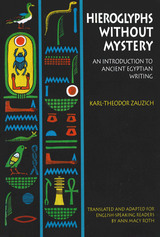 Hieroglyphs without Mystery: An Introduction to Ancient Egyptian Writing
By Karl-Theodor Zauzich
University of Texas Press, 1992 Marveling over the tomb treasures of Ramses II and Tutankhamen that have toured U.S. and European museums in recent years, visitors inevitably wonder what the mysterious hieroglyphs that cover their surfaces mean. Indeed, everyone who is fascinated by ancient Egypt sooner or later wishes for a Rosetta stone to unlock the secrets of hieroglyphic writing. Hieroglyphs without Mystery provides the needed key. Written for ordinary people with no special language skills, the book quickly demonstrates that hieroglyphic writing can be read, once a few simple principles are understood. Zauzich explains the basic rules of the writing system and the grammar and then applies them to thirteen actual inscriptions taken from objects in European and Egyptian museums. By following his explanations and learning the most commonly used glyphs, readers can begin to decode hieroglyphs themselves and increase their enjoyment of both museum objects and ancient Egyptian sites. Even for the armchair traveler, learning about hieroglyphs opens a sealed door into ancient Egyptian culture. In examining these inscriptions, readers will gain a better understanding of Egyptian art, politics, and religion, as well as language. This book was originally published in Germany in 1980 as Hieroglyphen ohne Geheimnis.
 Higglers in Kingston: Women's Informal Work in Jamaica
Winnifred Brown-Glaude
Vanderbilt University Press, 2011 Making a living in the Caribbean requires resourcefulness and even a willingness to circumvent the law. Women of color in Jamaica encounter bureaucratic mazes, neighborhood territoriality, and ingrained racial and cultural prejudices. For them, it requires nothing less than a herculean effort to realize their entrepreneurial dreams.
In Higglers in Kingston, Winnifred Brown-Glaude puts the reader on the ground in frenetic urban Kingston, the capital and largest city in Jamaica. She explores the lives of informal market laborers, called "higglers," across the city as they navigate a corrupt and inaccessible "official" Jamaican economy. But rather than focus merely on the present-day situation, she contextualizes how Jamaica arrived at this point, delving deep into the island's history as a former colony, a home to slaves and masters alike, and an eventual nation of competing and conflicted racial sectors.
Higglers in Kingston weaves together contemporary ethnography, economic history, and sociology of race to address a broad audience of readers on a crucial economic and cultural center.
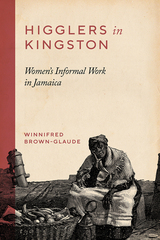 Higglers in Kingston: Women's Informal Work in Jamaica
Winnifred Brown-Glaude
Vanderbilt University Press, 2011 Making a living in the Caribbean requires resourcefulness and even a willingness to circumvent the law. Women of color in Jamaica encounter bureaucratic mazes, neighborhood territoriality, and ingrained racial and cultural prejudices. For them, it requires nothing less than a herculean effort to realize their entrepreneurial dreams.
In Higglers in Kingston, Winnifred Brown-Glaude puts the reader on the ground in frenetic urban Kingston, the capital and largest city in Jamaica. She explores the lives of informal market laborers, called "higglers," across the city as they navigate a corrupt and inaccessible "official" Jamaican economy. But rather than focus merely on the present-day situation, she contextualizes how Jamaica arrived at this point, delving deep into the island's history as a former colony, a home to slaves and masters alike, and an eventual nation of competing and conflicted racial sectors.
Higglers in Kingston weaves together contemporary ethnography, economic history, and sociology of race to address a broad audience of readers on a crucial economic and cultural center.
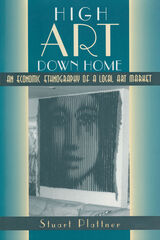 High Art Down Home: An Economic Ethnography of a Local Art Market
Stuart Plattner
University of Chicago Press, 1996 How do artists, collectors, dealers, and curators whose lives and livelihoods are so intimately affected by the valuation of art manage to cope with such an intangible market?
To answer this question, Stuart Plattner eschews the spotlights and media-hype of glitzy New York galleries, and focuses instead upon the more localized, and much more typical, world of the St. Louis art scene. What emerges is the most comprehensive description ever published of a contemporary regional avant-garde center, where noble aesthetic ambitions compete with the exigencies of economic survival. Plattner's skillful use of in-depth interviews enables the market's key participants to speak for themselves, giving voice to the many frustrations and rewards, motivations and constraints that influence their interactions with their work, the market, and each other.
"Plattner analyzes the social and economic factors that govern art markets outside the long shadow cast by chic New York galleries. An insightful and fascinating work."—Library Journal
"Explains much about the conundrums and paradoxes of the art world as a whole."—Eddie Silva, Riverfront Times
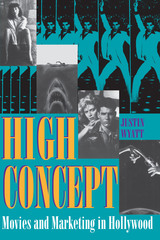 High Concept: Movies and Marketing in Hollywood
By Justin Wyatt
University of Texas Press, 1994 Steven Spielberg once said, "I like ideas, especially movie ideas, that you can hold in your hand. If a person can tell me the idea in twenty-five words or less, it's going to make a pretty good movie." Spielberg's comment embodies the essence of the high concept film, which can be condensed into one simple sentence that inspires marketing campaigns, lures audiences, and separates success from failure at the box office. This pioneering study explores the development and dominance of the high concept movie within commercial Hollywood filmmaking since the late 1970s. Justin Wyatt describes how box office success, always important in Hollywood, became paramount in the era in which major film studios passed into the hands of media conglomerates concerned more with the economics of filmmaking than aesthetics. In particular, he shows how high concept films became fully integrated with their marketing, so that a single phrase ("Just when you thought it was safe to go back in the water...") could sell the movie to studio executives and provide copy for massive advertising campaigns; a single image or a theme song could instantly remind potential audience members of the movie, and tie-in merchandise could generate millions of dollars in additional income.
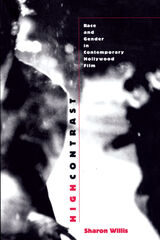 High Contrast: Race and Gender in Contemporary Hollywood Films
Sharon Willis
Duke University Press, 1997 In High Contrast, Sharon Willis examines the dynamic relationships between racial and sexual difference in Hollywood film from the 1980s and 1990s. Seizing on the way these differences are accentuated, sensationalized, and eroticized on screen—most often with little apparent regard for the political context in which they operate—Willis restores that context through close readings of a range of movies from cinematic blockbusters to the work of the new auteurs, Spike Lee, David Lynch, and Quentin Tarantino.
Capturing the political complexity of these films, Willis argues that race, gender, and sexuality, as they are figured in the fantasy of popular film, do not function separately, but rather inform and determine each other’s meaning. She demonstrates how collective anxieties regarding social difference are mapped onto big budget movies like the Die Hard and Lethal Weapon series, Basic Instinct, Fatal Attraction, Thelma and Louise, Terminator 2, and others. Analyzing the artistic styles of directors Lynch, Tarantino, and Lee, in such films as Wild at Heart, Pulp Fiction, and Do the Right Thing, she investigates how these interactions of difference are linked to the production of specific authorial styles, and how race functions for each of these directors, particularly in relation to gender identity, erotics, and fantasy.
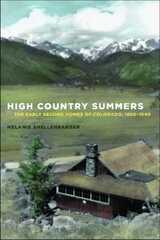 High Country Summers: The Early Second Homes of Colorado, 1880–1940
Melanie Shellenbarger
University of Arizona Press, 2012 High Country Summers considers the emergence of the “summer home” in Colorado’s Rocky Mountains as both an architectural and a cultural phenomenon. It offers a welcome new perspective on an often-overlooked dwelling and lifestyle. Writing with affection and insight, Melanie Shellenbarger shows that Colorado’s early summer homes were not only enjoyed by the privileged and wealthy but crossed boundaries of class, race, and gender. They offered their inhabitants recreational and leisure experiences as well as opportunities for individual re-invention—and they helped shape both the cultural landscapes of the American West and our ideas about it.
Shellenbarger focuses on four areas along the Front Range: Rocky Mountain National Park and its easterly gateway town, Estes Park; “recreation residences” in lands managed by the US Forest Service; Lincoln Hills, one of only a few African-American summer home resorts in the United States; and the foothills west of Denver that drew Front Range urbanites, including Denver’s social elite. From cottages to manor houses, the summer dwellings she examines were home to governors and government clerks; extended families and single women; business magnates and Methodist ministers; African-American building contractors and innkeepers; shop owners and tradespeople. By returning annually, Shellenbarger shows, they created communities characterized by distinctive forms of kinship.
High Country Summers goes beyond history and architecture to examine the importance of these early summer homes as meaningful sanctuaries in the lives of their owners and residents. These homes, which embody both the dwelling (the house itself) and dwelling (the act of summering there), resonate across time and place, harkening back to ancient villas and forward to the present day.
 High Desert Blood: The 1980 New Mexico Prison Riot and the Tragedy of the Williams Brothers
Andrew Brininstool
University of Iowa Press, 2025 When a cocksure father hatches a simple insurance fraud scheme, he has no idea its failure will lead his family into the maelstrom of America’s most violent prison riot. High Desert Blood takes you inside the walls of the Penitentiary of New Mexico, offering a gripping true crime journey through the heart of a system that failed its inmates, its staff, and the society it was meant to protect.
Through meticulous research and compelling storytelling, Andrew Brininstool unveils the conditions that led to the infamous 1980 riot, a catastrophic event that left a permanent scar on the American penal landscape. Snaking through the storyline, we meet Gary Williams, a nonviolent first-time offender thrust into a world of chaos, and his brother, Jeff, a career criminal who mysteriously vanishes during the riot. After his release, Gary’s relentless quest for the truth about his brother’s disappearance leads him to a similar tragic fate.
This book offers an unflinching look at the brutality and corruption that plagued the prison, shedding light on the systemic issues that made such a disaster inevitable. High Desert Blood is not just a chronicle of violence and despair; it’s a call for reform.
 High Desert, Higher Costs: Bend and the Housing Crisis in the American West
Jonathan Bach
Oregon State University Press, 2025 Nestled against the Cascade Mountains, former lumber town Bend, Oregon, entices residents who long to live in a wonderland of sagebrush and forests. But like so many other communities across the West, Bend has too few homes for everyone clambering for access. In High Desert, Higher Costs, Jonathan Bach takes a closer look at the housing crisis in this mid-sized city that is both the population center for rural Central Oregon and a major recreation area. Bach uses Bend as a lens into the growing housing crisis in the region, where residents and tourists alike prize access to outdoor recreation, and housing issues have been brewing for decades. Like other cities in Montana, Idaho, and Colorado, Bend serves as a gateway to popular natural areas while also experiencing a limited amount of new housing, increasing populations, amenity migrants in the age of remote work, depressed or stagnating wages, and a widening gulf between homeowners and renters. High Desert, Higher Costs introduces us to regular people—from the former political candidate evicted during COVID-19 to the nonprofit worker hoping to build apartments for the houseless—who struggle to call Bend home. Bach explores the causes of these issues and the political, legal, economic, and cultural factors influencing them, and also offers potential solutions for current and future residents to build their lives now, and in the years to come, in Bend and throughout the American West.
High Frequency MOSFET Gate Drivers: Technologies and applications
ZhiLiang Zhang
The Institution of Engineering and Technology, 2017 This book describes high frequency power MOSFET gate driver technologies, including gate drivers for GaN HEMTs, which have great potential in the next generation of switching power converters. Gate drivers serve as a critical role between control and power devices.
High Frontier: A History of Aeronautics in Pennsylvania
William F. Trimble
University of Pittsburgh Press, 1982 From the early days of hot air ballooning to supersonic aircraft, High Frontier chronicles the history of flight in Pennsylvania. Early experimentation with lighter-than-air craft in the nineteenth century was followed by significant advances in aerodynamics, the advent of the airplane, and its gradual acceptance by the public. The state had its own contingent of inventors and aviators, who flew and crashed their homemade machines in countless exhibitions. After World War I commercial flights took wing, including government airmail delivery, and expanded airports, federal and state regulation of aeronautics laid the groundwork for the growth of the industry.
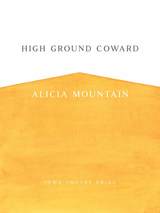 High Ground Coward
Alicia Mountain
University of Iowa Press, 2018 Alicia Mountain’s urgent and astonishing debut collection maps a new queer landscape through terrain alive and sensual, defiant and inviting. With a voice that beckons while it howls, Mountain nimbly traverses lyric, confessional, and narrative modes, leaving groundbreaking tracks for us to follow. High Ground Coward offers fists full of soil, leftovers for breakfast, road trip as ritual, twins of lovers and twins of ourselves. This world blooms with hunger-inducing detail, its speakers asking us to consider what it will take to satisfy our own appetites while simultaneously trying to nourish one another. “Ferocious, even the softest part,” Mountain shows us “a way to fall in love with wanting,” leaving us “ravenous, but gradually.” Bearing witness to identity formation in solitude and communion, High Ground Coward is an almanac of emotional and relational seasons. Mountain’s speakers question the meaning of inheritance, illness, violence, mythology, and family architecture. Whether Mountain is at work revealing the divinity of doubt, the entanglement of devotion, or the dominion that place holds over us, High Ground Coward heralds a thrilling poetic debut. From “Scavenger” We three eat food and are in love. This is the easy way to say there are stores beneath the floor. Potatoes and shallots, hard-necked garlic streaked purple, jars beside jars, themselves each staving globes of suction. Preservation, a guardian hunger. In the evening I whisper to the boiled beet, like a naked organ in my flushed hand: You are ground blood, you are new born, you have never been nothing— thawfruit seedflower greenstart rootbulb handpull shedscrub mouthsweet and again.
 High Hawk
Amy Frykholm
University of Iowa Press, 2024 PEN/Hemingway Award for Debut Novel 2025, Longlist
It’s 1970, and on the Windy Creek Reservation in South Dakota, amidst the rise of AIM in neighboring Pine Ridge, a baby boy appears nestled in a box of Styrofoam peanuts on the doorstep of St. Rose Catholic Church. His appearance disrupts the predictable, lonely life of longtime reservation priest Father Joe Kreitzer. The child, whom they name Bear, finds refuge under the care of Father Joe’s closest friend and ally, Alice Nighthawk.
Thirteen years pass without event, when Alice’s older son, Albert, is mysteriously murdered outside a bar in Rapid City, and Bear is accused of attempting to kill the only person who knows what happened that night. At the same time, Father Joe receives a letter from a person from his past, the only woman who made him question the path of priesthood. She has reached out to Father Joe as one of the few who might help her.
To keep Bear’s case from federal prosecution, Father Joe and Alice begin a search for Bear’s long-lost mother. But their journey unearths more than they bargained for, plunging Father Joe into a labyrinth of secrets and revelations. He is forced not only to confront the choices he’s made and the secrets he keeps, but also to see the truth of the lives of the people around him.
High Hawk is a rich tapestry of love and history, delving into the delicate intricacies of the past and the redemptive power of second chances. Through evocative prose, the lives of those on the fringes of American culture come alive, navigating adversity and forging
connections against all odds.
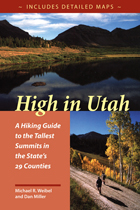 High in Utah
Michael Weibel
University of Utah Press, 1999 If you measured the highest point in each county, which of the fifty states would have the highest average elevation? You probably didn’t say Utah, but in fact the average elevation of the state’s county high points is approximately 11,222 feet (Colorado is second at 10,971 feet). Most but not all of Utah’s high peaks grow out of a series of mountain ranges that form a backbone from north to south through the middle of the state. Surprisingly, most can also be climbed in a day, and during the warm months climbing gear may be unnecessary. Some summits are even attainable by car.
High in Utah is quite consciously a book for peak baggers, complete with a checklist and elevations. Summits range from Kings Peak, Utah’s highest at 13,528’ to the unnamed peak in Rich County, a mere 9,255’. In addition to the county high points, this book also has four “classic” climbs: Mt. Olympus in Salt Lake County; Mt. Timpanogos above Provo; Notch Peak in the House Range west of Delta; and Wellsville Cone, Cache Valley’s western landmark.
Since finding a place to start can often be the most frustrating part of a hike, emphasis is placed on directions to each trailhead. There is a road map for each hike, as well as a trail map showing contours. The routes in this guide are not always the easiest or most practical, but they may be the most appealing and are often the most commonly used (lessening human impact on other potential routes). Difficulty levels range from 'extreme'—long, steep routes that may require some route finding—to 'too easy'—reachable by car. Two sets of hiking times are provided to accommodate variations in hiking speed, and there are also sections on flora and fauna, mountain weather, low-impact hiking and camping, equipment, and altitude sickness.
"Alaska is our biggest, buggiest, boggiest state. Texas remains our largest unfrozen state. But mountainous Utah, if ironed out flat, would take up more space on a map than either."
—Edward Abbey, 1927–1989
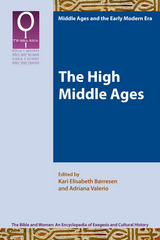 The High Middle Ages
Kari Elisabeth Børresen
SBL Press, 2015 An international collection of ecumenical, gender-sensitive interpretations
The latest volume in the Bible and Women series examines the relationship between women and the Bible's reception in the centuries of the High and Late Middle Ages in Europe. Contributors bring a variety of new insights to questions of how women of the Bible were treated in literary, mystical, and doctrinal texts as well as in art and music. Though the Bible was used to legitimize the subordination of women to men and to exclude them from power, during this period women produced works of theology and biblical interpretation. Contributors include Gemma Avenoza, Marina Benedetti, Dinora Corsi, Maria Laura Giordano, Elisabeth Gössmann, Maria Leticia Sánchez Hernández, Hildegund Keul, Linda Maria Koldau, Martina Kreidler-Kos, Rita Librandi, Gary Macy, Constant J. Mews, Magda Motté, Rosa María Parrinello, María Isabel Toro Pascua, Claudia Poggi, Carmel Posa, Marina Santini, Valeria Ferrari Schiefer, Andrea Taschl-Erber, Adriana Valerio, and Paola Vitolo.
Features
- Essays on the treatment of women in commentaries and didactic moral literature written by men
- Close study of women as scholars and interpreters of the Bible from the twelfth through the fifteen centuries
- Twenty-one essays from twenty-three scholars from around the world
 High Mountains Rising: Appalachia in Time and Place
Edited by Richard A. Straw and H. Tyler Blethen
University of Illinois Press, 2004 This collection is the first comprehensive, cohesive volume to unite Appalachian history with its culture. Richard A. Straw and H. Tyler Blethen's High Mountains Rising provides a clear, systematic, and engaging overview of the Appalachian timeline, its people, and the most significant aspects of life in the region. The first half of the fourteen essays deal with historical issues including Native Americans, pioneer settlement, slavery, the Civil War and Reconstruction, industrialization, the Great Depression, migration, and finally, modernization. The remaining essays take a more cultural focus, addressing stereotypes, music, folklife, language, literature, and religion. Bringing together many of the most prestigious scholars in Appalachian studies, this volume has been designed for general and classroom use, and includes suggestions for further reading.
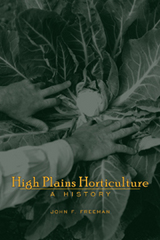 High Plains Horticulture: A History
John F. Freeman
University Press of Colorado, 2008 High Plains Horticulture explores the significant, civilizing role that horticulture has played in the development of farmsteads and rural and urban communities on the High Plains portions of Colorado, Kansas, Nebraska, South Dakota, and Wyoming, drawing on both the science and the application of science practiced since 1840. Freeman explores early efforts to supplement native and imported foodstuffs, state and local encouragement to plant trees, the practice of horticulture at the Union Colony of Greeley, the pioneering activities of economic botanists Charles Bessey (in Nebraska) and Aven Nelson (in Wyoming), and the shift from food production to community beautification as the High Plains were permanently settled and became more urbanized. In approaching the history of horticulture from the perspective of local and unofficial history, Freeman pays tribute to the tempered idealism, learned pragmatism, and perseverance of individuals from all walks of life seeking to create livable places out of the vast, seemingly inhospitable High Plains. He also suggests that, slowly but surely, those that inhabit them have been learning to adjust to the limits of that fragile land. High Plains Horticulture will appeal to not only scientists and professionals but also gardening enthusiasts interested in the history of their hobby on the High Plains.
The High Priests of American Politics: The Role of Lawyers in American Political Institutions
Mark C. Miller
University of Tennessee Press, 2002 Using a multidisciplinary approach, Mark C. Miller draws in large part on interviews he conducted with members of the U.S. House of Representatives, the Ohio legislature, and the Massachusetts legislature. From this rich data, he shows how American lawyers are socialized into a common legal ideology, which in turn shapes the behavior of individual lawyer-politicians, legislative committees dominated by lawyers, and the entire legislative institutions of government.
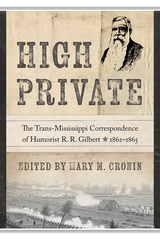 High Private: The Trans-Mississippi Correspondence of Humorist R. R. Gilbert, 1862–1865
Mary M. Cronin
University of Tennessee Press, 2018
Rensselaer Reed Gilbert was one of the most prolific newspaper correspondents during the years of the U. S. Civil War. He penned several hundred news and editorial columns, as well as comic sketches, for the Houston Tri-Weekly Telegraph. An ardent Confederate nationalist, Gilbert was a strong supporter of states’ rights and the economic institution of slavery, despite the fact that he was a transplant from Vermont. High Private, titled after Gilbert’s newspaper persona, expands research into the field of Civil War-era humor writing and news reporting. Mary M. Cronin’s extensive look at Gilbert’s life and work introduces readers to the forgotten voice of a Trans-Mississippi comic, correspondent, and Southern advocate.
To date, humor research during the Civil War has focused on a limited canon of the nineteenth century’s leading comic voices. High Private not only provides new insight into this form of journalism but also addresses military humor produced while the author was in uniform. When he returned to civilian life, Gilbert wrote chiefly from various military commanders’ headquarters. His work records the social and political experiences of soldiers and civilians living in the Trans-Mississippi region, especially after it was cut off from the rest of the Confederacy following the capture of New Orleans in 1862.
Through parody and satire, Gilbert’s often sharp pen revealed uncomfortable truths, attacked sentimentality and pretension, provided emotional release for those living in the Trans-Mississippi area—particularly Texas, Louisiana, and Arkansas—and served as a critical voice for the region. That Gilbert remains readable today is a testament to his imagination, creativity, and power of observation. In writing about a journalist who covered both military and civilian affairs, Cronin reveals not only a talented writer but also an understudied region in the American Civil War through the keen eyes and pen of a working journalist.
High Quality Liquid Crystal Displays and Smart Devices: Development, display applications and components, Volume 1
Shoichi Ishihara
The Institution of Engineering and Technology, 2019 A liquid-crystal display (LCD) is a flat-panel display or other electronically-modulated optical device that uses the light-modulating properties of liquid crystals. Liquid Crystal Displays are already widely used in consumer electronics, but research and development is still ongoing. The shifting focus of research follows a pattern of improved definition, increased display size, wider viewing angles and faster responses, with improvements in each area influencing the next. There is also growing interest in the use of liquid crystal materials in novel applications including sensing devices, spatial modulators and light-shielding windows.
High Quality Liquid Crystal Displays and Smart Devices: Surface alignment, new technologies and smart device applications, Volume 2
Shoichi Ishihara
The Institution of Engineering and Technology, 2019 A liquid-crystal display (LCD) is a flat-panel display or other electronically-modulated optical device that uses the light-modulating properties of liquid crystals. Liquid Crystal Displays are already widely used in consumer electronics, but research and development is still ongoing. The shifting focus of research follows a pattern of improved definition, increased display size, wider viewing angles and faster responses, with improvements in each area influencing the next. There is also growing interest in the use of liquid crystal materials in novel applications including sensing devices, spatial modulators and light-shielding windows.
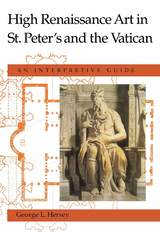 High Renaissance Art in St. Peter's and the Vatican: An Interpretive Guide
George L. Hersey
University of Chicago Press, 1993 Michelangelo, Raphael, Bramante—together these artists created some of the most glorious treasures of the Vatican, viewed daily by thousands of tourists. But how many visitors understand the way these artworks reflect the passions, dreams, and struggles of the popes who commissioned them? For anyone making an artistic pilgrimage to the High Renaissance splendors of the Vatican, George L. Hersey's book is the ideal guide.
Before starting the tour of individual works, Hersey describes how the treacherously shifting political and religious alliances of sixteenth-century Italy, France, and Spain played themselves out in the Eternal City. He offers vivid accounts of the lives and personalities of four popes, each a great patron of art and architecture: Julius II, Leo X, Clement VII, and Paul III. He also tells of the complicated rebuilding and expanding of St. Peter's, a project in which Bramante, Raphael, and Michelangelo all took part.
Having set the historical scene, Hersey then explores the Vatican's magnificent Renaissance art and architecture. In separate chapters, organized spatially, he leads the reader through the Cortile del Belvedere and Vatican Museums, with their impressive holdings of statuary and paintings; the richly decorated Stanze and Logge of Raphael; and Michelangelo's Last Judgment and newly cleaned Sistine Chapel ceiling. A fascinating final chapter entitled "The Tragedy of the Tomb" recounts the vicissitudes of Michelangelo's projected funeral monument to Julius II.
Hersey is never content to simply identify the subject of a painting or sculpture. He gives us the story behind the works, telling us what their particular themes signified at the time for the artist, the papacy, and the Church. He also indicates how the art was received by contemporaries and viewed by later generations.
Generously illustrated and complete with a useful chronology, High Renaissance Art in St. Peter's and the Vatican is a valuable reference for any traveler to Rome or lover of Italian art who has yearned for a single-volume work more informative and stimulating than ordinary guidebooks. At the same time, Hersey's many anecdotes and intriguing comparisons with works outside the Vatican will provide new insights even for specialists.
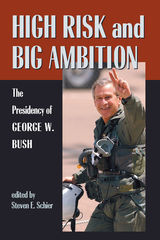 High Risk And Big Ambition: Presidency of George W. Bush
Steven Schier
University of Pittsburgh Press, 2004 Elected with no clear public mandate, George W. Bush achieved surprising legislative successes in his early months in the White House. Following September 11, 2001, his public support rose to unprecedented heights. Actions taken in the following months and years have revealed the exceptionally ambitious nature of the Bush presidency.
High Risk and Big Ambition brings together leading presidency scholars and journalists to assess the trajectory and character of Bush’s time in office. The common theme running through their contributions is that this presidency is best characterized by a series of bold political and policy risks in the service of two primary goals: the transformation of American foreign policy and the creation of a lasting Republican dominance of domestic politics.
Included are discussions of foreign policy, national security, the war in Iraq, Bush’s leadership style, religious politics, and economic policy. George W. Bush emerges as an "orthodox innovator" who skillfully deploys both personal politics and the power of his office in an effort to complete the conservative governmental agenda initiated by Ronald Reagan. Yet because of the size of his ambitions, each success sets up a greater risk of failure. That alone makes his presidency one of the most interesting and consequential in decades.
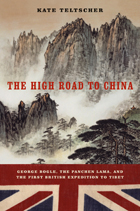 The High Road to China: George Bogle, the Panchen Lama, and the First British Expedition to Tibet
Kate Teltscher
Northwestern University Press, 2008 Touching, humorous, and illuminating, this travelogue takes readers back in time to a remarkable, world-shaping moment. With rich language and the help of a remarkable journal, author Kate Teltscher traces two extraordinary journeys across some of the harshest and highest terrain in the world: the first British expedition to Tibet and the Panchen Lama’s state visit to mark the Emperor’s seventieth birthday. In the late eighteenth century, with their empire expanding, the British sought a commercial opening to China. European traders were banned from China, but the cunning British East India Company saw a possible advocate in the Panchen Lama, the spiritual leader of the Buddhist people of Tibet. In the hopes of gaining access to Peking, they sent a young Scot named George Bogle as their envoy.
Bogle was able to gain an audience with the Panchen Lama, and in him he found much more than a business partner; the Incarnate Lama was a friendly man who loved to discuss politics, science, art, and culture. Bogle gradually became less of a tourist and less of a colonist, growing comfortable and happy the longer he spent in Tibet even as his mission to open China failed. All the while, he kept a detailed journal—his prose by turn playful, self-deprecating, grandiose, and shrewd—and this revelatory document gives readers an exhilarating front seat to the beginnings of international relationships that exert their effects even now.
Teltscher’s portrayal of Bogle’s unique diplomatic relationship with the holy man is an admission that history is made by people—and people have emotions, flaws, and feelings that enrich and affect history.
 The High School: Sports, Spirit, and Citizens, 1903-2024
Michael A. Messner
Rutgers University Press, 2025 High school yearbooks provide both a vivid snapshot of student life and a reflection of what the adults in the community valued the most. For instance, athletics are often covered more than academics, and boys’ sports routinely receive more attention than girls’ sports. But how have those values changed over time?
In The High School, acclaimed sociologist Michael A. Messner reads through 120 years of El Gabilan, the yearbook from his own alma mater, Salinas High School in California, where his father taught and coached. Treating the yearbooks as a historical archive, Messner makes surprising discoveries about the school he thought he knew so well. For example, over fifty years before Title IX, the earliest yearbooks gave equal spotlights to boys’ and girls’ athletics, while the cheerleaders were all boys.
Tracing American life and culture from 1903 to 2024, Messner illuminates shifts in social practices at his high school that reflect broader changes in American culture across the twentieth century. The High School spotlights how the meanings and iconography of certain activities have changed radically over the decades, even as the “sports spirit complex”—involving athletes, cheerleaders, band members, and community boosters—has remained a central part of the high school experience. By exploring evolving sports cultures, socioeconomic conditions, racial demographics, and gender norms, Messner offers a fresh perspective on a defining feature of American teenage life.
High Sierra
Edited, with an introduction by Douglas Gomery; Tino T. Balio, Series Editor
University of Wisconsin Press, 1979 High Sierra (1941) is a highly successful Warner Brothers gangster film of special interest to film scholars, and aficionados. It represented a turning point in the nature of gangster film of the 1930s. It was the film that launched Humphrey Bogart to stardom.And it is representative of the concerted efforts of the very b est of Warners' talent of the era. In a period of serious reassessment of the American film, this revised shooting script, never before published, provides valuable primary data for that reassessment.
High Speed Data Converters
Ahmed M.A. Ali
The Institution of Engineering and Technology, 2016 High speed data converters represent one of the most challenging, important and exciting analog and mixed-signal systems. They are ubiquitous in our modern and highly connected world. Understanding and designing this class of converters require proficiency in analog circuit design, digital design, and signal processing. This book covers high speed data converters from the perspective of a leading high speed ADC designer and architect, and with a strong emphasis on high speed Nyquist A/D converters.
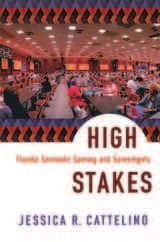 High Stakes: Florida Seminole Gaming and Sovereignty
Jessica R. Cattelino
Duke University Press, 2008 In 1979, Florida Seminoles opened the first tribally operated high-stakes bingo hall in North America. At the time, their annual budget stood at less than $2 million. By 2006, net income from gaming had surpassed $600 million. This dramatic shift from poverty to relative economic security has created tangible benefits for tribal citizens, including employment, universal health insurance, and social services. Renewed political self-governance and economic strength have reversed decades of U.S. settler-state control. At the same time, gaming has brought new dilemmas to reservation communities and triggered outside accusations that Seminoles are sacrificing their culture by embracing capitalism. In High Stakes, Jessica R. Cattelino tells the story of Seminoles’ complex efforts to maintain politically and culturally distinct values in a time of new prosperity. Cattelino presents a vivid ethnographic account of the history and consequences of Seminole gaming. Drawing on research conducted with tribal permission, she describes casino operations, chronicles the everyday life and history of the Seminole Tribe, and shares the insights of individual Seminoles. At the same time, she unravels the complex connections among cultural difference, economic power, and political rights. Through analyses of Seminole housing, museum and language programs, legal disputes, and everyday activities, she shows how Seminoles use gaming revenue to enact their sovereignty. They do so in part, she argues, through relations of interdependency with others. High Stakes compels rethinking of the conditions of indigeneity, the power of money, and the meaning of sovereignty.
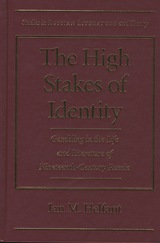 High Stakes of Identity: Gambling in the Life and Literature of Nineteenth-Century Russia
Ian M. Helfant
Northwestern University Press, 2002 Russian life and literature of the nineteenth century abounded with scenes of gambling--nowhere more prominently than in the lives and work of three of Russia's greatest writers: Pushkin, Tolstoi, and Dostoevskii. Focusing on the intersection of gambling performances in society and in literature, this book reveals the significance of gambling as an index of character in nineteenth-century Russia and traces its role in the fate of the gentry over the course of the century.
During the reigns of Alexander I and Nicholas I, Ian Helfant argues, gambling became an essential proving-ground and symbolic locus for noble identity in Russia--a way for the nobility to assert its values (fearlessness, disdain for money, implacable self-possession, deification of whim and will, and stylish performance) against nineteenth-century economics and bourgeois sentimentality. In <i>The High Stakes of Identity</i> Helfant's twin concerns are to analyze the structural components of the myth of the noble "beau joueur" and to show how gambling performances in society and in literature reciprocally reinforced, complicated, and eventually disintegrated its mystique.
Using a broad variety of sources--memoiristic, epistolary, journalistic, legal, fictional, theatrical--Helfant reconstructs both the prevalence and the particular codes of gambling's cultural system in the first few decades of the nineteenth century. These codes allow him to interpret the iconoclastic performances of truly legendary gamblers and to assess the importance and purpose of gambling in works ranging from Pushkin's "Queen of Spades" to Lermontov's "Masquerade." Throughout, Helfant gives voice to the rich variety of discourses, from tsarist laws to moralistic tracts, that came to bear on the culture of gambling in the 1830s and eventually led to its displacement as the key marker of nobility.
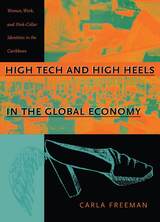 High Tech and High Heels in the Global Economy: Women, Work, and Pink-Collar Identities in the Caribbean
Carla Freeman
Duke University Press, 2000 High Tech and High Heels in the Global Economy is an ethnography of globalization positioned at the intersection between political economy and cultural studies. Carla Freeman’s fieldwork in Barbados grounds the processes of transnational capitalism—production, consumption, and the crafting of modern identities—in the lives of Afro-Caribbean women working in a new high-tech industry called “informatics.” It places gender at the center of transnational analysis, and local Caribbean culture and history at the center of global studies.
Freeman examines the expansion of the global assembly line into the realm of computer-based work, and focuses specifically on the incorporation of young Barbadian women into these high-tech informatics jobs. As such, Caribbean women are seen as integral not simply to the workings of globalization but as helping to shape its very form. Through the enactment of “professionalism” in both appearances and labor practices, and by insisting that motherhood and work go hand in hand, they re-define the companies’ profile of “ideal” workers and create their own “pink-collar” identities. Through new modes of dress and imagemaking, the informatics workers seek to distinguish themselves from factory workers, and to achieve these new modes of consumption, they engage in a wide array of extra income earning activities. Freeman argues that for the new Barbadian pink-collar workers, the globalization of production cannot be viewed apart from the globalization of consumption. In doing so, she shows the connections between formal and informal economies, and challenges long-standing oppositions between first world consumers and third world producers, as well as white-collar and blue-collar labor.
Written in a style that allows the voices of the pink-collar workers to demonstrate the simultaneous burdens and pleasures of their work, High Tech and High Heels in the Global Economy will appeal to scholars and students in a wide range of disciplines, including anthropology, cultural studies, sociology, women’s studies, political economy, and Caribbean studies, as well as labor and postcolonial studies.
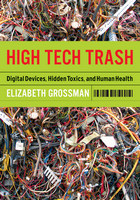 High Tech Trash: Digital Devices, Hidden Toxics, and Human Health
Elizabeth Grossman
Island Press, 2008 The Digital Age was expected to usher in an era of clean production, an alternative to smokestack industries and their pollutants. But as environmental journalist Elizabeth Grossman reveals in this penetrating analysis of high tech manufacture and disposal, digital may be sleek, but it's anything but clean. Deep within every electronic device lie toxic materials that make up the bits and bytes, a complex thicket of lead, mercury, cadmium, plastics, and a host of other often harmful ingredients.
High Tech Trash is a wake-up call to the importance of the e-waste issue and the health hazards involved. Americans alone own more than two billion pieces of high tech electronics and discard five to seven million tons each year. As a result, electronic waste already makes up more than two-thirds of the heavy metals and 40 percent of the lead found in our landfills. But the problem goes far beyond American shores, most tragically to the cities in China and India where shiploads of discarded electronics arrive daily. There, they are "recycled"-picked apart by hand, exposing thousands of workers and community residents to toxics.
As Grossman notes, "This is a story in which we all play a part, whether we know it or not. If you sit at a desk in an office, talk to friends on your cell phone, watch television, listen to music on headphones, are a child in Guangdong, or a native of the Arctic, you are part of this story."
The answers lie in changing how we design, manufacture, and dispose of high tech electronics. Europe has led the way in regulating materials used in electronic devices and in e-waste recycling. But in the United States many have yet to recognize the persistent human health and environmental effects of the toxics in high tech devices. If Silent Spring brought national attention to the dangers of DDT and other pesticides, High Tech Trash could do the same for a new generation of technology's products.
 High Tech Trash: Digital Devices, Hidden Toxics, and Human Health
Elizabeth Grossman
Island Press, 2007 The Digital Age was expected to usher in an era of clean production, an alternative to smokestack industries and their pollutants. But as environmental journalist Elizabeth Grossman reveals in this penetrating analysis of high tech manufacture and disposal, digital may be sleek, but it's anything but clean. Deep within every electronic device lie toxic materials that make up the bits and bytes, a complex thicket of lead, mercury, cadmium, plastics, and a host of other often harmful ingredients.
High Tech Trash is a wake-up call to the importance of the e-waste issue and the health hazards involved. Americans alone own more than two billion pieces of high tech electronics and discard five to seven million tons each year. As a result, electronic waste already makes up more than two-thirds of the heavy metals and 40 percent of the lead found in our landfills. But the problem goes far beyond American shores, most tragically to the cities in China and India where shiploads of discarded electronics arrive daily. There, they are "recycled"-picked apart by hand, exposing thousands of workers and community residents to toxics.
As Grossman notes, "This is a story in which we all play a part, whether we know it or not. If you sit at a desk in an office, talk to friends on your cell phone, watch television, listen to music on headphones, are a child in Guangdong, or a native of the Arctic, you are part of this story."
The answers lie in changing how we design, manufacture, and dispose of high tech electronics. Europe has led the way in regulating materials used in electronic devices and in e-waste recycling. But in the United States many have yet to recognize the persistent human health and environmental effects of the toxics in high tech devices. If Silent Spring brought national attention to the dangers of DDT and other pesticides, High Tech Trash could do the same for a new generation of technology's products.
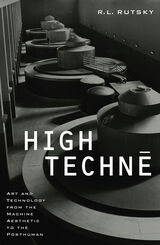 High Techne: Art and Technology from the Machine Aesthetic to the Posthuman
R.L. Rutsky
University of Minnesota Press, 1999 Explores our changing cultural perceptions of the relations between technology and art. In an age of high tech, our experience of technology has changed tremendously, yet the definition of technology has remained largely unquestioned. High Techne redresses this gap in thinking about technology, examining the shifting relations of technology, art, and culture from the beginnings of modernity to contemporary technocultures. Drawing on the Greek root of technology, (techne, generally translated as “art, skill, or craft”), R. L. Rutsky challenges both the modernist notion of technology as an instrument or tool and the conventional idea of a noninstrumental aesthetics. Today, technology and aesthetics have again begun to come together: even basketball shoes are said to exhibit a “high-tech style” and the most advanced technology is called “state of the art.” Rutsky charts the history and vicissitudes of this new high-tech techne up to our day—from Fritz Lang to Octavia Butler, Thomas Edison to Japanese Anime, constructivism to cyberspace.Progressing from the major art movements of modernism to contemporary science fiction and cultural theory, Rutsky provides clear and compelling evidence of a shift in the cultural conceptions of technology and art and demonstrates the centrality of technology to modernism and postmodernism.
High Times and Hard Times
George Washington Harris
Vanderbilt University Press Now back in print! The "major" minor American humorist of the early nineteenth century.
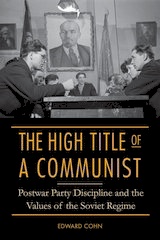 The High Title of a Communist: Postwar Party Discipline and the Values of the Soviet Regime
Edward Cohn
Northern Illinois University Press, 2015 Between 1945 and 1964, six to seven million members of the Communist Party of the Soviet Union were investigated for misconduct by local party organizations and then reprimanded, demoted from full party membership, or expelled. Party leaders viewed these investigations as a form of moral education and used humiliating public hearings to discipline wrongdoers and send all Soviet citizens a message about how Communists should behave.
The High Title of a Communist is the first study of the Communist Party’s internal disciplinary system in the decades following World War II. Edward Cohn uses the practices of expulsion and censure as a window into how the postwar regime defined the ideal Communist and the ideal Soviet citizen. As the regime grappled with a postwar economic crisis and evolved from a revolutionary prewar government into a more bureaucratic postwar state, the Communist Party revised its informal behavioral code, shifting from a more limited and literal set of rules about a party member’s role in the economy to a more activist vision that encompassed all spheres of life. The postwar Soviet regime became less concerned with the ideological orthodoxy and political loyalty of party members, and more interested in how Communists treated their wives, raised their children, and handled their liquor. Soviet power, in other words, became less repressive and more intrusive.
Cohn uses previously untapped archival sources and avoids a narrow focus on life in Moscow and Leningrad, combining rich local materials from several Russian provinces with materials from throughout the USSR. The High Title of a Communist paints a vivid portrait of the USSR’s postwar era that will help scholars and students understand both the history of the Soviet Union’s postwar elite and the changing values of the Soviet regime. In the end, it shows, the regime failed in its efforts to enforce a clear set of behavioral standards for its Communists––a failure that would threaten the party’s legitimacy in the USSR’s final days.
High Uinta Trails
John Veranth
University of Utah Press, 1998 An indispensable resource for selecting a destination and planning a trip in the High Uintas.
High Uinta Wilderness—three emotion-charged words that describe a very precious place. The highest mountains, the unique alpine ecosystem, and the largest designated Wilderness in Utah are all found here.
This is a complete rewriting of the original High Uinta Trails, first published in 1974. Access road and land management information has been expanded, new areas and routes have been added, and trail conditions have been completely updated.
The descriptions of the trails, lakes, ridges, and summits are an indispensable resource for selecting a destination and planning a trip but there are still plenty of undocumented places in the Uintas to explore.
High Voltage Direct Current Transmission
Jos Arrillaga
The Institution of Engineering and Technology, 1998 Since the first edition of this book in 1983, HVDC technology has continued to expand and few power systems can now escape its influence. This thoroughly revised text develops the coverage in the first edition, describing the variety of reasons justifying the use of DC transmission as well as the basic concepts and techniques involved in the AC-DC and DC-AC conversion processes. It has been fully updated and enlarged to include descriptions of the widening applications of DC, the current state-of-the-art thyristors and other semiconductor devices, and the new developments that continue to make HVDC a competitive technology.
High Voltage Engineering and Testing
Hugh M. Ryan
The Institution of Engineering and Technology, 2001 Based on a successful IEE International Vacation School series, this book aims to give an appreciation of present day high voltage transmission and distribution systems.
High Voltage Power Network Construction
Keith Harker
The Institution of Engineering and Technology, 2018 High Voltage Power Network Construction examines the key requirements, considerations, complexities and constraints relevant to the task of high voltage power network construction - from design, finance, contracts and project management to installation and commissioning - with the aim of providing an overview of the holistic end to end construction task in a single volume. It specifically targets the 400, 275,132 and 33 kV networks, presenting best and common practice.
High Voltage Power Transformers: State of the art and technological innovations
Stefano Zunino
The Institution of Engineering and Technology, 2024 Power transformers are static devices transferring electrical energy between two circuits with separate systems of alternating voltages, by means of electromagnetic induction. They are used to connect power networks and components with different voltage levels. Transformers are essential components for the transmission, distribution, and utilization of electric power in large power grids, which are facing increasingly demanding requirements for power quality, integration of renewable sources and demand side management. Transformers benefit from the recent technological developments in components, design and construction.
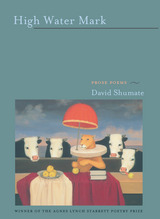 High Water Mark: Prose Poems
David Shumate
University of Pittsburgh Press, 2004 Everyday mindreading, a house full of Buddhas, and the papaya scent of the soul. An interview with Custer at a place of his choosing, “probably a steakhouse.” The ability of dogs to smell the uncool.
Hitler's barber imagines what might have been if only he'd leaned his weight into the razor. An oblivious Coronado narrowly avoids an ambush on the American plains. Freud lecherously lifts the skirt of a Mexican housekeeper who has far too much work to be bothered by “a pillar of modern thought. Or just some dirty old man.”
In lesser hands such disparate elements might fly wildly out of control. But in David Shumate's understated, brilliant prose poems, they come together in miraculously vivid riffs.
The narrator of the title poem rhapsodizes, “I wouldn't mind seeing another good flood before I die. It's been dry for decades. Next time I think I'll just let go and drift downstream and see where I end up.” Shumate's deft and refreshing collection takes us to amazing places with its plainspoken meditations.
High, Wide, and Frightened
Louise Thaden
University of Arkansas Press, 2004 Born in 1905 and raised in Arkansas, Louise Thaden attended the University of Arkansas from 1921 to 1925 before moving to California, where she earned her pilot’s certificate in 1927. Within the year, she had broken the women’s world record for altitude and endurance. In 1929 she won the first Women’s Air Derby, a transcontinental race. Over the next several years, Thaden continued to set records and win awards until 1938 when she retired to spend more time with her family and write these memoirs.
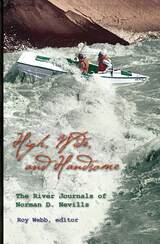 High Wide And Handsome: The River Journals of Norman D. Nevills
edited by Roy Webb
Utah State University Press, 2005 When he started taking paying passengers by boat through the rapids of the Colorado River's canyons, Norman Nevills invented whitewater tourism and the commercial river business. For twelve years, from 1938 until his death in a plane crash in 1949, he safely took, without a single life lost, friends, explorers, and customers down the Colorado, Green, San Juan, Salmon, and Snake Rivers in boats he designed. National media found him and his adventures irresistible and turned him into the personification of river running. Logging seven trips through the Grand Canyon when no one else had completed more than two, he was called the Fast Water Man. Boatmen he trained went on to found their own competing operations. Always controversial, Nevills had important critics and enemies as well as friends and supporters, but no one can dispute his tremendous impact on the history of western rivers and recreation. Nevills's complete extant journals of those river expeditions are published for the first time in High, Wide, and Handsome. They contain vivid stories and images of still untamed-by-dams rivers and canyons in the Colorado River system and elsewhere, of wild rides in wooden boats, and of the few intrepid pioneers of adventure tourism who paid Nevills so they could experience it all. They have been transcribed and edited by river historian Roy Webb, author of If We Had a Boat: Green River Explorers, Adventurers, and Runners and Call of the
Colorado.
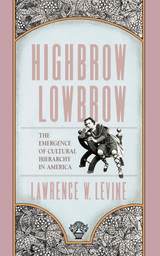 Highbrow/Lowbrow: The Emergence of Cultural Hierarchy in America
Lawrence Levine
Harvard University Press, 1988 In this unusually wide-ranging study, spanning more than a century and covering such diverse forms of expressive culture as Shakespeare, Central Park, symphonies, jazz, art museums, the Marx Brothers, opera, and vaudeville, a leading cultural historian demonstrates how variable and dynamic cultural boundaries have been and how fragile and recent the cultural categories we have learned to accept as natural and eternal are.
For most of the nineteenth century, a wide variety of expressive forms—Shakespearean drama, opera, orchestral music, painting and sculpture, as well as the writings of such authors as Dickens and Longfellow—enjoyed both high cultural status and mass popularity. In the nineteenth century Americans (in addition to whatever specific ethnic, class, and regional cultures they were part of) shared a public culture less hierarchically organized, less fragmented into relatively rigid adjectival groupings than their descendants were to experience. By the twentieth century this cultural eclecticism and openness became increasingly rare. Cultural space was more sharply defined and less flexible than it had been. The theater, once a microcosm of America—housing both the entire spectrum of the population and the complete range of entertainment from tragedy to farce, juggling to ballet, opera to minstrelsy—now fragmented into discrete spaces catering to distinct audiences and separate genres of expressive culture. The same transition occurred in concert halls, opera houses, and museums. A growing chasm between “serious” and “popular,” between “high” and “low” culture came to dominate America’s expressive arts.
“If there is a tragedy in this development,” Lawrence Levine comments, “it is not only that millions of Americans were now separated from exposure to such creators as Shakespeare, Beethoven, and Verdi, whom they had enjoyed in various formats for much of the nineteenth century, but also that the rigid cultural categories, once they were in place, made it so difficult for so long for so many to understand the value and importance of the popular art forms that were all around them. Too many of those who considered themselves educated and cultured lost for a significant period—and many have still not regained—their ability to discriminate independently, to sort things out for themselves and understand that simply because a form of expressive culture was widely accessible and highly popular it was not therefore necessarily devoid of any redeeming value or artistic merit.”
In this innovative historical exploration, Levine not only traces the emergence of such familiar categories as highbrow and lowbrow at the turn of the century, but helps us to understand more clearly both the process of cultural change and the nature of culture in American society.
High-Energy Radiation from Magnetized Neutron Stars
Peter Mészáros
University of Chicago Press, 1992 Neutron stars, the most extreme state of matter yet confirmed, are responsible for much of the high-energy radiation detected in the universe. Mèszàros provides a general overview of the physics of magnetized neutron stars, discusses in detail the radiation processes and transport properties relevant to the production and propagation of high-energy radiation in the outer layers of these objects, and reviews the observational properties and theoretical models of various types of neutron star sources.
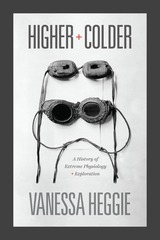 Higher and Colder: A History of Extreme Physiology and Exploration
Vanessa Heggie
University of Chicago Press, 2019 During the long twentieth century, explorers went in unprecedented numbers to the hottest, coldest, and highest points on the globe. Taking us from the Himalaya to Antarctica and beyond, Higher and Colder presents the first history of extreme physiology, the study of the human body at its physical limits. Each chapter explores a seminal question in the history of science, while also showing how the apparently exotic locations and experiments contributed to broader political and social shifts in twentieth-century scientific thinking.
Unlike most books on modern biomedicine, Higher and Colder focuses on fieldwork, expeditions, and exploration, and in doing so provides a welcome alternative to laboratory-dominated accounts of the history of modern life sciences. Though centered on male-dominated practices—science and exploration—it recovers the stories of women’s contributions that were sometimes accidentally, and sometimes deliberately, erased. Engaging and provocative, this book is a history of the scientists and physiologists who face challenges that are physically demanding, frequently dangerous, and sometimes fatal, in the interest of advancing modern science and pushing the boundaries of human ability.
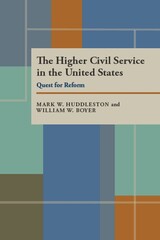 The Higher Civil Service in the United States: Quest for Reform
Mark W. Huddleston
University of Pittsburgh Press, 1996
Every time control of the U.S. presidency is passed from one party to another, the entire top layer of the executive branch changes. Thousands of men and women take down their pictures, pack up their desks, and move back into private life, just as others dust off their pictures and move in. The U.S. stands alone in this respect. Nearly every other advanced democracy is managed-save for elected officials and a few top aides-by an elite cadre of top civil servants selected by highly competitive examinations.
Hudleston and Boyer tell the story of U.S. efforts to develop higher civil service, beginning with the Eisenhower administration and culminating in the passage of the Civil Service Reform Act of 1978. Arguing that the highly-politicized U.S. system simply hasn't worked, they examine why and how reform efforts have failed and offer a series of recommendations for the future.
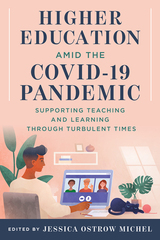 Higher Education amid the COVID-19 Pandemic: Supporting Teaching and Learning through Turbulent Times
Jessica Ostrow Michel
Rutgers University Press, 2024 The outbreak of COVID-19 caused unprecedented upheaval as countries across the globe raced to curb the already catastrophic spread of the disease while also planning for changes in every sector of society. In particular, the pandemic had a major effect on U.S. higher education, with most institutions pivoting to online teaching and forcing instructors and students adapt to a “new normal.” With so much uncertainty abounding, Higher Education amid the COVID-19 Pandemic documents first-hand experiences from faculty and students in order to help navigate the path to supporting teaching and learning in the wake of such turbulent times, and beyond. The essays in this volume contextualize the setting of higher education as the outbreak occurred, explore how faculty and students adapted their work-life (im)balance as they transitioned to distance learning, describe teaching and learning across institution types (such as community college, tribal college, historically black college and university), provide strategies for adjusting teaching based on discipline (such as art, biology, education), and look at emerging trends in the future of the professoriate. With essays from a diverse range of experts, this volume will serve as a comprehensive guide to many affected higher education communities.
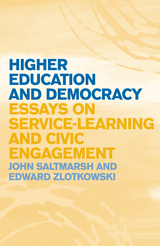 Higher Education and Democracy: Essays on Service-Learning and Civic Engagement
Edited by John Saltmarsh and Edward Zlotkowski
Temple University Press, 2011 Higher Education and Democracy is a collection of essays written over the last ten years on how civic engagement in higher education works to achieve what authors John Saltmarsh and Edward Zlotkowsi consider to be the academic and civic purposes of higher education. These include creating new modes of teaching and learning, fostering participation in American democracy, the development and respect for community and civic institutions, and encouraging the constant renewal all of these dimensions of American life. Organized chronologically, the twenty-two essays in this volume provide "signposts" along the road in the journey of fulfilling the civic purposes of higher education. For the authors, service-learning is positioned as centrally important to the primary academic systems and structures of higher education, departments, disciplines, curriculum, and programs that are central to the faculty domain. Progressing from the general and the contextual to specific practices embodied in ever larger academic units, the authors conclude with observations on the future of the civic engagement movement.
Higher Education and the American Dream: Success and Its Discontents
Marvin Lazerson
Central European University Press, 2007 Marvin Lazerson (professor at the Central European University and the University of Pennsylvania) considers the successes of higher education in the USA and how this has also bred discontent. He traces the development of higher education from the last half of the twentieth century, and considers why the expansion occurred, how it became an industry, and the increasing role of education in job attainment, as well as problems like rising costs, debates about the economic worth of higher education, and the decline in its civic, moral, and intellectual purposes. He also discusses changes in governance to a more business-like model, the managerial imperatives colleges face, changes to curriculum and research, and reform.
 Higher Education and the State in Latin America: Private Challenges to Public Dominance
Daniel C. Levy
University of Chicago Press, 1986 Latin America higher education has undergone an astonishing transformation in recent years, highlighted by the private sector's growth from 3 to 34 percent of the region's total enrollment. In this provocative work Daniel Levy examines the sources, characteristics, and consequences of the development and considers the privatization of higher education within the broader context of state-society relationships.
Levy shows how specific national circumstances cause variations and identifies three basic private-public patterns: one in which the private and public sectors are relatively similar and those in which one sector or the other is dominant. These patterns are analyzed in depth in case studies of Chile, Mexico, and Brazil. For each sector, Levy investigates origins and growth, and then who pays, who rules, and whose interests are served.
In addition to providing a wealth of information, Levy offers incisive analyses of the nature of public and private institutions. Finally, he explores the implications of his findings for concepts such as autonomy, corporatism, and privatization. His multifaceted study is a major contribution to the literature on Latin American studies, comparative politics, and higher education.
Higher Education as a Moral Enterprise
Edward LeRoy Long Jr.
Georgetown University Press, 1992 Long argues that higher education is a moral enterprise and that, as such, it must be guided by a commitments to what is morally right and fundamentally good, not just by what is necessary in intellectual or financial endeavors.
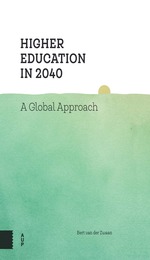 Higher Education in 2040: A Global Approach
Bert van der Zwaan
Amsterdam University Press, 2017 Since the Middle Ages, universities have displayed impressive resourcefulness in their ability to adapt to the changing dynamics and demands of their times. But in the last fifty years, the landscape of higher education - with the emergence of online and mass education, skyrocketing tuition, and a controversial system for ranking institutions - has begun evolving so rapidly and profoundly that the concept of the university now needs to be rethought.
This book explores the future of modern higher education by looking at it on a global scale. Bert van der Zwaan compares European developments with those taking place in North America and Asia to argue that the phoenix of an entirely new type of university will rise from the ashes of the classical system: less tied to buildings and set locations, the new university will embed itself more deeply in society by offering innovative forms of digital knowledge and making customized teaching available on demand. A timely discussion of a topic whose worldwide impact continues to grow, this is essential reading for anyone concerned about the state of higher education - both for today's students and in the decades to come.
Higher Education in the United States: A Summary View, Third Edition, Revised
Francis M. Rogers
Harvard University Press This concise, practical book, first published in 1952, not only offers foreign students and educators answers to their questions about higher education in the United States, but is, in addition, a useful guide to American students planning to teach on this level, and to college and university teachers in the junior ranks. In 1957, the United States Information Agency issued a second edition for use abroad.
The present edition is rigorously revised in response to discussion both here and abroad; recent developments are included and statistics are brought up to date. Fine new illustrations enhance the text.
 Higher Education in the United States: The Economic Problems
Seymour Edwin Harris
Harvard University Press The failure of economists to study the resource problems in higher education has left a crucial dilemma to be coped with by temporary and haphazard measures. This volume is based on a Seminar on Higher Education held in 1958-59, and attended, among others, by college administrators, economists, and educators. Although the limitation of financial resources is an essential consideration, the standard of educational values remained the major issue.
An indication of the volume's scope is given by the general divisions of the subject matter, which include: Pricing and the Student Body; Government Aid; Faculty Status; Experiment in Higher Education—Educational and Economic Issues; Economics and Educational Values; Investment and Endowment Policies. Among the distinguished contributors who present papers are Eldon J. Johnson, Rexford G. Moon, Jr., Barnaby C. Keeney, Otto Eckstein, Carl Kaysen, Charles W. Cole, and David Riesman; the papers are reproduced with minor authors' revisions.
The volume also includes an introduction by the editor and summaries of the Seminar discussions.
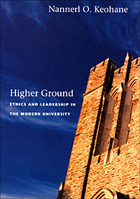 Higher Ground: Ethics and Leadership in the Modern University
Nannerl O. Keohane
Duke University Press, 2006 Nannerl O. Keohane is one of the most widely respected leaders in higher education. A political theorist who served as President of Wellesley College and Duke University, she has firsthand knowledge of the challenges facing modern universities: rising costs, the temptations of “corporatization,” consumerist students, nomadic faculty members, and a bewildering wave of new technologies. Her views on these issues and on the role and future of higher education are captured in Higher Ground, a collection of speeches and essays that she wrote over a twenty-year period. Keohane regards colleges and universities as intergenerational partnerships in learning and discovery, whose compelling purposes include not only teaching and research but also service to society. Their mission is to equip students with a moral education, not simply preparation for a career or professional school. But the modern era has presented universities and their leadership with unprecedented new challenges. Keohane worries about access to education in a world of rising costs and increasing economic inequality, and about threats to academic freedom and expressions of opinion on campus. She considers diversity as a key educational tool in our increasingly pluralistic campuses, ponders the impact of information technologies on the university’s core mission, and explores the challenges facing universities as they become more “global” institutions, serving far-flung constituencies while at the same time contributing to the cities and towns that are their institutional homes. Reflecting on the role of contemporary university leaders, Keohane asserts that while they have many problems to grapple with, they will find creative ways of dealing with them, just as their predecessors have done.
 Higher Ground: From Utopianism to Realism in American Feminist Thought and Theory
Sally L. Kitch
University of Chicago Press, 2000 Many feminists love a utopia—the idea of restarting humanity from scratch or transforming human nature in order to achieve a prescribed future based on feminist visions. Some scholars argue that feminist utopian fiction can be used as a template for creating such a future. However, Sally L. Kitch argues that associating feminist thought with utopianism is a mistake.
Drawing on the history of utopian thought, as well as on her own research on utopian communities, Kitch defines utopian thinking, explores the pitfalls of pursuing social change based on utopian ideas, and argues for a "higher ground" —a contrasting approach she calls realism. Replacing utopianism with realism helps to eliminate self-defeating notions in feminist theory, such as false generalization, idealization, and unnecessary dichotomies. Realistic thought, however, allows feminist theory to respond to changing circumstances, acknowledge sameness as well as difference, value the past and the present, and respect ideological give-and-take.
An important critique of feminist thought, Kitch concludes with a clear, exciting vision for a feminist future without utopia.
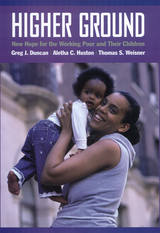 Higher Ground: New Hope for the Working Poor and Their Children
Greg J. Duncan
Russell Sage Foundation, 2007 During the 1990s, growing demands to end chronic welfare dependency culminated in the 1996 federal "welfare-to-work" reforms. But regardless of welfare reform, the United States has always been home to a large population of working poor—people who remain poor even when they work and do not receive welfare. In a concentrated effort to address the problems of the working poor, a coalition of community activists and business leaders in Milwaukee, Wisconsin, launched New Hope, an experimental program that boosted employment among the city's poor while reducing poverty and improving children's lives. In Higher Ground, Greg Duncan, Aletha Huston, and Thomas Weisner provide a compelling look at how New Hope can serve as a model for national anti-poverty policies. New Hope was a social contract—not a welfare program—in which participants were required to work a minimum of thirty hours a week in order to be eligible for earnings supplements and health and child care subsidies. All participants had access to career counseling and temporary community service jobs. Drawing on evidence from surveys, public records of employment and earnings, in-depth interviews, and ethnographic observation, Higher Ground tells the story of this ambitious three-year social experiment and evaluates how participants fared relative to a control group. The results were highly encouraging. Poverty rates declined among families that participated in the program. Employment and earnings increased among participants who were not initially working full-time, relative to their counterparts in a control group. For those who had faced just one significant barrier to employment (such as a lack of access to child care or a spotty employment history), these gains lasted years after the program ended. Increased income, combined with New Hope's subsidies for child care and health care, brought marked improvements to the well-being and development of participants' children. Enrollment in child care centers increased, and fewer medical needs went unmet. Children performed better in school and exhibited fewer behavioral problems, and gains were particularly dramatic for boys, who are at the greatest risk for poor academic performance and behavioral disorders. As America takes stock of the successes and shortcomings of the Clinton-era welfare reforms, the authors convincingly demonstrate why New Hope could be a model for state and national policies to assist the working poor. Evidence based and insightfully written, Higher Ground illuminates how policymakers can make work pay for families struggling to escape poverty.
 Higher Learning
Derek Bok
Harvard University Press, 1986 What is distinctive, Derek Bok asks, about the American system of higher education, and how well does it perform? In particular, just how good is the education our universities offer? Are they doing all they can to educate their students, or do teaching and learning get lost in the pressure for ever more prestigious research and publication? Bok concludes that the competition characteristic of American higher education—competition for the best students, the most advanced scholarship, the most successful scientific research, the best facilities—has helped to produce venturesome, adaptable, and varied universities. But because the process of learning itself is imperfectly understood, it is difficult to achieve sustained progress in the quality of education or even to determine which educational innovations actually enhance learning.
Despite these problems, the last fifteen years have produced many promising developments, such as experimental curricula, computer-assisted learning, much-expanded offerings for nontraditional students, clinical legal education, schools of public policy to prepare students for public service careers, and many more. Such initiatives need a more secure and central place within the regular curriculum. In addition to the traditional focus on program and curriculum, Bok stresses the need to pay greater attention to improving the effectiveness of teaching and learning. He calls for a number of steps, including a sustained program of research directed toward evaluating educational programs and methods of teaching. Only through careful experimentation and evaluation of its own efforts, through many small improvements and occasional inspired advances, can each university move toward the goal of giving its students the best possible preparation for life in an increasingly complex world.
Higher Mental Processes
Edited by Robert W. Proctor
University of Illinois Press, 2015 In this new book, Robert W. Proctor curates a collection of celebrated and seminal articles from the past 125 years of the American Journal of Psychology . The debut volume in the University of Illinois Press ™s Common Threads series, Higher Mental Processes reprints a suite of ten articles on processes of higher-order thinking. Proctor, current editor of the AJP , begins the volume with a special introduction that provides historical and scientific context for the contributions.
Contributors: P. Baratta, M. H. Birnbaum, M. E. Bulbrook, L. S. Buyer, R. A. Carlson, S. N. F. Chant, A. A. Cleveland, T. D. Cutsforth, R. L. Dominowski, E. Galanter, P. N. Johnson-Laird, M. G. Preston, Robert W. Proctor, and J. Tagart.
Higher-Order Techniques in Computational Electromagnetics
Roberto D. Graglia
The Institution of Engineering and Technology, 2016 Improvements in the accuracy, computational cost, and reliability of computational techniques for high-frequency electromagnetics (including antennas, microwave devices and radar scattering applications) can be achieved through the use of 'high-order' techniques. This book outlines these techniques by presenting high-order basis functions, explaining their use, and illustrating their performance. The specific basis functions under consideration were developed by the authors, and include scalar and vector functions for use with equations such as the vector Helmholtz equation and the electric field integral equation.
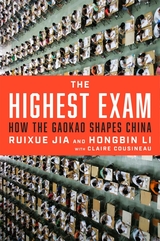 The Highest Exam: How the Gaokao Shapes China
Ruixue Jia and Hongbin Li with Claire Cousineau
Harvard University Press, 2025 Combining personal narratives with decades of research, a vivid account of how the gaokao—China’s high-stakes college admissions test—shapes that society and influences education debates in the United States.
Each year, more than ten million students across China pin their hopes on the gaokao, the nationwide college entrance exam. Unlike in the United States, where standardized tests are just one factor, in China college admission is determined entirely by gaokao performance. It is no wonder the test has become a national obsession.
Drawing on extensive surveys, historical research, and economic analysis, and informed by Ruixue Jia and Hongbin Li’s own experiences of the gaokao gauntlet, The Highest Exam reveals how China’s education system functions as a centralized tournament. It explains why preparation for the gaokao begins even before first grade—and why, given its importance for upward mobility, Chinese families are behaving rationally when they devote immense quantities of money and effort to acing the test. It shows how the exam system serves the needs of the Chinese Communist Party and drives much of the country’s economic growth. And it examines the gaokao’s far-reaching effects on China’s society, as the exam’s promise of meritocracy encourages citizens to focus on individual ability at the expense of considering socioeconomic inequalities.
What’s more, as the book makes clear, the gaokao is now also shaping debates around education in the United States. As Chinese-American families bring the expectations of the highest exam with them, their calls for objective, transparent metrics in the education system increasingly clash with the more holistic measures of achievement used by American schools and universities.
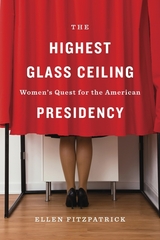 The Highest Glass Ceiling: Women’s Quest for the American Presidency
Ellen Fitzpatrick
Harvard University Press, 2016 In The Highest Glass Ceiling, best-selling historian Ellen Fitzpatrick tells the story of three remarkable women who set their sights on the American presidency. Victoria Woodhull (1872), Margaret Chase Smith (1964), and Shirley Chisholm (1972) each challenged persistent barriers confronted by women presidential candidates. Their quest illuminates today’s political landscape, showing that Hillary Clinton’s 2016 campaign belongs to a much longer, arduous, and dramatic journey.
The tale begins during Reconstruction when the radical Woodhull became the first woman to seek the presidency. Although women could not yet vote, Woodhull boldly staked her claim to the White House, believing she might thereby advance women’s equality. Republican Senator Margaret Chase Smith came into political office through the “widow’s mandate.” Among the most admired women in public life when she launched her 1964 campaign, she soon confronted prejudice that she was too old (at 66) and too female to be a creditable presidential candidate. She nonetheless became the first woman to have her name placed in nomination for President by a major party. Democratic Congresswoman Shirley Chisholm ignored what some openly described as the twin disqualifications of race and gender in her spirited 1972 presidential campaign. She ran all the way to the Democratic convention, inspiring diverse followers and angering opponents, including members of the Nixon administration who sought to derail her candidacy.
As The Highest Glass Ceiling reveals, women’s pursuit of the Oval Office, then and now, has involved myriad forms of influence, opposition, and intrigue.
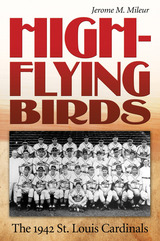 High-Flying Birds: The 1942 St. Louis Cardinals
Jerome M. Mileur
University of Missouri Press, 2009 1942: Americans suddenly found themselves at war but were not about to be distracted from the National Pastime. The Brooklyn Dodgers and New York Yankees were looking to continue their World Series rivalry from the 1941 season, and a youthful team from St. Louis was determined to stop them. With only one player older than thirty, the St. Louis Cardinals were the youngest team to win the National League pennant and World Series. Built on good pitching and tremendous speed on the base paths and in the field, the team featured rookie Stan Musial, future Hall of Famer Enos Slaughter, and ace pitcher Mort Cooper, the National League’s Most Valuable Player of 1942. With their winningest season ever, posting 106 victories, the 1942 Redbirds have been called the greatest Cardinal team of all time. Jerome Mileur was just a kid from downstate Illinois, but he well remembers his view of one game from the left-field grandstand—and the thrill of attending the second game of the World Series. In this book, he brings a sure and loving grasp of his subject to reconstructing one of the most remarkable pennant drives in modern baseball history, with the Cards winning forty-three of their last fifty-one games and clinching first place on the last day of the season. Mileur provides a game-by-game account of the season with play-by-play action, not only capturing all the thrills on the Cards’ way to the top but also conveying the physical and mental demands that the players endured. Counted out by nearly everyone but themselves in August, the Redbirds caught fire in the season’s final weeks to pass the seemingly unbeatable Dodgers. And by winning four games out of five to defeat the New York Yankees for the championship, they handed Joe DiMaggio his only World Series defeat. More than a recapitulation of a thrilling season, Mileur’s book is a reminder of how major-league baseball in 1942 differed in so many ways from today’s game—one startling example is Mileur’s account of how the absence of outfield warning tracks contributed to a devastating injury to Brooklyn’s star outfielder, Pete Reiser. The tenor of the times is reflected as well in the juxtaposition of the baseball season with the United States’ first year in the Second World War. The 1942 Cardinals were not only a remarkable team unto themselves but also the beginning of a new baseball dynasty—1942’s pennant was the first of three in a row for the Cards, as well as the first of three World Series victories in a space of five seasons. This account of that tremendous season is a page-turner for anyone who loves the game and a must-read for Cardinals fans.
High-frequency Circuit Engineering
F. Nibler
The Institution of Engineering and Technology, 1996 This book is aimed at both practising and postgraduate engineers who are interested in the particular problems of high-frequency circuit design. It covers network parameters and how to work with them, various approaches to the use of conductors, and it introduces a large number of circuits using active devices (transistors).
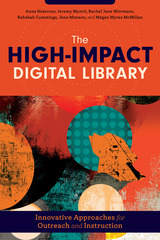 The High-Impact Digital Library: Innovative Approaches for Outreach and Instruction
Anna Neatrour, Jeremy Myntti, Rachel Jane Wittmann, Rebekah Cummings, Jane Monson, and Megan Myres McMillan, in collaboration with Core Publishing
American Library Association, 2025 Digital library terminology like “accessible,” “discoverable,” and “searchable” usually presumes passive collections waiting to be found by motivated information seekers. Rarely do we envision collection managers initiating outreach with those most likely to benefit from the collections. This new collection from Core flips the script, exploring the many ways that digital library practitioners at various types of cultural institutions proactively promote their unique resources. Providing both inspiration and pragmatic guidance to readers as they undertake their own initiatives, this book - discusses the results of a unique survey that provides new and structured information on digital library outreach and instruction;
- presents outreach case studies illustrating uses of social media promotion, integration of digital collections into teaching and instruction activities, partnerships with external campus units or community organizations, and other activities;
- explores many types of instruction, from drop-in class sessions and training to course-integrated instruction and ways that digital library practitioners can contribute to the Open Educational Resources (OER) and open pedagogy movements;
- details the digital humanities and digital scholarship programs developed at the University of Utah by many of the authors through cross-departmental collaboration;
- describes the ways in which the pandemic spurred many institutions to use rapid response collecting to practice community engagement; and
- speculates on future directions for outreach and instruction for digital libraries.
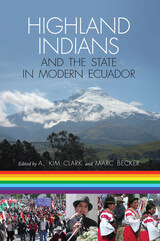 Highland Indians and the State in Modern Ecuador
A. Kim Clark
University of Pittsburgh Press, 2007
Highland Indians and the State in Modern Ecuador chronicles the changing forms of indigenous engagement with the Ecuadorian state since the early nineteenth century that, by the beginning of the twenty-first century, had facilitated the growth of the strongest unified indigenous movement in Latin America.
Built around nine case studies from nineteenth- and twentieth-century Ecuador, Highland Indians and the State in Modern Ecuador presents state formation as an uneven process, characterized by tensions and contradictions, in which Indians and other subalterns actively participated. It examines how indigenous peoples have attempted, sometimes successfully, to claim control over state formation in order to improve their relative position in society. The book concludes with four comparative essays that place indigenous organizational strategies in highland Ecuador within a larger Latin American historical context.
Highland Indians and the State in Modern Ecuador offers an interdisciplinary approach to the study of state formation that will be of interest to a broad range of scholars who study how subordinate groups participate in and contest state formation.
 Highland Park and River Oaks: The Origins of Garden Suburban Community Planning in Texas
By Cheryl Caldwell Ferguson
University of Texas Press, 2014 In the early twentieth century, developers from Baltimore to Beverly Hills built garden suburbs, a new kind of residential community that incorporated curvilinear roads and landscape design as picturesque elements in a neighborhood. Intended as models for how American cities should be rationally, responsibly, and beautifully modernized, garden suburban communities were fragments of a larger (if largely imagined) garden city—the mythical “good” city of U.S. city-planning practices of the 1920s. This extensively illustrated book chronicles the development of the two most fully realized garden suburbs in Texas, Dallas’s Highland Park and Houston’s River Oaks. Cheryl Caldwell Ferguson draws on a wealth of primary sources to trace the planning, design, financing, implementation, and long-term management of these suburbs. She analyzes homes built by such architects as H. B. Thomson, C. D. Hill, Fooshee & Cheek, John F. Staub, Birdsall P. Briscoe, and Charles W. Oliver. She also addresses the evolution of the shopping center by looking at Highland Park’s Shopping Village, which was one of the first in the nation. Ferguson sets the story of Highland Park and River Oaks within the larger story of the development of garden suburban communities in Texas and across America to explain why these two communities achieved such prestige, maintained their property values, became the most successful in their cities in the twentieth century, and still serve as ideal models for suburban communities today.
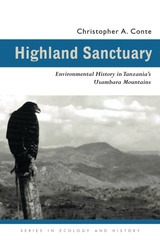 Highland Sanctuary: Environmental History in Tanzania’s Usambara Mountains
Christopher A. Conte
Ohio University Press, 2004 For more than a century, the world has recognized the extraordinary biological diversity of the forests of Tanzania’s Usambara Mountains. As international attention has focused on forest conservation, farmers, foresters, biologists, and the Tanzanian state have realized that only complex negotiations will save these treasured, but rapidly disappearing, landscapes. Highland Sanctuary unravels the complex interactions among agriculture, herding, forestry, the colonial state, and the landscape itself. In his examination of the region’s history of ecological transformation, Christopher Conte demonstrates how these forces have combined to create an ever-changing mosaic of forest and field. His study illuminates the debate over conservation, arguing that contingency and chance, the stuff of human history, have shaped forests in ways that rival the power of nature. In Highland Sanctuary, the forest becomes part of human history, rather than something outside of it. Highland Sanctuary cuts through a legacy of contention and ill will to inform contemporary conservation initiatives. Professor Conte explains how ecological changes take divergent paths in similar environments, in this case on mountains that harbor unique flora and fauna, and how these mountain environments achieve international importance as centers of biodiversity.
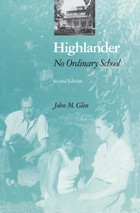 Highlander: No Ordinary School
John M. Glen
University of Tennessee Press, 1996 When John M. Glen's Highlander: No Ordinary School, 1932-1962 first appeared in 1988, it was hailed as a full and authoritative study of one of the South's most extraordinary and controversial institutions. Now, in this second edition, Glen updates Highlander's story through the 1990s. He incorporates newly available materials and the latest scholarship to detail the school's recent work in Appalachia, its efforts to bring international grassroots groups together on common issues, and its support of emerging economic and environmental justice campaigns.
First named the Highlander Folk School and established in 1932 by Myles Horton and Don West near Monteagle, Tennessee, this adult education center has been both a vital resource for southern and Appalachian activists and a catalyst for several major movements for social change. During its first thirty years, Highlander served as a community folk school, as a training center for southern labor and Farmer's Union members, and as a meeting place for black and white civil rights workers. Its advocacy of racial equality ultimately prompted the state of Tennessee to revoke the charter of the original institution in 1962. Undaunted, the school's officers reorganized the institution as the Highlander Research and Education Center in Knoxville, where it gave ongoing support to the civil rights movement and promoted a multiracial poor people's coalition. Today, operating in New Market, Tennessee, it continues to devise new strategies of progressive change from the experiences of ordinary people.
This comprehensive history offers a unique perspective on the movements, institutions, organizations, and individuals that permanently reshaped our understanding of the South and Appalachia in the twentieth century. It also suggests the range of problems and possibilities of using education to achieve economic, political, and racial justice.
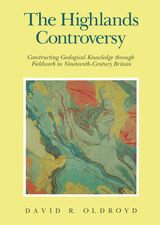 The Highlands Controversy: Constructing Geological Knowledge through Fieldwork in Nineteenth-Century Britain
David R. Oldroyd
University of Chicago Press, 1990 The Highlands Controversy is a rich and perceptive account of the third and last major dispute in nineteenth-century geology stemming from the work of Sir Roderick Murchison. The earlier Devonian and Cambrian-Silurian controversies centered on whether the strata of Devon and Wales should be classified by lithological or paleontological criteria, but the Highlands dispute arose from the difficulties the Scottish Highlands presented to geologists who were just learning to decipher the very complex processes of mountain building and metamorphism. David Oldroyd follows this controversy into the last years of the nineteenth century, as geology was transformed by increasing professionalization and by the development of new field and laboratory techniques. In telling this story, Oldroyd's aim is to analyze how scientific knowledge is constructed within a competitive scientific community—how theory, empirical findings, and social factors interact in the formation of knowledge.
Oldroyd uses archival material and his own extensive reconstruction of the nineteenth-century fieldwork in a case study showing how detailed maps and sections made it possible to understand the exceptionally complex geological structure of the Highlands
An invaluable addition to the history of geology, The Highlands Controversy also makes important contributions to our understanding of the social and conceptual processes of scientific work, especially in times of heated dispute.
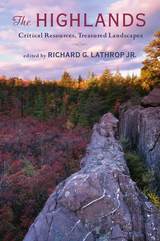 The Highlands: Critical Resources, Treasured Landscapes
Lathrop, Richard G
Rutgers University Press, 2011 Think of the Highlands as the “backyard” and “backstop” of the Philadelphia–New York–Hartford metroplex. A backyard that spans over three million acres across Pennsylvania, New York, and Connecticut, the Highlands serves as recreational open space for the metroplex’s burgeoning human population. As backstop, Highlands’ watersheds provide a ready source of high-quality drinking water for over fifteen million people. The Highlands is the first book to examine the natural and cultural landscape of this four-state region, showing how it’s distinctive and why its conservation is vital. Each chapter is written by a different leading researcher and specialist in that field, and introduces readers to another aspect of the Highlands: its geological foundations, its aquifers and watersheds, its forest ecology, its past iron industry. In the 1800s, the Highlands were mined, cutover, and then largely abandoned. Given time, the forests regenerated, the land healed, and the waters cleared. Increasingly, however, the Highlands are under assault again—polluted runoff contaminating lakes and streams, invasive species choking out the local flora and fauna, exurban sprawl blighting the rural landscape, and climate change threatening the integrity of its ecosystems. The Highlands makes a compelling case for land use planning and resource management strategies that could help ensure a sustainable future for the region, strategies that could in turn be applied to other landscapes threatened by urbanization across the country. The Highlands are a valuable resource. And now, so is The Highlands.
High-Level Manpower in Economical Development: The Turkish Case
Richard D. Robinson
Harvard University Press Turkish leaders appear convinced that education in its widest sense must be a basic consideration in the formulation of any long-range economic development or investment program. Because a number of novel experiments have already been attempted and more are being planned toward this end, the author believes that Turkey deserves the close attention of all educational policy makers concerned with manpower development.
 Highlights in the History of the American Press: A Book of Readings
Edwin H. Ford and Edwin Emery, Editors
University of Minnesota Press, 1954 Highlights in the History of the American Press was first published in 1954. Minnesota Archive Editions uses digital technology to make long-unavailable books once again accessible, and are published unaltered from the original University of Minnesota Press editions. The articles collected in this volume present a vivid panorama of American journalistic history from its antecedents in the English ballad singers to the press giants of modern times. Since there is probably no single force that has played a greater role in the history of America than its newspapers, the history of journalism tells, in large measure, the story of this country's political, social, and economic development. Therefore, this book of readings offers much to the students of the American scene, past and present, whether they are general readers or specialists in journalism, history, American studies, or any of the social sciences. The 27 articles included here have been chosen particularly for their readability and authenticity. They are by many different writers and are from a wide variety of periodicals published over the past 100 years. They are arranged according to six historical periods, covering the rise of the English press, the Colonial press, the nationalistic press of Revolutionary times, the popular press of the Jacksonian democracy, the transition press following the Civil War, and the modern era of mass circulation. An introductory essay for each group of articles places the individual studies in historical perspective and examines briefly the journalistic events not covered in detail by the articles themselves. The article authors include such notable names in American letters as Gamaliel Bradford, Will Irwin, William Allen White, John Dos Passos, and Henry F. Pringle. The coherent presentation of this diverse material should help anyone interested in the American newspaper get a better view of its broad scope, its lively color, and its profound influence on the course of history.
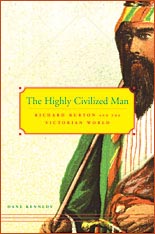 The Highly Civilized Man: Richard Burton and the Victorian World
Dane Kennedy
Harvard University Press, 2007 Richard Burton was one of Victorian Britain's most protean figures. A soldier, explorer, ethnographer, and polyglot of rare power, as well as a poet, travel writer, and translator of the tales of the Arabian Nights and the Kama Sutra, Burton exercised his abundant talents in a diverse array of endeavors. Though best remembered as an adventurer who entered Mecca in disguise and sought the source of the White Nile, Burton traveled so widely, wrote so prolifically, and contributed so forcefully to his generation's most contentious debates that heprovides us with a singularly panoramic perspective on the world of theVictorians.
One of the great challenges confronting the British in the nineteenth century was to make sense of the multiplicity of peoples and cultures they encountered in their imperial march around the globe. Burton played an important role in this mission. Drawing on his wide-ranging experiences in other lands and intense curiosity about their inhabitants, he conducted an intellectually ambitious, highly provocative inquiry into racial, religious, and sexual differences that exposed his own society's norms to scrutiny.
Dane Kennedy offers a fresh and compelling examination of Burton and his contribution to the widening world of the Victorians. He advances the view that the Victorians' efforts to attach meaning to the differences they observed among other peoples had a profound influence on their own sense of self, destabilizing identities and reshaping consciousness. Engagingly written and vigorously argued, The Highly Civilized Man is an important contribution to our understanding of a remarkable man and a crucial era.
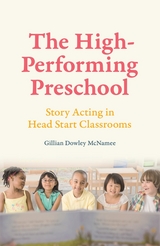 The High-Performing Preschool: Story Acting in Head Start Classrooms
Gillian Dowley McNamee
University of Chicago Press, 2015 The High-Performing Preschool takes readers into the lives of three- and four-year-old Head Start students during their first year of school and focuses on the centerpiece of their school day: story acting. In this activity, students act out stories from high-quality children’s literature as well as stories dictated by their peers. Drawing on a unique pair of thinkers—Russian psychologist Lev Vygotsky and renowned American teacher and educational writer Vivian G. Paley—Gillian Dowley McNamee elucidates the ways, and reasons, this activity is so successful. She shows how story acting offers a larger blueprint for curricula that helps ensure all preschools—not just those for society’s well-to-do—are excellent.
McNamee outlines how story acting cultivates children’s oral and written language skills. She shows how it creates a crucial opportunity for teachers to guide children inside the interior logic and premises of an idea, and how it fosters the creation of a literary community. Starting with Vygotsky and Paley, McNamee paints a detailed portrait of high-quality preschool teaching, showing how educators can deliver on the promise of Head Start and provide a setting for all young children to become articulate, thoughtful, and literate learners.
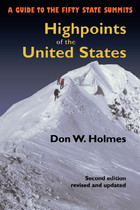 Highpoints of the United States: A Guide to the Fifty State Summits
Don Holmes
University of Utah Press, 2000
The highpoints of the fifty states range from Alaska’s 20,320 foot high Mount McKinley to 345 feet at Lakewood Park in Florida. Some highpoints, such as Mount Mitchell in North Carolina and New Hampshire’s Mount Washington can be reached by automobile on a sightseeing drive. Others such as Colorado’s Mount Elbert or Mount Marcy in New York are accessible as wilderness day hikes. Still others, such as Mount Rainier in Washington or Gannett Peak in Wyoming, are strenuous and risky mountaineering challenges that should be attempted only by experienced climbers. Whatever your level of skill and interest, Highpoints of the United States offers a diverse range of experiences.
Arranged alphabetically by state, each listing has a map, photographs, and information on trailhead, main and alternative routes, elevation gain, and conditions. Historical and natural history notes are also included, as are suggestions for specific guidebooks to a region or climb. Appendices include a list of highpoints by region, by elevation, and a personal log for the unashamed "peak-bagger."
Whether you’re an armchair hiker or a seasoned climber, interested only in your state’s highest point or all fifty, this book will be an invaluable companion and reference.
 Highpoints of the United States: A Guide to the Fifty State Summits
Don W. Holmes
University of Utah Press, 2023 The highpoints of the fifty states range from Alaska’s 20,310-foot-high Mount McKinley to 345 feet at Lakewood Park in Florida. Some highpoints, such as Mount Mitchell in North Carolina and New Hampshire’s Mount Washington, can be reached by car on a sightseeing drive. Others, including Colorado’s Mount Elbert or Mount Marcy in New York, are accessible as wilderness day hikes. Still others, such as Mount Rainier in Washington or Gannett Peak in Wyoming, are strenuous and risky mountaineering challenges that should be attempted only by experienced climbers. Whatever your level of skill and interest, these varied highpoints offer a diverse range of experiences.
The third edition of this classic guide updates route descriptions and maps, changes to private property ownership and public lands requirements, lists of guides and outfitters, and essential online resources. As with the two popular previous editions, Highpoints of the United States is arranged alphabetically by state, each site description accompanied with a map, photographs, information on trailhead, main and alternative routes, elevation gain, conditions, historical and natural history notes, and lists of potential guides or outfitters. Appendices include a list of highpoints by region and by elevation, useful resources, and a personal log for the unashamed “peak-bagger.”
Whether you’re an armchair hiker or a seasoned climber, interested only in your state’s highest point or all fifty, this book will be an invaluable companion and reference.
 High-power Electromagnetic Radiators: Nonlethal Weapons and Other Applications
D. V. Giri
Harvard University Press, 2004 Nonlethal weapons are going to play an increasingly important role in combat and in civil conflict in the coming years. They offer a way of controlling dissent and insurgencies without increasing antagonism, particularly in peacekeeping operations. They prevent the unnecessary loss of life among the non-combatant population of adversaries and they decrease the number of casualties due to friendly fire. The need for new nonlethal weapons technologies has been well documented by researchers and policymakers. High-powered electromagnetic radiators are aimed at addressing that need.
Beginning with a brief survey of the history of warfare, D. V. Giri systematically examines various nonlethal weapons technologies, emphasizing those based on electromagnetics. His systematic review of high-power electromagnetic radiators is organized by frequency, coverage, and level of sophistication of underlying technologies. He provides many examples of complete systems, going from wall-socket to radiated waves.
Giri's focus on electromagnetics makes this book essential reading for researchers working with high-power microwave and electromagnetic pulse technologies as well as antenna engineers.
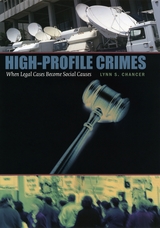 High-Profile Crimes: When Legal Cases Become Social Causes
Lynn S. Chancer
University of Chicago Press, 2005 O. J. Simpson. The Central Park jogger. Bensonhurst. William Kennedy Smith. Rodney King. These are more than crimes and criminals, more than court cases. They are cultural events that, for better or worse, gave concrete expression to latent social conflicts in American society. In High-Profile Crimes, Lynn Chancer explores how these cases became conflated with larger social causes on a collective level and how this phenomenon has affected the law, the media, and social movements.
An astute and incisive chronicle of some of the most polarizing cases of the 1980s and 1990s, High-Profile Crimes shows that their landmark status results from the overlapping interaction of diverse participants. The merging of legal cases and social causes, Chancer argues, has wrought ambivalent effects on both social movements and the law. On the one hand, high-profile crimes offer important opportunities for emotional expression and raise awareness of social issues. But on the other hand, social problems cannot be resolved through the either/or determinations that are the goals of the legal system, creating frustration for those who look to the outcome of these cases for social progress. Guilt or innocence through the lens of the media leads to either defeat or victory for a social cause-a confounding situation that made the O. J. Simpson case, for example, unable to resolve the issues of domestic violence and police racism that it had come to symbolize.
Based on nearly two hundred interviews, Chancer's discussions of the infamous Central Park jogger and Bensonhurst cases-as well as the rape trials of William Kennedy Smith and Mike Tyson, the assault cases of Rodney King and Reginald Denny, and, finally, the O. J. Simpson murder trial-provide a convincing, multidimensional and innovative analysis of the most charged public dramas of the last two decades.
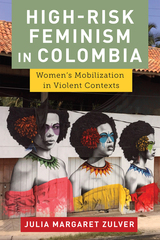 High-Risk Feminism in Colombia: Women's Mobilization in Violent Contexts
Julia Margaret Zulver
Rutgers University Press, 2022 High-Risk Feminism in Colombia documents the experiences of grassroots women’s organizations that united to demand gender justice during and in the aftermath of Colombia’s armed conflict. In doing so, it illustrates a little-studied phenomenon: women whose experiences with violence catalyze them to mobilize and resist as feminists, even in the face of grave danger. Despite a well-established tradition of studying women in war, we tend to focus on their roles as mothers or carers, as peacemakers, or sometimes as revolutionaries. This book explains the gendered underpinnings of why women engage in feminist mobilization, even when this takes place in a ‘domain of losses’ that exposes them to high levels of risk. It follows four women’s organizations who break with traditional gender norms and defy armed groups’ social and territorial control, exposing them to retributive punishment. It provides rich evidence to document how women are able to surmount the barriers to mobilization when they frame their actions in terms of resistance, rather than fear.
High-Skilled Migration to the United States and Its Economic Consequences
Edited by Gordon H. Hanson, William R. Kerr, and Sarah Turner
University of Chicago Press, 2018 Immigration policy is one of the most contentious public policy issues in the United States today. High-skilled immigrants represent an increasing share of the U.S. workforce, particularly in science and engineering fields. These immigrants affect economic growth, patterns of trade, education choices, and the earnings of workers with different types of skills. The chapters in this volume go beyond the traditional question of how the inflow of foreign workers affects native employment and earnings to explore effects on innovation and productivity, wage inequality across skill groups, the behavior of multinational firms, firm-level dynamics of entry and exit, and the nature of comparative advantage across countries.
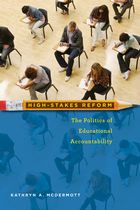 High-Stakes Reform: The Politics of Educational Accountability
Kathryn A. McDermott
Georgetown University Press, 2011 Performance accountability has been the dominant trend in education policy reform since the 1970s. State and federal policies set standards for what students should learn; require students to take “high-stakes” tests to measure what they have learned; and then hold students, schools, and school districts accountable for their performance. The goal of these policies is to push public school districts to ensure that all students reach a common threshold of knowledge and skills. High-Stakes Reform analyzes the political processes and historical context that led to the enactment of state-level education accountability policies across the country. It also situates the education accountability movement in the broader context of public administration research, emphasizing the relationships among equity, accountability, and intergovernmental relations. The book then focuses on three in-depth case studies of policy development in Massachusetts, New Jersey, and Connecticut. Kathryn McDermott zeroes in on the most controversial and politically charged forms of state performance accountability sanctions, including graduation tests, direct state intervention in or closing of schools, and state takeovers of school districts. Public debate casts performance accountability as either a cure for the problems of US public education or a destructive mistake. Kathryn McDermott expertly navigates both sides of the debate detailing why particular policies became popular, how the assumptions behind the policies influenced the forms they took, and what practitioners and scholars can learn from the successes and failures of education accountability policies.
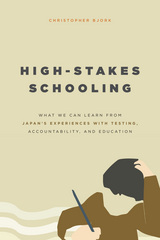 High-Stakes Schooling: What We Can Learn from Japan's Experiences with Testing, Accountability, and Education Reform
Christopher Bjork
University of Chicago Press, 2015 If there is one thing that describes the trajectory of American education, it is this: more high-stakes testing. In the United States, the debates surrounding this trajectory can be so fierce that it feels like we are in uncharted waters. As Christopher Bjork reminds us in this study, however, we are not the first to make testing so central to education: Japan has been doing it for decades. Drawing on Japan’s experiences with testing, overtesting, and recent reforms to relax educational pressures, he sheds light on the best path forward for US schools.
Bjork asks a variety of important questions related to testing and reform: Does testing overburden students? Does it impede innovation and encourage conformity? Can a system anchored by examination be reshaped to nurture creativity and curiosity? How should any reforms be implemented by teachers? Each chapter explores questions like these with careful attention to the actual effects policies have had on schools in Japan and other Asian settings, and each draws direct parallels to issues that US schools currently face. Offering a wake-up call for American education, Bjork ultimately cautions that the accountability-driven practice of standardized testing might very well exacerbate the precise problems it is trying to solve.
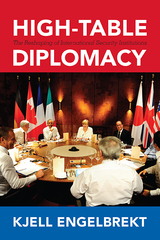 High-Table Diplomacy: The Reshaping of International Security Institutions
Kjell Engelbrekt
Georgetown University Press The proliferation of “minilateral” summits is reshaping how international security problems are addressed, yet these summits remain a poorly understood phenomenon. In this groundbreaking work, Kjell Engelbrekt contrasts the most important minilateral summits—the G7 (formerly G8) and G20—with the older and more formal UN Security Council to assess where the diplomacy of international security is taking place and whether these institutions complement or compete with each other. Engelbrekt’s research in primary-source documents of the G7, G8, G20, and UN Security Council provides unique insight into how these institutions deliberate on three policy areas: conflict management, counterterrorism cooperation, and climate change mitigation. Relatively informal and flexible, GX diplomacy invites more countries to take a seat at the table and allows nontraditional security threats to be placed on the agenda. Engelbrekt concludes, however, that there is a continuing need for institutions like the UN to address traditional security problems. High-Table Diplomacy will provoke discussion and further research on the role of minilateral summits among scholars of international relations, security studies, and international organizations.
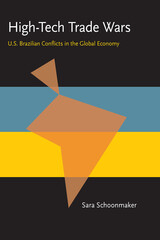 High-Tech Trade Wars: U.S.–Brazillian Conflicts in the Global Economy
Sara Schoonmaker
University of Pittsburgh Press, 2002 Focusing on the conflicts between the United States and Brazilian governments over Brazil’s efforts to develop a local computer industry, High-Tech Trade Wars examines the political struggle between governments and multinational corporations in today’s global economy.
Sara Schoonmaker uses the technology industry to delve into one of the key political conflicts of our time: the construction of a free trade regime determined to open markets around the world to global capital, and attempts by Latin American, African, and other governments to resist this process. The Brazilian computer case is a prime example of a nationalist effort to promote local growth of a key high-technology industry—an effort that was eventually dismantled under the pressures of what Schoonmaker views as part of a broader process of neoliberal globalization.
High-Tech Trade Wars presents a multidimensional view of the globalization process, where economic changes are shaped by political struggle and cultural discourse. It includes interviews with Brazilian industrialists and state officials involved with implementing and, eventually, dismantling Brazil’s informatics policy, and discussions of grassroots-level protests organized against neoliberal globalization during the recent WTO meetings in Seattle and Davos, Switzerland.
High-Voltage Engineering and Testing
Hugh M. Ryan
The Institution of Engineering and Technology, 2013 This 3rd edition of High Voltage Engineering Testing describes strategic developments in the field and reflects on how they can best be managed. All the key components of high voltage and distribution systems are covered including electric power networks, UHV and HV. Distribution systems including HVDC and power electronic systems are also considered. In the book, particular consideration is given to recent developments in UHV, AC and DC transmission systems abroad. Recent developments in renewable energy techniques and environmental issues are also discussed and assessed. This new edition gives details of design and testing techniques and considers recent developments in testing and measuring technology and reviews them together with appropriate strategic technological assessments of some applications.
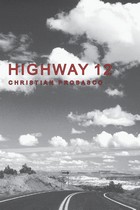 Highway 12
Christian Probasco
Utah State University Press, 2005 Highway 12 is undoubtedly one of not only America's but the world's most scenic highways. From its intersection on the west with Highway 89 south of Panguitch, Utah, it runs up through Red Canyon onto the Paunsagunt Plateau and across Bryce Canyon National Park. It then drops into the Paria River Valley, passes through several tiny villages, crosses some extraordinary (for anywhere but this region) badlands, and descends the Escalante River into Potato Valley. While a driver may justifiably feel she has seen some scenery by that point, the highway is just getting started, for in the next stretch, it crosses a labyrinth of multicolored sandstone humps and corridors, climaxed by a narrow hogback with steep slickrock drops to each side, all within Grand Staircase-Escalante National Monument. Reaching the oasis of Boulder within this desert of rock, the road then climbs across the flank of the Aquarius Plateau, providing spectacular vistas and terminating at the gateway to Capitol Reef National Park. Along the way side roads and trails access the vast wilderness of the Paria and Escalante Rivers and the high plateaus they drain. Congress acknowledged the unequaled splendor of Highway 12 by designating it one of a handful of All-American Roads. To travel with Christian Probasco this road and its spurs, which lead deep into some of the wildest, most broken-up and stunning landscapes anywhere, can put a unique twist on an already singular experience. He knows the region as well as anyone and brings an original, edgy, youthful view to it. His opinions and his language may challenge you. His approaches to and perspectives on the land may sometimes surprise you. His understanding of the area's history and its people will likely teach you a thing or two.
Highways and Hierarchies: Ethnographies of Mobility from the Himalaya to the Indian Ocean
Luke Heslop
Amsterdam University Press, 2021 Highways and Hierarchies: Ethnographies of Mobility from the Himalaya to the Indian Ocean explores the contemporary proliferation of roads in South Asia and the Tibet-Himalaya region, showing how new infrastructures simultaneously create fresh connections and reinforce existing inequalities. Bringing together ethnographic studies on the social politics of road development and new mobilities in twenty-first-century Asia, this edited collection demonstrates that while new roads generate new forms of hierarchy, older forms of hierarchy are remade and re-established in creative and surprising new ways. Focused on South Asia but speaking to more global phenomena, the chapters collectively reveal how road planning, construction and usage routinely yield a simultaneous reinforcement and disruption of social, political and economic relations.
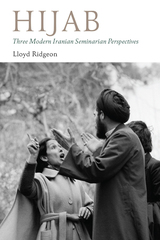 Hijab: Three Modern Iranian Seminarian Perspectives
Lloyd Ridgeon
Gingko, 2021 This book provides an overview of the range of seminarian thinking in Iran on the controversial topic of the hijab. During the modern period, Iran has suffered a great deal of conflict and confusion caused by the impact of Western views on the hijab in the 19th century, Riza Shah Pahlavi’s 1936 decree banning Islamic head coverings, and the imposition of the veil in the wake of the Islamic Revolution in 1979.
Ḥijāb addresses the differences of opinion among seminarians on the hijab in the Islamic Republic of Iran, focusing on three representative thinkers: Murtaza Mutahhari who held veiling to be compulsory, Ahmad Qabil who argued for the desirability of the hijab, and Muhsin Kadivar who considers it neither necessary nor desirable. In the first chapter, the views of these three scholars are contextualized within the framework known as ‘new religious thinking’ among the seminarians. Comprehending the hermeneutics of this new religious thinking is key to appreciating how and why the younger generation of scholars have offered divergent judgements about the hijab. Following the first chapter, the book is divided into three parallel sections, each devoted to one of the three seminarians. These present a chronological approach, and each scholar’s position on the hijab is assessed with reference to historical specificity and their own general jurisprudential perspective. Extensive examples of the writings of the three scholars on the hijab are also provided.
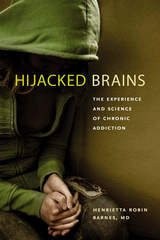 Hijacked Brains: The Experience and Science of Chronic Addiction
Henrietta Robin Barnes
Dartmouth College Press, 2015 This book, written from the perspective of a practicing primary care physician, interweaves patients’ stories with fascinating new brain research to show how addictive drugs overtake basic brain functions and transform them to create a chronic illness that is very difficult to treat. The idea that drug and alcohol addiction are chronic illnesses and not character flaws is not news—this notion has been around for many years. What Hijacked Brains offers is context and personal stories that demonstrate this point in a very accessible package. Dr. Barnes explores how the healthy brain works, how addictive drugs flood basic reward pathways, and what it feels like to grapple with addiction. She discusses how, for individuals, the combination of genetic and environmental factors determines both vulnerability for addiction and the resilience necessary for recovery. Finally, she shows how American culture, with its emphasis on freewill and individualism, tends to blame the addict for bad choices and personal weakness, thereby impeding political and/or health-related efforts to get the addict what she needs to recover.
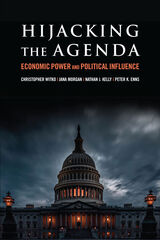 Hijacking the Agenda: Economic Power and Political Influence
Christopher Witko
Russell Sage Foundation, 2021 Why are the economic interests and priorities of lower- and middle-class Americans so often ignored by the U.S. Congress, while the economic interests of the wealthiest are prioritized, often resulting in policies favorable to their interests? In Hijacking the Agenda, political scientists Christopher Witko, Jana Morgan, Nathan J. Kelly, and Peter K. Enns examine why Congress privileges the concerns of businesses and the wealthy over those of average Americans. They go beyond demonstrating that such economic bias exists to illuminate precisely how and why economic policy is so often skewed in favor of the rich.
The authors analyze over 20 years of floor speeches by several hundred members of Congress to examine the influence of campaign contributions on how the national economic agenda is set in Congress. They find that legislators who received more money from business and professional associations were more likely to discuss the deficit and other upper-class priorities, while those who received more money from unions were more likely to discuss issues important to lower- and middle-class constituents, such as economic inequality and wages. This attention imbalance matters because issues discussed in Congress receive more direct legislative action, such as bill introductions and committee hearings. While unions use campaign contributions to push back against wealthy interests, spending by the wealthy dwarfs that of unions.
The authors use case studies analyzing financial regulation and the minimum wage to demonstrate how the financial influence of the wealthy enables them to advance their economic agenda. In each case, the authors examine the balance of structural power, or the power that comes from a person or company’s position in the economy, and kinetic power, the power that comes from the ability to mobilize organizational and financial resources in the policy process. The authors show how big business uses its structural power and resources to effect policy change in Congress, as when the financial industry sought deregulation in the late 1990s, resulting in the passage of a bill eviscerating New Deal financial regulations. Likewise, when business interests want to preserve the policy status quo, it uses its power to keep issues off of the agenda, as when inflation eats into the minimum wage and its declining purchasing power leaves low-wage workers in poverty. Although groups representing lower- and middle-class interests, particularly unions, can use their resources to shape policy responses if conditions are right, they lack structural power and suffer significant resource disadvantages. As a result, wealthy interests have the upper hand in shaping the policy process, simply due to their pivotal position in the economy and the resulting perception that policies beneficial to business are beneficial for everyone.
Hijacking the Agenda is an illuminating account of the way economic power operates through the congressional agenda and policy process to privilege the interests of the wealthy and marks a major step forward in our understanding of the politics of inequality.
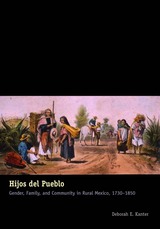 Hijos del Pueblo: Gender, Family, and Community in Rural Mexico, 1730-1850
By Deborah E. Kanter
University of Texas Press, 2008 The everyday lives of indigenous and Spanish families in the countryside, a previously under-explored segment of Mexican cultural history, are now illuminated through the vivid narratives presented in Hijos del Pueblo ("offspring of the village"). Drawing on neglected civil and criminal judicial records from the Toluca region, Deborah Kanter revives the voices of native women and men, their Spanish neighbors, muleteers, and hacienda peons to showcase their struggles in an era of crisis and uncertainty (1730-1850). Engaging and meaningful biographies of indigenous villagers, female and male, illustrate that no scholar can understand the history of Mexican communities without taking gender seriously. In legal interactions native plaintiffs and Spanish jurists confronted essential questions of identity and hegemony. At once an insightful consideration of individual experiences and sweeping paternalistic power constructs, Hijos del Pueblo contributes important new findings to the realm of gender studies and the evolution of Latin America.
Hijra
Hala Alyan
Southern Illinois University Press, 2016 In her third poetry collection, Hijra, Hala Alyan creates poems of migration and flight reflecting and bearing witness to the haunting particulars in her transnational journey as well as those of her mother, her aunts, and the female ancestors in Gaza and Syria.
The reader sees war, diaspora, and immigration, and hears the marginalized voices of women of color. The poems use lyrical diction and striking imagery to evoke the weight of an emotional and visceral journey. They grow and build in length and form, reflecting the gains the women in the poems make in re-creating selfhood through endurance and strength.
In prose, narrative, and confessional-style poems, Alyan reflects on how physical space is refashioned, transmitted, and remembered. Her voice is distinct, fresh, relevant, and welcoming.
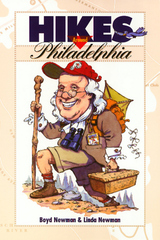 Hikes Around Philadelphia
Boyd Newman
Temple University Press, 1997 Want to walk for a leisurely hour or two with the kids? Take them to the Churchville Nature Center, with its re-created Lenape Indian village and children's exhibits. Or would you prefer a more strenuous all-day hike? Try the rocky woods trail at Bake Oven Knob, Bear Rocks, and The Cliffs. Or if you're interested in wildlife, hike Green Lane Reservoir where 260 species of birds have been sighted. Perhaps you'd simply like to hike from Pennsylvania to Delaware and back again. Then White Clay Creek Preserve is for you.
These are only five of the forty hiking trails described in Hikes Around Philadelphia. All are within an hour and a half's drive of the city. Ranging from 1.0 to 12.6 miles in length, they will take you through dense forests or wide-open meadows, past early farmsteads or a ringing boulder field from the last ice age. You can break your hike with a visit to a restored home or leave civilization behind on an isolated mountain ridge. Some of the trails are gravel or paved, or are canal towpaths, and are quite suitable for young children, older adults, or wheelchair hikers. Others are longer and more challenging, including rugged sections of the Appalachian Trail and the Horseshoe Trail.
For each hike Boyd Newman and Linda Newman provide a detailed write-up, a trail map showing the hike route on a USGS survey map, and directions to the trailhead. They also include information on distance, elevation, probable time, surface, interesting features, facililities, disability access, whether hunting is allowed in the vicinity, and availability to public transportation. This format allows you to browse through the book and easily locate the particular hike that appeals to you today.
In a concise introduction, the authors not only explain how to get the most out of the book but also give some hints on hiking safety and appropriate clothing and equipment.
This handy reference offers:
*a detailed write-up of each hike
*easy-to-read trail maps
*directions to the trail heads
*information that are accessible by public transportation
*details about handicap accessibility
*lots of other pointers that make planned or last-minute hikes fun and easy for everyone
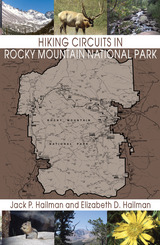 Hiking Circuits in Rocky Mountain National Park
Jack P. Hailman
University Press of Colorado, 2003 Hiking Circuits in Rocky Mountain National Park is dedicated entirely to the loop trails of Rocky Mountain National Park. Having explored the park extensively for over 30 years, Jack and Elizabeth Hailman describe and map 33 circuits and component loops, with detailed driving instructions to the access points. Circuits range from a 15-minute stroll around a lake to strenuous all-day outings in the high country and even a few multi-day backpacking trips. Side trips are often recommended for viewing a scenic waterfall, summit, lake, or other natural feature. A convenient table lists circuits by walking time, allowing hikers to choose loops designed to fit their schedules. Each account includes: a map, directions to the trailhead, trail distance, estimated hiking time, elevation range, exertion rating, segment descriptions for both clockwise and counter-clockwise hikes, and rail notes about the wildflowers, animals, and other natural history features encountered by the authors. Maps show the loop route, short access trails where applicable, routes of optional side trips, trail junctions, point-to-point walking distances, elevations of the trail points, and more. Included are appendices for natural history, local hiking supply stores, and fee schedules, with an extensive bibliography for reading and reference.
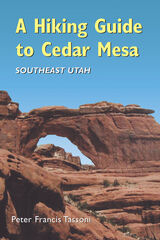 A Hiking Guide To Cedar Mesa
Peter Francis Tassoni
University of Utah Press, 2001 The Cedar Mesa country in southeast Utah is a land of convoluted cliffs with arches, natural bridges, hoodoos, spires, hat rocks, ledges, and alcoves. It is a land of flash floods and extreme temperatures that demands much from those who would explore it. It is also an unparalleled museum of geological features and ancestral Puebloan culture. This fascinating culture flowered for more than a millennium and visitors to southeast Utah are treated to a sampling of archaeological wonders.
A Hiking Guide to Cedar Mesa describes sixty-three routes, ranging from quarter-mile walks to fifteen-mile day hikes, loops, and multi-day backpack trips. There is essential information on permits, weather, gear, road, trailhead access, geology, human history in the region, and leave-no-trace camping.
Care is given to name only those well-known archaeological sites that are visible or immediately accessible from roads. Throughout, the author emphasizes proper visitation protocol for fragile archaeological sites. He states, "I have been touched by this landscape and would prefer to keep its teachings and secrets to myself, but I cannot. The experience of the desert should be available to everyone with the motivation to encounter it."
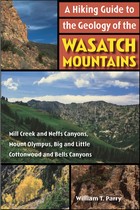 A Hiking Guide to the Geology of the Wasatch Mountains: Mill Creek and Neffs Canyons, Mount Olympus, Big and Little Cottonwood and Bells Canyons
William T Parry
University of Utah Press, 2005 Northern Utah’s Wasatch Mountains are popular destinations for outdoor enthusiasts in every season. These mountains rise spectacularly from the relatively flat valley floor to thirteen peaks over 11,000 feet in elevation. An additional nineteen peaks rise more than 10,000 feet in elevation. Although many hiking guides exist for the Wasatch Mountains, there has been no guide book that focuses on the geologic features visible from the trails—until now. Written by a recognized authority on the geology of the Wasatch Mountains, this guide is meant to enrich the experience of outdoor enthusiasts who want to understand the geological history and development of the Wasatch range. The first section of the book introduces the major geological time periods—the record of mountain building events from oldest to youngest, the effects of glaciation, and the development of the present topography. It then follows with a descriptive trail guide for each major trail system, including Mill Creek and Neffs Canyons, Mount Olympus, Little and Big Cottonwood Canyons, and Bells Canyon. Trail length, elevation gain, relative difficulty, and major geological features are outlined for each trail. Now you can hike these trails with the answers to all your geologic questions right at your fingertips.
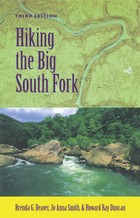 Hiking the Big South Fork
Brend G. Deaver
University of Tennessee Press, 1999 Now in its third edition, Hiking the Big South Fork is packed with up-to-date information on the trails of the Big South Fork National River and Recreation Area in Tennessee and Kentucky. The book combines numerous details about the natural history of the area with fascinating tidbits of folklore and legend to provide an interpretive guide to the trails. The authors have walked, measured, and rated every hiking trail, and, for this edition, they include information about trails in the adjoining Pickett State Park and Forest.
The book features detailed maps; checklists of mammals, birds, and wildflowers; and valuable advice on safety, park rules and regulations, and accommodations. The trail descriptions include difficulty ratings, distance and time information, notes on accommodations and special considerations, and detailed mileage indicators to keep hikers informed of their progress and to clarify points of confusion. Also included is a handy chart designed for backpackers who wish to combine trails for longer excursions.
Strollers, hikers, and backpackers looking for a less-crowded alternative to the Great Smoky Mountains National Park will enjoy discovering this beautiful, rugged National Park service area. Only a ninety-minute drive northwest of Knoxville, the Big South Fork National River and Recreation Area is easily reached in half a day or less from Louisville, Nashville, Chattanooga, and Atlanta.
The Authors: Brenda G. Deaver is a park ranger at the Big South Fork National River and Recreation Area. Jo Anna Smith, a former ranger-historian with the National Park Service, now lives in Idaho with her husband, Steve. Howard Ray Duncan, a native of the Big South Fork area, has spent many years exploring the region. A former school teacher and principal, he has been a ranger at Big South Fork since 1985.
Hiking The Escalante
Rudi Lambrechts
University of Utah Press, 1999
An invaluable resource to anyone traversing the Escalante, this comprehensive guide details 43 hikes.
Publisher's Note: Realizing there are virtually no marked trails in the Escalante country (mostly canyons that wander and have many intersections, challenging anyone to write explicit description), this book includes directions to the trailhead, how to follow a particular route with choices of side canyons along the way, and occasional alternate endings. Some of the hikes may be appropriate for beginners. Some only the most experienced should attempt.
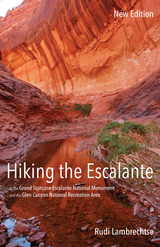 Hiking the Escalante: In the Grand Staircase-Escalante National Monument and the Glen Canyon National Recreation Area, New Edition
Rudi Lambrechtse
University of Utah Press, 2015 The Grand Staircase-Escalante National Monument covers 1.7 million acres in southern Utah, offering the hiker an experience of deep solitude surrounded by a wealth of geological, biological, and archaeological treasures. Hiking the Escalante opens the door to exploration of this highly scenic area of meandering canyons with relatively few marked trails. It lists fifty hikes by degree of difficulty and includes directions to trailheads, instructions for how to follow particular routes, choices of side canyons along the way, suggestions for loop hikes, and occasional alternative endings. A detailed road log will guide you to each of four described sections. Along with hike descriptions, the book provides information on the geology, natural history, and human history of the area. This second edition contains seven new hikes, new photographs, and updated information about hike terrain.
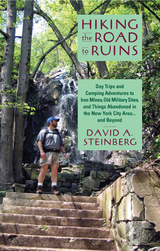 Hiking the Road to Ruins: Day Trips and Camping Adventures to Iron Mines, Old Military Sites, and Things Abandoned in the New York City Area ... and Beyond
Steinberg, David A
Rutgers University Press, 2007
In this user-friendly, beautifully illustrated, and occasionally eccentric guidebook, David A. Steinberg blazes the trail to more than twenty unusual landmarks and hard-to-find destinations-all within a two-hour drive of New York City. Geared for the experienced hiker or camping adventurer, the book includes hikes to a variety of urban ruins, including a World War II-era air force base, a vacant dairy farm, pine plantations, abandoned quarries, tunnels, cemeteries, and iron mines.
Each chapter contains detailed directions, a hand-drawn map, suggestions for the optimal time and season to visit, and GPS coordinates to specific sites. Bringing fifteen years of experience as a leader of hikes, Steinberg leaves no part of the trip unplanned. He even suggests ideal conditions for the outing. An overcast day, for instance, sets up the haunted atmosphere appropriate for visiting a water tower in Mountainside, New Jersey, that has links to a murder-suicide in the 1970s.
For less experienced hikers, the guide also includes a chapter on equipment and safety, detailed instructions on how to program a hand-held Global Positioning System receiver, and a glossary of terms.
Both a practical guide and a creative chronicle, this book is bound to please hikers and history buffs alike.
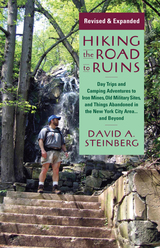 Hiking the Road to Ruins: Daytrips and Camping Adventures to Iron Mines, Old Military Sites, and Things Abandoned in the New York City Area...and Beyond
Steinberg, David A
Rutgers University Press, 2015 In this easy to use, informative, and occasionally eccentric guidebook, David A. Steinberg blazes the trail to more than twenty-five unusual landmarks and hard-to-find destinations that are mostly within a two-hour drive of New York City. Suitable for the experienced hiker or camping adventurer—as well as anyone who has the desire to explore—Hiking the Road to Ruins includes many new ruins and historic sites to see: remnants of the two World’s Fairs in Queens, mysterious stone chambers scattered about northern Westchester County, winter adventuring in Harriman, and quarries that contain amazing artifacts.
In this new edition, Steinberg adds four additional chapters and has revised throughout the book to include detailed directions, GPS coordinates to specific sites, a hand-drawn map, and suggestions for the optimal time and season to visit. Having led many types of hikes and trips over the past fifteen years, Steinberg leaves no part of the trip unplanned. He even suggests ideal conditions for outings. An overcast day, for instance, sets up the haunted atmosphere appropriate for visiting a water tower in Mountainside, New Jersey, that has links to a murder-suicide in the 1970s.
Newcomers will gain experience as they make their way through the book, which includes a chapter on equipment and safety, detailed instructions on how to program a hand-held Global Positioning System receiver, and a glossary of terms.
Both a practical guide and a creative chronicle, Hiking the Road to Ruins will inspire everyone to hit the trail in search of adventure.
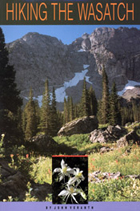 Hiking the Wasatch: A Hiking and Natural History Guide to the Central Wasatch
John Veranth
University of Utah Press, 2014 The Wasatch Mountains, with three wilderness areas and hundreds of miles of trails, offer a treasure land of outdoor opportunities within easy reach of nearly a million people. Yet the steep rugged terrain can seem intimidating to new hikers and many parts of the Wasatch are relatively unknown and seldom visited. John Veranth has hiked all over these mountains and has written a comprehensive guidebook for both the beginner and the expert hiker.
Trail descriptions range from nearly level walks requiring less than an hour to ascents that challenge experienced mountaineers. To assist in selecting an appropriate trail, hikes are listed according to best season, time required, objective, and desired level of difficulty. The easy trails have the most detailed descriptions to aid beginners, while expert trails have sparse descriptions to preserve the adventure. Maps, photos, and line drawings are included and detailed driving directions to the trailheads are consolidated to save repetition. The area’s geology, flora and fauna, and human history are also discussed to further appreciation of this mountain environment.
Since the first publication of Hiking the Wasatch, there have been numerous changes to these trails, especially along the foothill-urban interface. This revised third edition contains full updates based on the author’s field checking, comments from members of the Wasatch Mountain Club, and information from land-management agencies. Hiking the Wasatch is an essential resource for exploring these mountain trails.
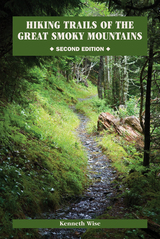 Hiking Trails of the Great Smoky Mountains: Comprehensive Guide
Ken Wise
University of Tennessee Press, 1996 Hiking Trails of the Great Smoky Mountains is an essential guide to one of America’s most breathtaking and rugged national parks. The second edition of this compellingly readable and useful book is completely updated, giving outdoor enthusiasts the most current information they need to explore this world-renowned wilderness.
Included here are facts on more than 125 official trails recognized by the Park Service. Each one has its own setting, purpose, style, and theme, and author Kenneth Wise describes them in rich and vivid detail. For every route, he includes a set of driving directions to the trailhead, major points of interest, a schedule of distances to each one, a comprehensive outline of the trail’s course, specifics about where it begins and ends, references to the U.S. Geological Survey’s quadrangle maps, and, when available, historical anecdotes relating to the trail. His colorful descriptions of the area’s awe-inspiring beauty are sure to captivate even armchair travelers.
Organized by sections that roughly correspond to the seventeen major watersheds in the Smokies, Wise starts in Tennessee and moves south into North Carolina, with two major trails—the Lakeshore and the Appalachian—that traverse several watersheds treated independently. Further enhancing the utility of this volume is the inclusion of the Great Smoky Mountains’ official trail map as well as an informative introduction filled with details about the geology, climate, vegetation, wildlife, human history, and environmental concerns of the region.
A seasoned outdoorsman with more than thirty years of experience in the area and codirector of the Great Smoky Mountains Regional Project at the University of Tennessee, Knoxville, Wise brings an exceptional depth of knowledge to this guide. Both experienced hikers and novices will find this newly revised edition an invaluable resource for trekking in the splendor of the Smokies.
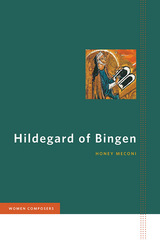 Hildegard of Bingen
Honey Meconi
University of Illinois Press, 2018 A Renaissance woman long before the Renaissance, the visionary Hildegard of Bingen (1098–1179) corresponded with Europe's elite, founded and led a noted women's religious community, and wrote on topics ranging from theology to natural history. Yet we know her best as Western music's most accomplished early composer, responsible for a wealth of musical creations for her fellow monastics. Honey Meconi draws on her own experience as a scholar and performer of Hildegard's music to explore the life and work of this foundational figure. Combining historical detail with musical analysis, Meconi delves into Hildegard's mastery of plainchant, her innovative musical drama, and her voluminous writings. Hildegard's distinctive musical style still excites modern listeners through wide-ranging, sinuous melodies set to her own evocative poetry. Together with her passionate religious texts, her music reveals a holistic understanding of the medieval world still relevant to today's readers.
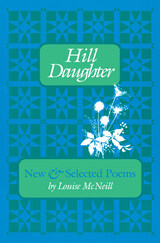 Hill Daughter: New and Selected Poems
LOUISE MCNEILL
University of Pittsburgh Press, 1991 Introduction by Maggie Anderson
Musically complex and intellectually sophisticated, Louise McNeill’s imagery and rhythms have their deepest sources in the West Virginia mountains where she was born in 1911 on a farm that has been in her family for nine generations. These are rooted poems, passionately concerned with stewardship of the land and with the various destructions of land and people that often come masked as “progress.”
In colloquial, rural, and sometimes macabre imagery, Louise McNeill documents the effects of the change from a farm to an industrial economy on the West Virginia mountain people. She writes of the earliest white settlements on the western side of the Alleghenies and of the people who remained there through the coming of the roads, the timber and coal industries, and the several wars of this century.
The reappearance of Louise McNeill’s long out-of-print poems will be cause for celebration for readers familiar with her work. Those reading it for the first time will discover musical, serious, idiosyncratic, and startling poems that define the Appalachian experience.
 Hill Farms: Surviving Modern Times in Early Twentieth-Century Vermont
Dona Brown
University of Massachusetts Press, 2025 There is a stubborn myth that has persisted for almost two centuries: the narrative of the abandoned farm in the rural American northeast. In Hill Farms, historian Dona Brown confronts this myth of rural decline with a focus on Jamaica, Vermont, a small town in the hills west of Brattleboro. Through this town’s history, she reveals a more complex economic and environmental narrative, a story of the continued use of traditional farm methods despite the growing power of modernization and demands for increased efficiencies.
Brown examines the records of a 1930 study by the University of Vermont’s now infamous Eugenics Survey, part of a flood of problematic investigations of Vermont rural life at the time, wherein eugenicists interviewed residents in every Jamaica household about crops, incomes, and housing conditions. These researchers from various disciplines saw in Jamaica and towns like it poverty and ignorance rather than a commitment to farming as a modest but sustainable way of life. Extensive handwritten notes from the Eugenics Survey provide a remarkable glimpse into the daily lives and practices of these upland farmers, revealing the value in maintaining older, less intensive farming practices and shedding new light on the social and environmental history of the time. As debates around farming and rural life intensified during the Great Depression, advocates beyond Vermont rose to the defense of traditional farms. Though industrialized agriculture ultimately prevailed, the old farming strategies cultivated by these upcountry residents continue to attract adherents in the face of new challenges to traditional farming in our own times.
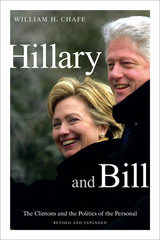 Hillary and Bill: The Clintons and the Politics of the Personal
William H. Chafe
Duke University Press, 2016 In Hillary and Bill, William H. Chafe boldly argues that the trajectory of the Clintons' political lives can be understood only through the prism of their personal relationship. Inseparable from the day they first met, their personal dynamic has determined their political fates. Hillary was instrumental in Bill's triumphs as Arkansas's governor, and she saved his presidential candidacy in 1992 during the Gennifer Flowers sex scandal. He responded by delegating to her powers that no other First Lady had ever exercised. Chafe's penetrating insights—into subjects such as health care, Kenneth Starr, welfare reform, and the Lewinsky scandal—add texture and depth to our understanding of the Clintons' experience together. Hillary and Bill is the definitive account of the Clintons’ relationship and its far-reaching impact on American political life. In this new edition, Chafe explores how Hillary adopted a new persona as a U.S. senator, returning to the consensus-oriented reformer she had been before she met Bill. Listening to her constituents and building bridges to Republicans in Congress, she left behind the us-against-them political personality of her White House years. She kept this persona as secretary of state, establishing personal ties with foreign leaders and reaching out to average citizens in the countries she visited. Still, she retained her obsession with her personal privacy and permitted the Clinton Foundation to create potential conflicts of interest with her government responsibilities. The key question, as she approached the 2016 presidential race, was which Hillary would be the presidential candidate—the person who reaches out to others and seeks collaborators or the Hillary who demonizes the opposition and fiercely protects her privacy and self-image.
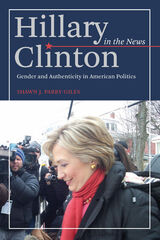 Hillary Clinton in the News: Gender and Authenticity in American Politics
Shawn J. Parry-Giles
University of Illinois Press, 2014 The charge of inauthenticity has trailed Hillary Clinton from the moment she entered the national spotlight and stood in front of television cameras. Hillary Clinton in the News: Gender and Authenticity in American Politics shows how the U.S. news media created their own news frames of Clinton's political authenticity and image-making, from her participation in Bill Clinton's 1992 presidential campaign through her own 2008 presidential bid. Using theories of nationalism, feminism, and authenticity, Parry-Giles tracks the evolving ways the major networks and cable news programs framed Clinton's image as she assumed roles ranging from surrogate campaigner, legislative advocate, and financial investor to international emissary, scorned wife, and political candidate. This study magnifies how the coverage that preceded Clinton's entry into electoral politics was grounded in her earliest presence in the national spotlight, and in long-standing nationalistic beliefs about the boundaries of authentic womanhood and first lady comportment. Once Clinton dared to cross those gender boundaries and vie for office in her own right, the news exuded a rhetoric of sexual violence. These portrayals served as a warning to other women who dared to enter the political arena and violate the protocols of authentic womanhood.
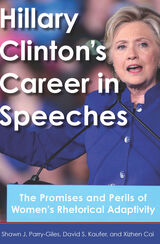 Hillary Clinton's Career in Speeches: The Promises and Perils of Women's Rhetorical Adaptivity
Shawn J. Parry-Giles
Michigan State University Press, 2023 Women candidates are under more pressure to communicate competence and likability than men. And when women balance these rhetorical pressures, charges of inauthenticity creep in, suggesting the structural and strategic anti-woman backlash at play in presidential politics. Hillary Clinton demonstrated considerable ability to adapt her rhetoric across roles, contexts, genres, and audiences. Comparisons between Clinton’s campaign speeches and those of her presidential opponents (Barack Obama, Bernie Sanders, and Donald Trump) show that her rhetorical range exceeded theirs. And comparisons with Democratic women candidates of 2020 suggest they too exhibited a rhetorical range and faced a backlash similar to Clinton. Hillary Clinton’s Career in Speeches combines statistical text-mining methods with close reading to analyze the rhetorical highs and lows of one of the most successful political women in U.S. history. Drawing on Clinton’s oratory across governing and campaigning, the authors debunk the stereotype that she was a wooden and insufferably wonkish speaker. They marshal evidence for the argument that the sexist tactics in American politics function to turn women’s rhetorical strengths into political liabilities.
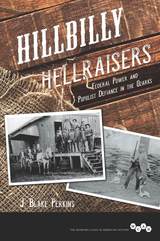 Hillbilly Hellraisers: Federal Power and Populist Defiance in the Ozarks
J Perkins
University of Illinois Press, 2017 Long a bastion of antigovernment feeling, the Ozark region today is home to fervent strains of conservative-influenced sentiment. Does rural heritage play an exceptional role in the perpetuation of these attitudes? Have such outlooks been continuous? J. Blake Perkins searches for the roots of rural defiance in the Ozarks--and discovers how it changed over time. Eschewing generalities, Perkins focuses on the experiences and attitudes of rural people themselves as they interacted with government from the late nineteenth century through the twentieth century.He uncovers the reasons local disputes and uneven access to government power fostered markedly different reactions by hill people as time went by. Resistance in the earlier period sprang from upland small farmers' conflicts with capitalist elites who held the local levers of federal power. But as industry and agribusiness displaced family farms after World War II, a conservative cohort of town business elites, local political officials, and midwestern immigrants arose from the region's new low-wage, union-averse economy. As Perkins argues, this modern antigovernment conservatism bore little resemblance to the backcountry populism of an earlier age but had much in common with the movement elsewhere.
Hillbilly Hustle
Wesley Browne
West Virginia University Press, 2020 Knox Thompson thinks he’s working a hustle, but it’s a hustle that’s working him. Trying to keep his pizza shop and parents afloat, he cleans out a backroom Kentucky poker game only to be roped into dealing marijuana by the proprietor—an arrangement Knox only halfheartedly resists.
Knox’s shop makes the perfect front for a marijuana operation, but his supplier turns out to be violent and calculating, and Knox ends up under his thumb. It’s not long before more than just the pizza shop is at risk.
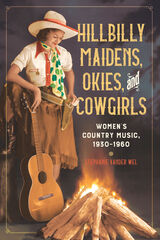 Hillbilly Maidens, Okies, and Cowgirls: Women's Country Music, 1930-1960
Stephanie Vander Wel
University of Illinois Press, 2020 A PopMatters Best Non-Fiction Book of 2020 From the 1930s to the 1960s, the booming popularity of country music threw a spotlight on a new generation of innovative women artists. These individuals blazed trails as singers, musicians, and performers even as the industry hemmed in their potential popularity with labels like woman hillbilly, singing cowgirl, and honky-tonk angel. Stephanie Vander Wel looks at the careers of artists like Patsy Montana, Rose Maddox, and Kitty Wells against the backdrop of country music's golden age. Analyzing recordings and appearances on radio, film, and television, she connects performances to real and imagined places and examines how the music sparked new ways for women listeners to imagine the open range, the honky-tonk, and the home. The music also captured the tensions felt by women facing geographic disruption and economic uncertainty. While classic songs and heartfelt performances might ease anxieties, the subject matter underlined women's ambivalent relationships to industrialism, middle-class security, and established notions of femininity.
Hillbilly Realist: Herman Clarence Nixon of Possum Trot
Sarah Newman Shouse
University of Alabama Press, 1986 One man’s intellectual odyssey from Victorianism to Modernism
Nixon’s life offers insight into one southerner’s efforts to comprehend and interpret the conflict and change of his time and illuminates for contemporary Americans a classical view of life—one lived fully, right in strength, beauty, courage, compassion, adventure, and thought.
Clarence Nixon was first and foremost a Southern intellectual, deeply involved in the region’s cultural renaissance, and his life reveals an intellectual odyssey from Victorianism to Modernism. As his personality, ideology, and social environment interacted, a new world view emerged. But he was an ambivalent modernist, like many intellectuals who were reared in the nineteenth-century South, he never abandoned certain Victorian ideals and values.
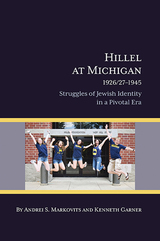 Hillel at Michigan, 1926/27-1945: Struggles of Jewish Identity in a Pivotal Era
Andrei S. Markovits and Kenneth Garner
Michigan Publishing, 2016 This book provides the very first in-depth analysis of the founding decades of a major Hillel chapter in the United States. Hillel at the University of Michigan was founded in 1926 as the fourth such chapter in the United States following its establishment at three other public universities in the Midwest: Illinois (1923); Wisconsin (1924); Ohio State (1925).
The study analyzes Hillel's challenges as a big-tent, catch-all institution trying to represent all Jewish students on campus regardless of their religious orientation, cultural preferences, and ideological predilections. It looks at Hillel's interactions with the then powerful Jewish fraternities and sororities that provided the main locus of Jewish life on campus at the time, as well as its relations with the University's leadership and many of its cultural and political constituencies. Most of these activities occurred at a time when anti-Semitism was rife in the United States, particularly in the larger Detroit area, home to Henry Ford and Father Charles Edward Coughlin.
Hills and the Sea
Hilaire Belloc
Northwestern University Press, 1996 Hills and the Sea, first published in 1906 to critical acclaim, collects thirty-eight of Hilaire Belloc's essays, spanning several periods of time and travel. The New York Times noted, "[This] book abounds in sweetness and light, and one must be something more than human or something less not to find therein some congenial and sympathetic message--possibly many."
Belloc captures the essence of each place he visits--whether on the gloomy English fens, or the sunny Provence and Languedoc regions of France, or navigating the North Sea in a leaky boat. Praised for his blend of wit and philosophy, Belloc also weaves together fantasy and fact, producing portraits that take on mythic proportions.
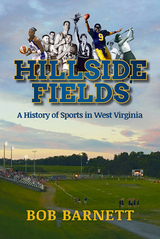 Hillside Fields: A History of Sports in West Virginia
Bob Barnett
West Virginia University Press, 2013 West Virginia’s championship teams at WVU and Marshall and athletic superstars like Jerry West and Mary Lou Retton are familiar to all, but few know the untold story of sports in the Mountain State. Hillside Fields: A History of Sports in West Virginia chronicles the famous athletic triumphs and heart-breaking losses of local heroes and legendary teams, recording the titanic struggles of a small state competing alongside larger rivals.
Hillside Fields provides a broad view of the development of sports in West Virginia, from one of the first golf clubs in America at Oakhurst Links to the Greenbrier Classic; from the first girls basketball championship in 1919 to post Title IX; from racially segregated sports to integrated teams; and from the days when West Virginia Wesleyan and Davis & Elkins beat the big boys in football to the championship teams at WVU, Marshall, West Virginia State and West Liberty.
Hillside Fields explains how major national trends and events, as well as West Virginia’s economic, political, and demographic conditions, influenced the development of sports in the state. The story of the growth of sports in West Virginia is also a story of the tribulations, hopes, values and triumphs of a proud people.
 Hilma af Klint: A Biography
Julia Voss
University of Chicago Press, 2022 A highly anticipated biography of the enigmatic and popular Swedish painter.
The Swedish painter Hilma af Klint (1862–1944) was forty-four years old when she broke with the academic tradition in which she had been trained to produce a body of radical, abstract works the likes of which had never been seen before. Today, it is widely accepted that af Klint was one of the earliest abstract academic painters in Europe.
But this is only part of her story. Not only was she a working female artist, she was also an avowed clairvoyant and mystic. Like many of the artists at the turn of the twentieth century who developed some version of abstract painting, af Klint studied Theosophy, which holds that science, art, and religion are all reflections of an underlying life-form that can be harnessed through meditation, study, and experimentation. Well before Kandinsky, Mondrian, and Malevich declared themselves the inventors of abstraction, af Klint was working in a nonrepresentational mode, producing a powerful visual language that continues to speak to audiences today. The exhibition of her work in 2018 at the Guggenheim Museum in New York City attracted more than 600,000 visitors, making it the most-attended show in the history of the institution.
Despite her enormous popularity, there has not yet been a biography of af Klint—until now. Inspired by her first encounter with the artist’s work in 2008, Julia Voss set out to learn Swedish and research af Klint’s life—not only who the artist was but what drove and inspired her. The result is a fascinating biography of an artist who is as great as she is enigmatic.
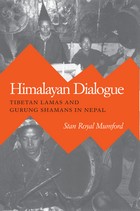 Himalayan Dialogue: Tibetan Lamas & Gurung Shamans In Nepal
Stan Royal Mumford
University of Wisconsin Press, 1989 In the mountain valleys of Nepal, Tibetan communities have long been established through migrations from the North. Because of these migrations over the last few centuries, Tibetan lamaism, as one of the world’s great ritual traditions, can be studied in the Himalayas as a process that emerges through dialogue with the more ancient shamanic tradition which it confronts and criticizes.
Here for the first time is a thorough anthropological study of Tibetan lamaism combining textual analysis with richly contextualized ethnographic data. The rites studied are of the Nyingma Tibetan Buddhist tradition. In contrast to the textual analyses that have viewed the culture as a finished entity, here we see an unbounded ritual process with unfinished interpretations.
Mumford’s focus is on the “dialogue” taking place between the lamaist and the shamanic regimes, as a historic development occurring between different cultural layers. The study powerfully demonstrates that interrelationships between subsystems within a given cultural matrix over time are critical to an understanding of religion as a cultural process.
The Himalayan Journey of Walter N. Koelz: The University of Michigan Himalayan Expedition
Carla M. Sinopoli
University of Michigan Press, 2013 In the fall of 1932, University of Michigan naturalist Walter N. Koelz traveled to northwest India to lead a scientific collecting expedition in the rugged Himalayan regions of Western Tibet. Some eighteen months later he returned to the United States with a remarkable collection of biological specimens and an array of objects—Buddhist paintings, ritual objects, textiles, and household goods—acquired from monasteries, households, and merchants. This book presents the diary entries Koelz wrote at the end of each day throughout his expedition, recounting in detail each day’s travels, bookended by a chapter contextualizing his acquisition of sacred Buddhist objects and an appendix that presents previously unpublished thangka paintings that he collected.
Himiko and Japan's Elusive Chiefdom of Yamatai: Archaeology, History, and Mythology
J. Edward Kidder, Jr.
University of Hawaii Press, 2007 The third-century Chinese chronicle Wei zhi (Record of Wei) is responsible for Japan’s most enduring ancient mystery. This early history tells of a group of islands off the China coast that were dominated by a female shaman named Himiko. Himiko ruled for more than half a century as head of the largest chiefdom, traditionally known as Yamatai, until her death in 248. Yet no such person appears in the old Japanese literature. Who was Himiko and where was the Yamatai she governed? In this, the most comprehensive treatment in English to date, a senior scholar of early Japan turns to three sources—historical, archaeological, and mythological—to provide a multifaceted study of Himiko and ancient Japanese society.
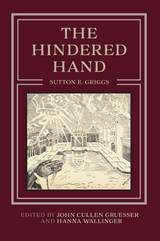 The Hindered Hand
Sutton E. Griggs
West Virginia University Press, 2017 Between 1899 and 1908, five long works of fiction by the Nashville-based black Baptist minister Sutton E. Griggs appeared in print, making him the most prolific African American novelist at the turn of the twentieth century. Brought out by Griggs’s own Orion Publishing Company in three distinct printings in 1905 and 1906, The Hindered Hand; or, the Reign of the Repressionist addresses the author’s key themes of amalgamation, emigration, armed resistance, and US overseas expansion; includes a melodramatic love story; and features two of the most sensational scenes in early African American fiction—a harrowingly graphic lynching of an innocent black couple based on actual events and the elaboration of a plot to wipe out white Southerners by introducing yellow fever germs into the water supply.
Written in response to Thomas Dixon’s recently published race-baiting novel The Leopard’s Spots, Griggs’s book depicts the remnants of the old Southern planter class, the racial crisis threatening the South and the North, the social ferment of the time, the changing roles of women, and the thwarted aspirations of a trio of African American veterans following the war against Spain. This scholarly edition of the novel, providing newly discovered biographical information and copious historical context, makes a significant contribution to African American literary scholarship.
Hindu Art
T. Richard Blurton
Harvard University Press, 1993 In a survey that stretches back to prehistory, Blurton discusses the religious, cultural, and historical influences that figure in Hindu art. Tracing its evolution, he shows how Hindu art has come to embrace widely varying styles, reflecting differences between regions from Nepal to Afghanistan, from Sri Lanka to Bangladesh.
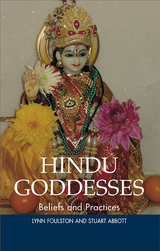 Hindu Goddesses: Beliefs and Practices
Lynn Foulston
Sussex Academic Press, 2022 This book explores the diversity of Hindu goddesses and the variety of ways in which they are worshiped. Although they undoubtedly have ancient origins, Hindu goddesses and their worship is still very much a part of the fabric of religious engagement in India today. With no prior knowledge necessary, the book is an introduction to a complex and often baffling field of study. Part I - Beliefs - provides a series of encounters with a range of Hindu goddesses starting with the idea of 'Goddess' as a philosophical concept. Topics include textual evidence for belief structures, goddess mythology, and the importance of 'the Goddess' in Tantrism. Part II - Practices - leads the reader through the tangled web of goddess worship, pausing along the way to examine the contrast between temple worship and local worship, the splendor of festivals, and the importance of pilgrimage to those places in India where goddesses are considered to reside. The Conclusion provides details of contemporary developments in goddess worship, such as the appearance of new deities who supply the needs of worshippers in the 21st century.
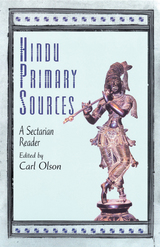 Hindu Primary Sources: A Sectarian Reader
Olson, Carl
Rutgers University Press, 2007 Bringing together texts from a variety of sectarian traditions, this reader provides the broadest selection of primary source Hindu literature available to date.
The volume is divided into two major parts. The first section presents selections that explore major themes in classical Sanskrit traditions, including those in the Vedic, Upanisadic, and Dharma literatures, as well as the classical philosophical-religious schools. The second part includes selections that highlight the sectarian and devotional movements related to major deities such as Vishnu, Shiva, Krishna, Rama, Sant, Tantra, and the goddess figures.
In addition to a general introductory chapter on Indian literature, each major section is introduced by an essay that places the selections within the context of Hindu history. This comprehensive reader stands on its own as an indispensable anthology of original textual sources for courses in Hinduism, while also serving as a companion volume to the text The Many Colors of Hinduism: A Thematic-Historical Introduction.
The Hindu Tantric World: An Overview
André Padoux
University of Chicago Press, 2017 Tantra occupies a unique position in Western understandings of Hindu spirituality. Its carnal dimension has made its name instantly recognizable, but this popular fascination with sex has obscured its philosophical depth and ritual practices, to say nothing of its overall importance to Hinduism.
This book offers a clear, well-grounded overview of Tantra that offers substantial new insights for scholars and practitioners. André Padoux opens by detailing the history of Tantra, beginning with its origins, founding texts, and major beliefs. The second part of the book delves more deeply into key concepts relating to the tantric body, mysticism, sex, mantras, sacred geography, and iconography, while the final part considers the practice of Tantra today, both in India and in the West. The result is an authoritative account of Tantra’s history and present place in the world.
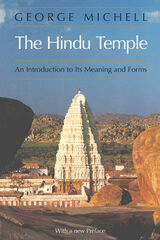 The Hindu Temple: An Introduction to Its Meaning and Forms
George Michell
University of Chicago Press, 1988 For more than 1500 years, from the Indian subcontinent to the islands of the Indonesian archipelago, the temple has embodied and symbolized the Hindu worldview at its deepest level and inspired the greatest architectural and artistic achievements in Hindu Asia. In The Hindu Temple, considered the standard introduction to the subject, George Michell explains the cultural, religious, and architectural significance of the temple. He illustrates his points with a profusion of photographs, building plans, and drawings of architectural details, making the book a useful guide for travelers to Asia as well as an illuminating text for students of architecture, religion, and Asian civilizations.
Michell's discussion of the meaning and forms of the temple in Hindu society encompasses the awe-inspiring rock-cut temples at Ellora and Elephanta, the soaring superstructures and extraordinary sexual exhibitionism of the sculptures at Khajuraho, and the colossal mortuary temple of Angkor Vat, as well as the tiny iconic shrines that many Hindus wear around their necks and the simple shrines found under trees or near ponds.
Hinduism and Ecology: The Intersection of Earth, Sky, and Water
Christopher Key Chapple
Harvard University Press, 2000 This fourth volume in the series exploring religions and the environment investigates the role of the multifaceted Hindu tradition in the development of greater ecological awareness in India.
The twenty-two contributors ask how traditional concepts of nature in the classical texts might inspire or impede an eco-friendly attitude among modern Hindus, and they describe some grassroots approaches to environmental protection. They look to Gandhian principles of minimal consumption, self-reliance, simplicity, and sustainability. And they explore forests and sacred groves in text and tradition and review the political and religious controversies surrounding India’s sacred river systems.
 Hinduism Before Reform
Brian A. Hatcher
Harvard University Press, 2020 A bold retelling of the origins of contemporary Hinduism, and an argument against the long-established notion of religious reform.
By the early eighteenth century, the Mughal Empire was in decline, and the East India Company was making inroads into the subcontinent. A century later Christian missionaries, Hindu teachers, Muslim saints, and Sikh rebels formed the colorful religious fabric of colonial India. Focusing on two early nineteenth-century Hindu communities, the Brahmo Samaj and the Swaminarayan Sampraday, and their charismatic figureheads—the “cosmopolitan” Rammohun Roy and the “parochial” Swami Narayan—Brian Hatcher explores how urban and rural people thought about faith, ritual, and gods. Along the way he sketches a radical new view of the origins of contemporary Hinduism and overturns the idea of religious reform.
Hinduism Before Reform challenges the rigid structure of revelation-schism-reform-sect prevalent in much history of religion. Reform, in particular, plays an important role in how we think about influential Hindu movements and religious history at large. Through the lens of reform, one doctrine is inevitably backward-looking while another represents modernity. From this comparison flows a host of simplistic conclusions. Instead of presuming a clear dichotomy between backward and modern, Hatcher is interested in how religious authority is acquired and projected.
Hinduism Before Reform asks how religious history would look if we eschewed the obfuscating binary of progress and tradition. There is another way to conceptualize the origins and significance of these two Hindu movements, one that does not trap them within the teleology of a predetermined modernity.
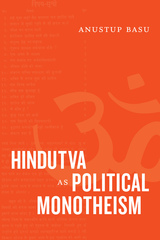 Hindutva as Political Monotheism
Anustup Basu
Duke University Press, 2020 In Hindutva as Political Monotheism, Anustup Basu offers a genealogical study of Hindutva—Hindu right-wing nationalism—to illustrate the significance of Western anthropology and political theory to the idea of India as a Hindu nation. Connecting Nazi jurist Carl Schmitt's notion of political theology to traditional theorems of Hindu sovereignty and nationhood, Basu demonstrates how Western and Indian theorists subsumed a vast array of polytheistic, pantheistic, and henotheistic cults featuring millions of gods into a singular edifice of faith. Basu exposes the purported “Hindu Nation” as itself an orientalist vision by analyzing three crucial moments: European anthropologists’ and Indian intellectuals’ invention of a unified Hinduism during the long nineteenth century; Indian ideologues’ adoption of ethnoreligious nationalism in pursuit of a single Hindu way of life in the twentieth century; and the transformations of this project in the era of finance capital, Bollywood, and new media. Arguing that Hindutva aligns with Enlightenment notions of nationalism, Basu foregrounds its significance not just to Narendra Modi's right-wing, anti-Muslim government but also to mainstream Indian nationalism and its credo of secularism and tolerance.
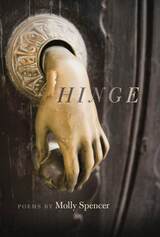 Hinge
Molly Spencer
Southern Illinois University Press, 2020 Finding joy and beauty in the face of suffering Readers enter “a stunted world,” where landmarks—a river, a house, a woman’s own body—have become unrecognizable in a place as distorted and dangerous as any of the old tales poet Molly Spencer remasters in this elegant, mournful collection. In myth and memory, through familiar stories reimagined, she constructs poetry for anyone who has ever stumbled, unwillingly, into a wilderness. In these alluring poems, myth becomes part of the arsenal used to confront the flaws and failures of our fallible bodies. Shadowing the trajectory of an elegy, this poetry collection of lament, remembrance, and solace wrestles with how we come to terms with suffering while still finding joy, meaning, and beauty. Spencer alternates between the clinical and the domestic, disorientation and reorientation, awe and awareness. With the onset of a painful chronic illness, the body and mental geography turn hostile and alien. In loss and grief, in physical and psychological landscapes, Spencer searches the relationship between a woman’s body and her house—places where she is both master and captive—and hunts for the meaning of suffering. Finally, with begrudging acceptance, we have a hypothesis for all seasons: there is suffering, there is mercy; they are not separate but are for and of one another.
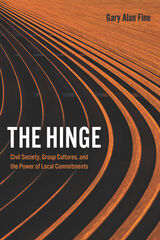 The Hinge: Civil Society, Group Cultures, and the Power of Local Commitments
Gary Alan Fine
University of Chicago Press, 2021 Most of the time, we believe our daily lives to be governed by structures determined from above: laws that dictate our behavior, companies that pay our wages, even climate patterns that determine what we eat or where we live. In contrast, social organization is often a feature of local organization. While those forces may seem beyond individual grasp, we often come together in small communities to change circumstances that would otherwise flatten us. Challenging traditional sociological models of powerful forces, in The Hinge, Gary Alan Fine emphasizes and describes those meso-level collectives, the organizations that bridge our individual interests and the larger structures that shape our lives. Focusing on “tiny publics,” he describes meso-level social collectives as “hinges”: groups that come together to pursue a shared social goal, bridging the individual and the broader society. Understanding these hinges, Fine argues, is crucial to explaining how societies function, creating links between the micro- and macro-orders of society. He draws on historical cases and fieldwork to illustrate how these hinges work and how to describe them. In The Hinge, Fine has given us powerful new theoretical tools for understanding an essential part of our social worlds.
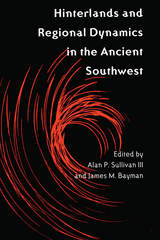 Hinterlands and Regional Dynamics in the Ancient Southwest
Alan P. Sullivan
University of Arizona Press, 2007 Hinterlands and Regional Dynamics in the Ancient Southwest is the first volume dedicated to understanding the nature of and changes in regional social autonomy, political hegemony, and organizational complexity across the entire prehistoric American Southwest. With geographic coverage extending from the Great Plains to the Colorado River, and from Mesa Verde to the international border, the volume’s ten case studies synthesize research that enhances our understanding of the ancient Southwest’s highly variable demographic, land use, and economic histories. For this volume, “hinterlands” are those areas whose archaeological records do not disclose the ceramic, architectural, and network evidence that initially led to the establishment of the Hohokam, Chaco, and Casas Grandes regional systems. Employing a variety of perspectives, such as the cultural landscapes approach, heterarchy, and the common-pool resource model, as well as technical methods, such as petrographic and stylistic-attribute analyses, the volume’s contributors explore variation in hinterland identities, subsistence ecology, and sociopolitical organization as regional systems expanded and contracted between the 9th and 14th centuries AD. The hinterlands of the prehistoric Southwest were home to a substantial number of people and were often used as resource catchments by the inhabitants of regional systems. Importantly, hinterlands also influenced developments of nearby regional systems, under whose footprint they managed to retain considerable autonomy. By considering the dynamics between hinterlands and regional systems, the volume reveals unappreciated aspects of the ancient Southwest’s peoples and their lives, thereby deepening our awareness of the region’s rich and complicated cultural past.
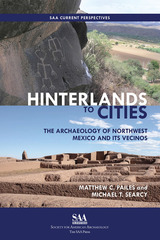 Hinterlands to Cities: The Archaeology of Northwest Mexico and Its Vecinos
Matthew C. Pailes
University Press of Colorado, 2022 This approachable book in the SAA Press Current Perspectives Series is a comprehensive synthesis of Northwest Mexico from the US border to the Mesoamerican frontier. Filling a vital gap in the regional literature, it serves as an essential reference not only for those interested in the specific history of this area of Mexico but western North America writ large. A period-by-period review of approximately 14,000 years reveals the dynamic connections that knitted together societies inhabiting the Sea of Cortez coast, the Sonoran and Chihuahuan Deserts, and the Sierra Madre Occidental. Networks of interaction spanned these diverse ecological, topographical, and cultural terrains in the millennia following the demise of the megafauna. The authors provide a fresh perspective that refutes depictions of the Northwest as a simple filter or conduit of happenings to the north or south, and they highlight the role local motivations and dynamics played in facilitating continental-scale processes.
Hinton Rowan Helper: Abolitionist and Racist
Hugh C. Bailey
University of Alabama Press, 1965 Statistical fanatic, abolitionist, militant racist
Hinton Rowan Helper—a statistical fanatic, abolitionist, militant racist, Republican propagandist, ardent patriot, international railway projector, and promoter of inter-American co-operation was a man of great paradox and tragedy. Born and reared a Southerner, he became a caustic and potent critic of slavery, who sought to “liberate” his people from its burdens. Unlike many of his Northern abolitionist friends, however, he loathed not only the Negro but most “non-Anglo-Saxon peoples.” It is shocking to read Helper's violent pleas for abolition and to know of his contempt for the Negro.
 Hints And Disguises: Marianne Moore Contemporaries
Celeste Goodridge
University of Iowa Press, 1989
The first book-length exploration of Marianne Moore's prose focuses on her private and public critical exchanges with Wallace Stevens, Ezra Pound, William Carlos Williams, and T.S. Eliot. Drawing on previously unpublished material from the Moore Archive—correspondence, notebooks, manuscript notes, and books—Celeste Goodridge establishes Moore's central role as both poet-critic and prose stylist, providing a new perspective for considering Moore in relation to her contemporaries.
With clarity and elegance, Goodridge shows that Moore's most compelling critical judgments can best be recovered by examining the relationship between her private disclosures and her public pronouncements; her aesthetic of "hints and disguises" reveals a tension between what she felt free to voice and what she chose to veil.
In writing about these four poets, Moore made her greatest contribution to modernist criticism. With unusual perspicacity, she anticipated and defined many of the critical debates which still surround these writers' projects. Furthermore, Moore's critical exchanges indicated that her deepest alliances were with Stevens and Pound and not, as most have argued, with Williams and Eliot.
 Hints of His Mortality
David Borofka
University of Iowa Press, 1996 The award-winning stories in David Borofka's Hints of His Mortality focus on the male of the species, on bewildered, guilt-ridden, hypersensitive characters adrift in a sea of changing roles and expectations. Although they yearn for the ideal—whether physical or spiritual—and for that sense of divine connection suggested by Wordsworth's Intimations of Immortality, they usually end up settling for what seems the next best thing: sex or religion. The amorous scrimmage between male and female in these taut, intense stories is a contest that leaves no one unmarked. The hapless ministers in Borofka's memorable collection find that their daily grind of professional piety leaves them with more questions than answers. The men and boys in Hints of His Mortality are always aware of their flaws, for Borofka's vital characters have the capacity to register the shadows of their every blemish. Like Ferguson of the title story, haunted for twenty years by his failures of conscience, each protagonist experiences the inexorable fallibility of his own nature, agonizes over his moral weakness, and longs for escape from this life in which “our birth is but a sleep and a forgetting." Yet each is redeemed by his ongoing struggle for compassion and understanding.
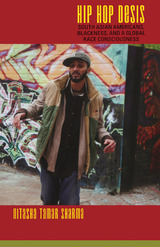 Hip Hop Desis: South Asian Americans, Blackness, and a Global Race Consciousness
Nitasha Tamar Sharma
Duke University Press, 2010 Hip Hop Desis explores the aesthetics and politics of South Asian American (desi) hip hop artists. Nitasha Tamar Sharma argues that through their lives and lyrics, young “hip hop desis” express a global race consciousness that reflects both their sense of connection with Blacks as racialized minorities in the United States and their diasporic sensibility as part of a global community of South Asians. She emphasizes the role of appropriation and sampling in the ways that hip hop desis craft their identities, create art, and pursue social activism. Some desi artists produce what she calls “ethnic hip hop,” incorporating South Asian languages, instruments, and immigrant themes. Through ethnic hip hop, artists, including KB, Sammy, and Deejay Bella, express “alternative desiness,” challenging assumptions about their identities as South Asians, children of immigrants, minorities, and Americans. Hip hop desis also contest and seek to bridge perceived divisions between Blacks and South Asian Americans. By taking up themes considered irrelevant to many Asian Americans, desi performers, such as D’Lo, Chee Malabar of Himalayan Project, and Rawj of Feenom Circle, create a multiracial form of Black popular culture to fight racism and enact social change.
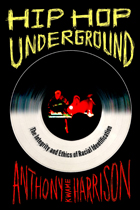 Hip Hop Underground: The Integrity and Ethics of Racial Identification
Anthony Kwame Harrison
Temple University Press, 2009 Hip Hop Underground is a vivid ethnography of the author's observations and experiences in the multiracial world of the San Francisco underground hip hop scene. While Anthony Kwame Harrison interviewed area hip hop artists for this entertaining and informative book, he also performed as the emcee "Mad Squirrel." His immersion in the subculture provides him with unique insights into this dynamic and racially diverse but close-knit community. Hip Hop Underground examines the changing nature of race among young Americans, and examines the issues of ethnic and racial identification, interaction, and understanding. Critiquing the notion that the Bay Area underground music scene is genuinely "colorblind," Harrison focuses on the issue of race to show how various ethnic groups engage hip hop in remarkably divergent ways—as a means to both claim subcultural legitimacy and establish their racial authenticity.
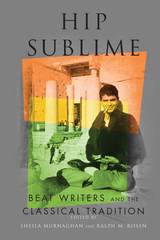 Hip Sublime: Beat Writers and the Classical Tradition
Edited by Sheila Murnaghan and Ralph M. Rosen
Ohio State University Press, 2018 Despite their self-presentation as iconoclasts, the writers of the Beat Generation were deeply engaged with the classical tradition. Many of them were university-trained and highly conscious of their literary forebears, and they frequently incorporated their knowledge of Greco-Roman literature into their own subversive, experimental practice. Seeking to transcend the superficiality, commercialism, and precariousness of life in post–World War II America, the Beat writers found in their classical models both a venerable literary heritage and a discourse of sublimity through which to articulate their desire for purity.
In this volume, a diverse group of contributors explore for the first time the fascinating tensions and paradoxes that arose from interactions between these avant-garde writers and a literary tradition often seen as conservative and culturally hegemonic. With essays that cover the canonical Beat authors—such as Allen Ginsberg, Jack Kerouac, and William Burroughs—along with less well-known figures—including Kenneth Rexroth, Ed Sanders, and Diane di Prima—Hip Sublime: Beat Writers and the Classical Tradition brings long overdue attention to the Beat movement’s formative appropriation of the Greek and Latin classics.
Hipbillies: Deep Revolution in the Arkansas Ozarks
Jared M. Phillips
University of Arkansas Press, 2019 Counterculture flourished nationwide in the 1960s and 1970s, and while the hippies of Haight–Ashbury occupied the public eye, a faction of back to the landers were quietly creating their own haven off the beaten path in the Arkansas Ozarks. In Hipbillies, Jared Phillips combines oral histories and archival resources to weave the story of the Ozarks and its population of country beatniks into the national narrative, showing how the back to the landers engaged in “deep revolution” by sharing their ideas on rural development, small farm economy, and education with the locals—and how they became a fascinating part of a traditional region’s coming to terms with the modern world in the process.
Hip-Hop Archives: The Politics and Poetics of Knowledge Production
Mark V. Campbell and Murray Forman
Intellect Books, 2025 A collection of essays on archiving the history of hip-hop, featuring a range of official, unofficial, DIY, and community archives.
Despite the vast popularity and cultural influence of hip-hop, efforts to archive its history are still in fairly early stages. This book focuses on the cultural and political aspects of those undertakings. It addresses practical aspects, including methods of collection, curation, preservation, and digitization, and critically analyzes institutional power, community engagement, urban economics, public access, and the ideological implications of hip-hop culture’s enduring tensions with dominant social values. A wide swath of hip-hop culture is covered by the contributors, including dance, graffiti, clothing, and battle rap.
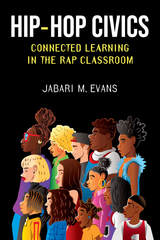 Hip-Hop Civics: Connected Learning in the Rap Classroom
Jabari M. Evans
University of Michigan Press, 2025 In Hip-Hop Civics, Jabari Evans demonstrates how Hip-Hop can be deployed in revamping formal civic education for Black and Brown youth. Based on an original ethnographic study of a Hip-Hop-based education program, the Songwriting and Production Program (SWP) administered by the Foundation of Music in two of Chicago’s lowest performing public schools, Evans argues that Hip-Hop culture is central to students’ lives and can be used as a vehicle for students to engage in civic practices and extract critical lessons about mainstream media, relational currency, identity development, and race/racism within the classroom. Through a compelling exploration of the SWP program, Evans contends that Hip-Hop should be part of formal education spaces and instruction, a conclusion he reaches through his understanding of how Hip-Hop impacted his own life, and by witnessing students discuss, write, and produce Hip-Hop music as part of the SWP program.
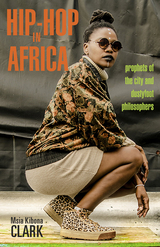 Hip-Hop in Africa: Prophets of the City and Dustyfoot Philosophers
Msia Kibona Clark
Ohio University Press, 2018 Throughout Africa, artists use hip-hop both to describe their lives and to create shared spaces for uncensored social commentary, feminist challenges to patriarchy, and resistance against state institutions, while at the same time engaging with the global hip-hop community. In Hip-Hop in Africa, Msia Kibona Clark examines some of Africa’s biggest hip-hop scenes and shows how hip-hop helps us understand specifically African narratives of social, political, and economic realities. Clark looks at the use of hip-hop in protest, both as a means of articulating social problems and as a tool for mobilizing listeners around those problems. She also details the spread of hip-hop culture in Africa following its emergence in the United States, assessing the impact of urbanization and demographics on the spread of hip-hop culture. Hip-Hop in Africa is a tribute to a genre and its artists as well as a timely examination that pushes the study of music and diaspora in critical new directions. Accessibly written by one of the foremost experts on African hip-hop, this book will easily find its place in the classroom.
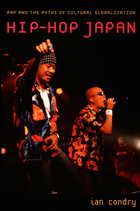 Hip-Hop Japan: Rap and the Paths of Cultural Globalization
Ian Condry
Duke University Press, 2006 In this lively ethnography Ian Condry interprets Japan’s vibrant hip-hop scene, explaining how a music and culture that originated halfway around the world is appropriated and remade in Tokyo clubs and recording studios. Illuminating different aspects of Japanese hip-hop, Condry chronicles how self-described “yellow B-Boys” express their devotion to “black culture,” how they combine the figure of the samurai with American rapping techniques and gangsta imagery, and how underground artists compete with pop icons to define “real” Japanese hip-hop. He discusses how rappers manipulate the Japanese language to achieve rhyme and rhythmic flow and how Japan’s female rappers struggle to find a place in a male-dominated genre. Condry pays particular attention to the messages of emcees, considering how their raps take on subjects including Japan’s education system, its sex industry, teenage bullying victims turned schoolyard murderers, and even America’s handling of the war on terror. Condry attended more than 120 hip-hop performances in clubs in and around Tokyo, sat in on dozens of studio recording sessions, and interviewed rappers, music company executives, music store owners, and journalists. Situating the voices of Japanese artists in the specific nightclubs where hip-hop is performed—what musicians and fans call the genba (actual site) of the scene—he draws attention to the collaborative, improvisatory character of cultural globalization. He contends that it was the pull of grassroots connections and individual performers rather than the push of big media corporations that initially energized and popularized hip-hop in Japan. Zeebra, DJ Krush, Crazy-A, Rhymester, and a host of other artists created Japanese rap, one performance at a time.
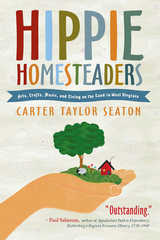 Hippie Homesteaders: Arts, Crafts, Music and Living on the Land in West Virginia
Carter Taylor Seaton
West Virginia University Press, 2014 It’s the 1960s. The Vietnam War is raging and protests are erupting across the United States. In many quarters, young people are dropping out of society, leaving their urban homes behind in an attempt to find a safe place to live on their own terms, to grow their own food, and to avoid a war they passionately decry. During this time, West Virginia becomes a haven for thousands of these homesteaders—or back-to-the-landers, as they are termed by some. Others call them hippies. When the going got rough, many left. But a significant number remain to this day. Some were artisans when they arrived, while others adopted a craft that provided them with the cash necessary to survive. Hippie Homesteaders tells the story of this movement from the viewpoint of forty artisans and musicians who came to the state, lived on the land, and created successful careers with their craft. There’s the couple that made baskets coveted by the Smithsonian Institution’s Renwick Gallery. There’s the draft-dodger that fled to Canada and then became a premier furniture maker. There’s the Boston-born VISTA worker who started a quilting cooperative. And, there’s the immigrant Chinese potter who lived on a commune. Along with these stories, Hippie Homesteaders examines the serendipitous timing of this influx and the community and economic support these crafters received from residents and state agencies in West Virginia. Without these young transplants, it’s possible there would be no Tamarack: The Best of West Virginia, the first statewide collection of fine arts and handcrafts in the nation, and no Mountain Stage, the weekly live musical program broadcast worldwide on National Public Radio since 1983. Forget what you know about West Virginia. Hippie Homesteaders isn’t about coal or hillbillies or moonshine or poverty. It is the story of why West Virginia was—and still is—a kind of heaven to so many.
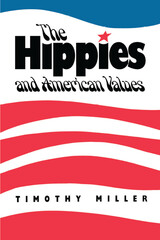 Hippies American Values
Timothy S. Miller
University of Tennessee Press, 1991 "The sixties' political agenda may have been ground down to ambiguity at best, but moral and spiritual America will never again be quite what it was before the coming of the hippies, and Miller has shown how and why."—Robert S. Ellwood, University of Southern California
The hippies of the late 1960s were cultural dissenters who, among other things, advocated drastic rethinking of certain traditional American values and standards. In this lucid, lively survey, Timothy Miller traces the movement's ethical innovations and analyzes the impact of its ideas on subsequent American culture.
Dedicated to such tenets as the primacy of love, trust in intuition and direct experience, the rejection of meaningless work, and a disdain for money and materialism, the hippies advocated dropping out of the dominant culture, and proposed new and more permissive ethics in several areas. They argued that, while some drugs were indeed harmful, others provided useful insights and experiences and therefore should be freely available and widely used. They endorsed a liberal ethics of sex, in which no sexual act between or among consenting adults would be banned. They developed an ethics of rock-and-roll music, arguing that rock was the language of a generation and that it helped promote new ways of thinking and living. They also revived the venerable American tradition of communal living.
In contrast to most available literature on the 1960s, this book deals with the cultural revolutionaries and not the political radicals of the New Left. And instead of relying on later interviews with persons who were active in the 1960s, Miller draws mainly on underground newspapers of the day, the most important literary creation of the hippies themselves. The result is a historical encounter of rare immediacy.
Timothy Miller is assistant professor of religious studies at the University of Kansas.
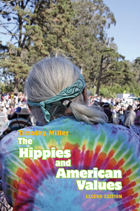 The Hippies and American Values
Timothy S. Miller
University of Tennessee Press, 2011
“Turn on, tune in, drop out,” Timothy Leary advised young people in the 1960s. And many did, creating a counterculture built on drugs, rock music, sexual liberation, and communal living. The hippies preached free love, promoted flower power, and cautioned against trusting anyone over thirty. Eschewing money, materialism, and politics, they repudiated the mainstream values of the times. Along the way, these counterculturists created a lasting legacy and inspired long-lasting social changes.
The Hippies and American Values uses an innovative approach to exploring the tenets of the counterculture movement. Rather than relying on interviews conducted years after the fact, Timothy Miller uses “underground” newspapers published at the time to provide a full and in-depth exploration. This reliance on primary sources brings an immediacy and vibrancy rarely seen in other studies of the period.
Miller focuses primarily on the cultural revolutionaries rather than on the political radicals of the New Left. It examines the hippies’ ethics of dope, sex, rock, community, and cultural opposition and surveys their effects on current American values. Filled with illustrations from alternative publications, along with posters, cartoons, and photographs, The Hippies and American Values provides a graphic look at America in the 1960s.
This second edition features a new introduction and a thoroughly updated, well-documented text. Highly readable and engaging, this volume brings deep insight to the counterculture movement and the ways it changed America. The first edition became a widely used course-adoption favorite, and scholars and students of the 1960s will welcome the second edition of this thought-provoking book.
 Hippocrates, Volume I: Ancient Medicine. Airs, Waters, Places. Epidemics 1 and 3. The Oath. Precepts. Nutriment
Hippocrates
Harvard University Press, 2022 The definitive English edition of the “Father of Medicine.”
This is the first volume in the Loeb Classical Library’s complete edition of Hippocrates’ invaluable texts, which provide essential information about the practice of medicine in antiquity and about Greek theories concerning the human body. Here, Paul Potter presents the Greek text with facing English translation of five treatises that showcase the range of Hippocratic theory, philosophy, and practice: Ancient Medicine; Airs, Waters, Places; Epidemics 1 and 3; Precepts; and Nutriment. Also included is the famous Hippocratic Oath.
This Loeb edition replaces the original by W. H. S. Jones.
The works available in the Loeb Classical Library edition of Hippocrates are:
Volume I: Ancient Medicine. Airs, Waters, Places. Epidemics 1 and 3. The Oath. Precepts. Nutriment.
Volume II: Prognostic. Regimen in Acute Diseases. The Sacred Disease. The Art. Breaths. Law. Decorum. Dentition.
Volume III: On Wounds in the Head. In the Surgery. On Fractures. On Joints. Mochlicon.
Volume IV: Nature of Man. Regimen in Health. Humors. Aphorisms. Regimen 1–3. Dreams.
Volume V: Affections. Diseases 1–2.
Volume VI: Diseases 3. Internal Affections. Regimen in Acute Diseases.
Volume VII: Epidemics 2 and 4–7.
Volume VIII: Places in Man. Glands. Fleshes. Prorrhetic 1–2. Physician. Use of Liquids. Ulcers. Haemorrhoids and Fistulas.
Volume IX: Anatomy. Nature of Bones. Heart. Eight Months’ Child. Coan Prenotions. Crises. Critical Days. Superfetation. Girls. Excision of the Fetus. Sight.
Volume X: Generation. Nature of the Child. Diseases 4. Nature of Women. Barrenness.
Volume XI: Diseases of Women 1–2.
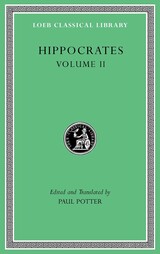 Hippocrates, Volume II: Prognostic. Regimen in Acute Diseases. The Sacred Disease. The Art. Breaths. Law. Decorum. Dentition
Hippocrates
Harvard University Press, 2023 The definitive English edition of the “Father of Medicine.”
This is the second volume in the Loeb Classical Library’s complete edition of Hippocrates’ invaluable texts, which provide essential information about the practice of medicine in antiquity and about Greek theories concerning the human body. The first two treatises, Prognostic and Regimen in Acute Diseases, are manuals respectively on how to predict the course and outcome of acute diseases and how to apply appropriate dietetic measures. Sacred Disease, The Art, and Breaths are rhetorically polished monographs, each arguing in favor of a specific hypothesis: that sacred disease is a misnomer; that medicine is a legitimate art; and that air plays important roles in life and health. Law sketches a new model of medical education; Decorum summarizes a public address on the components of medical wisdom; and Dentition collects pediatric aphorisms dealing mainly with the nursing of infants and ulcerations of their tonsils, uvula, and throat.
This Loeb edition replaces the original by W. H. S. Jones.
The works available in the Loeb Classical Library edition of Hippocrates are:
Volume I: Ancient Medicine. Airs, Waters, Places. Epidemics 1 and 3. The Oath. Precepts. Nutriment.
Volume II: Prognostic. Regimen in Acute Diseases. The Sacred Disease. The Art. Breaths. Law. Decorum. Dentition.
Volume III: On Wounds in the Head. In the Surgery. On Fractures. On Joints. Mochlicon.
Volume IV: Nature of Man. Regimen in Health. Humors. Aphorisms. Regimen 1–3. Dreams.
Volume V: Affections. Diseases 1–2.
Volume VI: Diseases 3. Internal Affections. Regimen in Acute Diseases.
Volume VII: Epidemics 2 and 4–7.
Volume VIII: Places in Man. Glands. Fleshes. Prorrhetic 1–2. Physician. Use of Liquids. Ulcers. Haemorrhoids and Fistulas.
Volume IX: Anatomy. Nature of Bones. Heart. Eight Months’ Child. Coan Prenotions. Crises. Critical Days. Superfetation. Girls. Excision of the Fetus. Sight.
Volume X: Generation. Nature of the Child. Diseases 4. Nature of Women. Barrenness.
Volume XI: Diseases of Women 1–2.
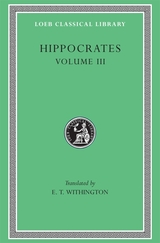 Hippocrates, Volume III: On Wounds in the Head. In the Surgery. On Fractures. On Joints. Mochlicon
Hippocrates
Harvard University Press The definitive English edition of the “Father of Medicine.”
Hippocrates, said to have been born in Cos in or before 460 BC, learned medicine and philosophy; traveled widely as a medical doctor and teacher; was consulted by King Perdiccas of Macedon and Artaxerxes of Persia; and died perhaps at Larissa. Apparently he rejected superstition in favor of inductive reasoning and the study of real medicine as subject to natural laws, in general and in individual people as patients for treatment by medicines and surgery. Of the roughly seventy works in the “Hippocratic Collection” many are not by Hippocrates; even the famous oath may not be his. But he was undeniably the “Father of Medicine.”
The works available in the Loeb Classical Library edition of Hippocrates are:
Volume I: Ancient Medicine. Airs, Waters, Places. Epidemics 1 and 3. The Oath. Precepts. Nutriment.
Volume II: Prognostic. Regimen in Acute Diseases. The Sacred Disease. The Art. Breaths. Law. Decorum. Dentition.
Volume III: On Wounds in the Head. In the Surgery. On Fractures. On Joints. Mochlicon.
Volume IV: Nature of Man. Regimen in Health. Humors. Aphorisms. Regimen 1–3. Dreams.
Volume V: Affections. Diseases 1–2.
Volume VI: Diseases 3. Internal Affections. Regimen in Acute Diseases.
Volume VII: Epidemics 2 and 4–7.
Volume VIII: Places in Man. Glands. Fleshes. Prorrhetic 1–2. Physician. Use of Liquids. Ulcers. Haemorrhoids and Fistulas.
Volume IX: Anatomy. Nature of Bones. Heart. Eight Months’ Child. Coan Prenotions. Crises. Critical Days. Superfetation. Girls. Excision of the Fetus. Sight.
Volume X: Generation. Nature of the Child. Diseases 4. Nature of Women. Barrenness.
Volume XI: Diseases of Women 1–2.
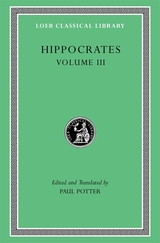 Hippocrates, Volume III: Wounds in the Head. In the Surgery. Fractures. Joints. Instruments of Reduction
Hippocrates
Harvard University Press The definitive English edition of the “Father of Medicine.”
This is the third volume in the Loeb Classical Library’s complete edition of Hippocrates’ invaluable texts, which provide essential information about the practice of medicine in antiquity and about Greek theories concerning the human body. The five treatises in this volume, integral parts of the Hippocratic collection, are devoted to the art of surgery in treating injuries or disorders of the bones and their articulations. Wounds in the Head includes an anatomical introduction and many methods useful in diagnosis, prognosis, and management; In the Surgery surveys the surgeon’s office, staff, equipment, and general practice; Fractures and Joints deliver technical information with rhetorical flair; and Instruments of Reduction (Mochlicon) is a head-to-toe account of human bones, their injuries, and applicable treatments.
This Loeb edition replaces the original by E. T. Withington.
The works available in the Loeb Classical Library edition of Hippocrates are:
Volume I: Ancient Medicine. Airs, Waters, Places. Epidemics 1 and 3. The Oath. Precepts. Nutriment.
Volume II: Prognostic. Regimen in Acute Diseases. The Sacred Disease. The Art. Breaths. Law. Decorum. Dentition.
Volume III: On Wounds in the Head. In the Surgery. On Fractures. On Joints. Mochlicon.
Volume IV: Nature of Man. Regimen in Health. Humors. Aphorisms. Regimen 1–3. Dreams.
Volume V: Affections. Diseases 1–2.
Volume VI: Diseases 3. Internal Affections. Regimen in Acute Diseases.
Volume VII: Epidemics 2 and 4–7.
Volume VIII: Places in Man. Glands. Fleshes. Prorrhetic 1–2. Physician. Use of Liquids. Ulcers. Haemorrhoids and Fistulas.
Volume IX: Anatomy. Nature of Bones. Heart. Eight Months’ Child. Coan Prenotions. Crises. Critical Days. Superfetation. Girls. Excision of the Fetus. Sight.
Volume X: Generation. Nature of the Child. Diseases 4. Nature of Women. Barrenness.
Volume XI: Diseases of Women 1–2.
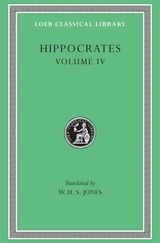 Hippocrates, Volume IV: Nature of Man. Regimen in Health. Humours. Aphorisms. Regimen 1–3. Dreams. Heracleitus: On the Universe
Hippocrates. Heracleitus
Harvard University Press The definitive English edition of the “Father of Medicine.”
Hippocrates, said to have been born in Cos in or before 460 BC, learned medicine and philosophy; traveled widely as a medical doctor and teacher; was consulted by King Perdiccas of Macedon and Artaxerxes of Persia; and died perhaps at Larissa. Apparently he rejected superstition in favor of inductive reasoning and the study of real medicine as subject to natural laws, in general and in individual people as patients for treatment by medicines and surgery. Of the roughly seventy works in the “Hippocratic Collection” many are not by Hippocrates; even the famous oath may not be his. But he was undeniably the “Father of Medicine.”
The works available in the Loeb Classical Library edition of Hippocrates are:
Volume I: Ancient Medicine. Airs, Waters, Places. Epidemics 1 and 3. The Oath. Precepts. Nutriment.
Volume II: Prognostic. Regimen in Acute Diseases. The Sacred Disease. The Art. Breaths. Law. Decorum. Dentition.
Volume III: On Wounds in the Head. In the Surgery. On Fractures. On Joints. Mochlicon.
Volume IV: Nature of Man. Regimen in Health. Humors. Aphorisms. Regimen 1–3. Dreams.
Volume V: Affections. Diseases 1–2.
Volume VI: Diseases 3. Internal Affections. Regimen in Acute Diseases.
Volume VII: Epidemics 2 and 4–7.
Volume VIII: Places in Man. Glands. Fleshes. Prorrhetic 1–2. Physician. Use of Liquids. Ulcers. Haemorrhoids and Fistulas.
Volume IX: Anatomy. Nature of Bones. Heart. Eight Months’ Child. Coan Prenotions. Crises. Critical Days. Superfetation. Girls. Excision of the Fetus. Sight.
Volume X: Generation. Nature of the Child. Diseases 4. Nature of Women. Barrenness.
Volume XI: Diseases of Women 1–2.
 Hippocrates, Volume IX: Coan Prenotions. Anatomical and Minor Clinical Writings
Hippocrates
Harvard University Press, 1923 The definitive English edition of the “Father of Medicine.”
This is the ninth volume in the Loeb Classical Library’s ongoing edition of Hippocrates’ invaluable texts, which provide essential information about the practice of medicine in antiquity and about Greek theories concerning the human body. Here Paul Potter presents the Greek text with facing English translation of eleven treatises, four previously unavailable in English, that illuminate Hippocratic medicine in such areas as anatomy, physiology, prognosis and clinical signs, obstetrics, and ophthalmology.
The works available in the Loeb Classical Library edition of Hippocrates are:
Volume I: Ancient Medicine. Airs, Waters, Places. Epidemics 1 and 3. The Oath. Precepts. Nutriment.
Volume II: Prognostic. Regimen in Acute Diseases. The Sacred Disease. The Art. Breaths. Law. Decorum. Dentition.
Volume III: On Wounds in the Head. In the Surgery. On Fractures. On Joints. Mochlicon.
Volume IV: Nature of Man. Regimen in Health. Humors. Aphorisms. Regimen 1–3. Dreams.
Volume V: Affections. Diseases 1–2.
Volume VI: Diseases 3. Internal Affections. Regimen in Acute Diseases.
Volume VII: Epidemics 2 and 4–7.
Volume VIII: Places in Man. Glands. Fleshes. Prorrhetic 1–2. Physician. Use of Liquids. Ulcers. Haemorrhoids and Fistulas.
Volume IX: Anatomy. Nature of Bones. Heart. Eight Months’ Child. Coan Prenotions. Crises. Critical Days. Superfetation. Girls. Excision of the Fetus. Sight.
Volume X: Generation. Nature of the Child. Diseases 4. Nature of Women. Barrenness.
Volume XI: Diseases of Women 1–2.
 Hippocrates, Volume V: Affections. Diseases 1–2
Hippocrates
Harvard University Press, 1923 The definitive English edition of the “Father of Medicine.”
Hippocrates, said to have been born in Cos in or before 460 BC, learned medicine and philosophy; traveled widely as a medical doctor and teacher; was consulted by King Perdiccas of Macedon and Artaxerxes of Persia; and died perhaps at Larissa. Apparently he rejected superstition in favor of inductive reasoning and the study of real medicine as subject to natural laws, in general and in individual people as patients for treatment by medicines and surgery. Of the roughly seventy works in the “Hippocratic Collection” many are not by Hippocrates; even the famous oath may not be his. But he was undeniably the “Father of Medicine.”
The works available in the Loeb Classical Library edition of Hippocrates are:
Volume I: Ancient Medicine. Airs, Waters, Places. Epidemics 1 and 3. The Oath. Precepts. Nutriment.
Volume II: Prognostic. Regimen in Acute Diseases. The Sacred Disease. The Art. Breaths. Law. Decorum. Dentition.
Volume III: On Wounds in the Head. In the Surgery. On Fractures. On Joints. Mochlicon.
Volume IV: Nature of Man. Regimen in Health. Humors. Aphorisms. Regimen 1–3. Dreams.
Volume V: Affections. Diseases 1–2.
Volume VI: Diseases 3. Internal Affections. Regimen in Acute Diseases.
Volume VII: Epidemics 2 and 4–7.
Volume VIII: Places in Man. Glands. Fleshes. Prorrhetic 1–2. Physician. Use of Liquids. Ulcers. Haemorrhoids and Fistulas.
Volume IX: Anatomy. Nature of Bones. Heart. Eight Months’ Child. Coan Prenotions. Crises. Critical Days. Superfetation. Girls. Excision of the Fetus. Sight.
Volume X: Generation. Nature of the Child. Diseases 4. Nature of Women. Barrenness.
Volume XI: Diseases of Women 1–2.
 Hippocrates, Volume VI: Diseases 3. Internal Affections. Regimen in Acute Diseases
Hippocrates
Harvard University Press, 1923 The definitive English edition of the “Father of Medicine.”
Hippocrates, said to have been born in Cos in or before 460 BC, learned medicine and philosophy; traveled widely as a medical doctor and teacher; was consulted by King Perdiccas of Macedon and Artaxerxes of Persia; and died perhaps at Larissa. Apparently he rejected superstition in favor of inductive reasoning and the study of real medicine as subject to natural laws, in general and in individual people as patients for treatment by medicines and surgery. Of the roughly seventy works in the “Hippocratic Collection” many are not by Hippocrates; even the famous oath may not be his. But he was undeniably the “Father of Medicine.”
The works available in the Loeb Classical Library edition of Hippocrates are:
Volume I: Ancient Medicine. Airs, Waters, Places. Epidemics 1 and 3. The Oath. Precepts. Nutriment.
Volume II: Prognostic. Regimen in Acute Diseases. The Sacred Disease. The Art. Breaths. Law. Decorum. Dentition.
Volume III: On Wounds in the Head. In the Surgery. On Fractures. On Joints. Mochlicon.
Volume IV: Nature of Man. Regimen in Health. Humors. Aphorisms. Regimen 1–3. Dreams.
Volume V: Affections. Diseases 1–2.
Volume VI: Diseases 3. Internal Affections. Regimen in Acute Diseases.
Volume VII: Epidemics 2 and 4–7.
Volume VIII: Places in Man. Glands. Fleshes. Prorrhetic 1–2. Physician. Use of Liquids. Ulcers. Haemorrhoids and Fistulas.
Volume IX: Anatomy. Nature of Bones. Heart. Eight Months’ Child. Coan Prenotions. Crises. Critical Days. Superfetation. Girls. Excision of the Fetus. Sight.
Volume X: Generation. Nature of the Child. Diseases 4. Nature of Women. Barrenness.
Volume XI: Diseases of Women 1–2.
 Hippocrates, Volume VII: Epidemics 2 and 4–7
Hippocrates
Harvard University Press, 1994 The definitive English edition of the “Father of Medicine.”
The medical treatises collected under Hippocrates’ name are essential sources of information about the practice of medicine in antiquity and about Greek theories concerning the human body. In this seventh volume of the ongoing Loeb edition of the Hippocratic Collection, Wesley Smith presents the first modern English translation of Books 2 and 4–7 of the Epidemics (the other two books are available in the first volume).
In the casebooks and notes that make up the seven books called Epidemics—the title originally meant ‘visits’—we can watch ancient physicians observing patients, noting and pondering symptoms, evaluating treatments, and developing theories about the body. They appear to be physicians’ notebooks from several areas of the Aegean basin. Smith supplements his clear translation with explanatory notes.
The works available in the Loeb Classical Library edition of Hippocrates are:
Volume I: Ancient Medicine. Airs, Waters, Places. Epidemics 1 and 3. The Oath. Precepts. Nutriment.
Volume II: Prognostic. Regimen in Acute Diseases. The Sacred Disease. The Art. Breaths. Law. Decorum. Dentition.
Volume III: On Wounds in the Head. In the Surgery. On Fractures. On Joints. Mochlicon.
Volume IV: Nature of Man. Regimen in Health. Humors. Aphorisms. Regimen 1–3. Dreams.
Volume V: Affections. Diseases 1–2.
Volume VI: Diseases 3. Internal Affections. Regimen in Acute Diseases.
Volume VII: Epidemics 2 and 4–7.
Volume VIII: Places in Man. Glands. Fleshes. Prorrhetic 1–2. Physician. Use of Liquids. Ulcers. Haemorrhoids and Fistulas.
Volume IX: Anatomy. Nature of Bones. Heart. Eight Months’ Child. Coan Prenotions. Crises. Critical Days. Superfetation. Girls. Excision of the Fetus. Sight.
Volume X: Generation. Nature of the Child. Diseases 4. Nature of Women. Barrenness.
Volume XI: Diseases of Women 1–2.
 Hippocrates, Volume VIII: Places in Man. Glands. Fleshes. Prorrhetic 1–2. Physician. Use of Liquids. Ulcers. Haemorrhoids and Fistulas
Hippocrates
Harvard University Press, 1923 The definitive English edition of the “Father of Medicine.”
The medical treatises collected under Hippocrates’ name are essential sources of information about the practice of medicine in antiquity and about Greek theories concerning the human body. In this eighth volume of the ongoing Loeb edition of these invaluable texts, Paul Potter presents ten treatises that offer an illuminating overview of Hippocratic medicine.
Three theoretical works—Places in Man, General Nature of Glands, and Fleshes—expound particular theories of anatomy and physiology and then elaborate on how disease and healing occur in the systems depicted. Prorrhetic 1 and 2 and Physician deal with symptoms and prognosis and with other aspects of the physician-patient relationship. And four practical manuals—Use of Liquids, Ulcers, Fistulas, and Haemorrhoids—give specific instruction for treatments. Thus from the writings in this volume we gain insight into the Hippocratic physician’s understanding of the body, his approach to his patient, and his methods for dealing with a variety of disorders.
The works available in the Loeb Classical Library edition of Hippocrates are:
Volume I: Ancient Medicine. Airs, Waters, Places. Epidemics 1 and 3. The Oath. Precepts. Nutriment.
Volume II: Prognostic. Regimen in Acute Diseases. The Sacred Disease. The Art. Breaths. Law. Decorum. Dentition.
Volume III: On Wounds in the Head. In the Surgery. On Fractures. On Joints. Mochlicon.
Volume IV: Nature of Man. Regimen in Health. Humors. Aphorisms. Regimen 1–3. Dreams.
Volume V: Affections. Diseases 1–2.
Volume VI: Diseases 3. Internal Affections. Regimen in Acute Diseases.
Volume VII: Epidemics 2 and 4–7.
Volume VIII: Places in Man. Glands. Fleshes. Prorrhetic 1–2. Physician. Use of Liquids. Ulcers. Haemorrhoids and Fistulas.
Volume IX: Anatomy. Nature of Bones. Heart. Eight Months’ Child. Coan Prenotions. Crises. Critical Days. Superfetation. Girls. Excision of the Fetus. Sight.
Volume X: Generation. Nature of the Child. Diseases 4. Nature of Women. Barrenness.
Volume XI: Diseases of Women 1–2.
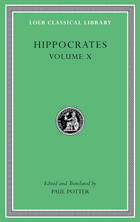 Hippocrates, Volume X: Generation. Nature of the Child. Diseases 4. Nature of Women. Barrenness
Hippocrates
Harvard University Press, 2012 The definitive English edition of the “Father of Medicine.”
This is the tenth volume in the Loeb Classical Library’s ongoing edition of Hippocrates’ invaluable texts, which provide essential information about the practice of medicine in antiquity and about Greek theories concerning the human body. Here, Paul Potter presents the Greek text with facing English translation of five treatises, four concerning human reproduction (Generation, Nature of the Child) and reproductive disorders (Nature of Women, Barrenness), and one (Diseases 4) that expounds a general theory of physiology and pathology.
The works available in the Loeb Classical Library edition of Hippocrates are:
Volume I: Ancient Medicine. Airs, Waters, Places. Epidemics 1 and 3. The Oath. Precepts. Nutriment.
Volume II: Prognostic. Regimen in Acute Diseases. The Sacred Disease. The Art. Breaths. Law. Decorum. Dentition.
Volume III: On Wounds in the Head. In the Surgery. On Fractures. On Joints. Mochlicon.
Volume IV: Nature of Man. Regimen in Health. Humors. Aphorisms. Regimen 1–3. Dreams.
Volume V: Affections. Diseases 1–2.
Volume VI: Diseases 3. Internal Affections. Regimen in Acute Diseases.
Volume VII: Epidemics 2 and 4–7.
Volume VIII: Places in Man. Glands. Fleshes. Prorrhetic 1–2. Physician. Use of Liquids. Ulcers. Haemorrhoids and Fistulas.
Volume IX: Anatomy. Nature of Bones. Heart. Eight Months’ Child. Coan Prenotions. Crises. Critical Days. Superfetation. Girls. Excision of the Fetus. Sight.
Volume X: Generation. Nature of the Child. Diseases 4. Nature of Women. Barrenness.
Volume XI: Diseases of Women 1–2.
 Hippocrates, Volume XI: Diseases of Women 1–2
Hippocrates
Harvard University Press, 1923 The definitive English edition of the “Father of Medicine.”
This is the eleventh and final volume in the Loeb Classical Library’s complete edition of Hippocrates’ invaluable texts, which provide essential information about the practice of medicine in antiquity and about Greek theories concerning the human body. Here, Paul Potter presents the Greek text with facing English translation of Diseases of Women 1 and 2, which represent the most extensive accounts in the Hippocratic collection of female reproductive life, the pathological conditions affecting the female reproductive organs, and their proper terminology and recommended treatments. A lexicon of therapeutic agents is included for reference.
The works available in the Loeb Classical Library edition of Hippocrates are:
Volume I: Ancient Medicine. Airs, Waters, Places. Epidemics 1 and 3. The Oath. Precepts. Nutriment.
Volume II: Prognostic. Regimen in Acute Diseases. The Sacred Disease. The Art. Breaths. Law. Decorum. Dentition.
Volume III: On Wounds in the Head. In the Surgery. On Fractures. On Joints. Mochlicon.
Volume IV: Nature of Man. Regimen in Health. Humors. Aphorisms. Regimen 1–3. Dreams.
Volume V: Affections. Diseases 1–2.
Volume VI: Diseases 3. Internal Affections. Regimen in Acute Diseases.
Volume VII: Epidemics 2 and 4–7.
Volume VIII: Places in Man. Glands. Fleshes. Prorrhetic 1–2. Physician. Use of Liquids. Ulcers. Haemorrhoids and Fistulas.
Volume IX: Anatomy. Nature of Bones. Heart. Eight Months’ Child. Coan Prenotions. Crises. Critical Days. Superfetation. Girls. Excision of the Fetus. Sight.
Volume X: Generation. Nature of the Child. Diseases 4. Nature of Women. Barrenness.
Volume XI: Diseases of Women 1–2.
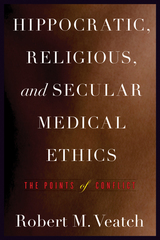 Hippocratic, Religious, and Secular Medical Ethics: The Points of Conflict
Robert M. Veatch
Georgetown University Press, 2015 Where should physicians get their ethics? Professional codes such as the Hippocratic Oath claim moral authority for those in a particular field, yet according to medical ethicist Robert Veatch, these codes have little or nothing to do with how members of a guild should understand morality or make ethical decisions. While the Hippocratic Oath continues to be cited by a wide array of professional associations, scholars, and medical students, Veatch contends that the pledge is such an offensive code of ethics that it should be summarily excised from the profession. What, then, should serve as a basis for medical morality? Building on his recent contribution to the prestigious Gifford Lectures, Veatch challenges the presumption that professional groups have the authority to declare codes of ethics for their members. To the contrary, he contends that role-specific duties must be derived from ethical norms having their foundations outside the profession, in religious and secular convictions. Further, these ethical norms must be comprehensible to lay people and patients. Veatch argues that there are some moral norms shared by most human beings that reflect a common morality, and ultimately it is these generally agreed-upon religious and secular ways of knowing—thus far best exemplified by the 2005 Universal Declaration on Bioethics and Human Rights—that should underpin the morality of all patient-professional relations in the field of medicine. Hippocratic, Religious, and Secular Medical Ethics is the magnum opus of one of the most distinguished medical ethicists of his generation.
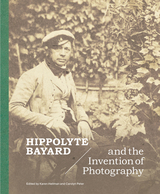 Hippolyte Bayard and the Invention of Photography
Karen Hellman
J. Paul Getty Trust, The, 2024 The first English-language volume about Hippolyte Bayard, one of the inventors of photography who helped transform the burgeoning medium into an art form.
Hippolyte Bayard (1801–1887) is often characterized as an underdog in the early history of photography. From the outset, his contribution to the invention of the medium was eclipsed by others such as Louis-Jacques-Mandé Daguerre (1787–1851) and William Henry Fox Talbot (1800–1877). However, Bayard had an undeniable role in the birth of photography and its subsequent evolution into a form of art. He was a pioneer in artistic style, innovator in terms of practice, and teacher of the next generation of photographers.
Alongside an exploration of Bayard’s decades-long career and lasting impact, this volume presents—for the first time in print—some of the earliest photographs in existence. An album containing nearly 200 images, 145 of those by or attributed to Bayard, is among the Getty Museum’s rarest and most treasured photographic holdings. Few prints have ever been seen in person due to the extreme light sensitivity of Bayard’s experimental processes, making this an essential reference for scholars and enthusiasts of the very beginning of photography.
This volume is published to accompany an exhibition on view at the J. Paul Getty Museum at the Getty Center from April 9 to July 7, 2024.
 Hippota Nestor
Douglas Frame
Harvard University Press, 2009 This book is about the Homeric figure Nestor. This study is important because it reveals a level of deliberate irony in the Homeric poems that has hitherto not been suspected, and because Nestor’s role in the poems, which is built on this irony, is a key to the circumstances of the poems’ composition.
Nestor’s stories about the past, especially his own youth, often lack purpose on the surface of the poems, but with a slight shift of focus they provide a deep commentary on the present action of both poems. Nestor’s Homeric epithet, hippota, “the horseman,” permits the necessary refocus. The combination of epithet and name, hippota Nestor, has Indo-European roots, as a comparison with Vedic Sanskrit shows. Interpreted in the context of the Indo-European twin myth, Nestor’s role clearly points beyond itself to the key question in Homeric studies: the circumstances of the poems’ composition.
Nestor has a special relation to Ionia, where the Homeric poems were composed, and through Ionia to early Athens. The relationship between the Ionian city of Miletus and early Athens is particularly important. In addition to the role of these cities, the location of Nestor’s city Pylos, an ancient conundrum, is sharply illuminated by this new interpretation of Nestor’s Homeric role.
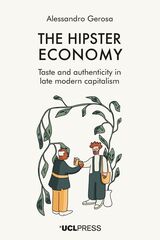 Hipster Economy: Taste and Authenticity in Late Modern Capitalism
Alessandro Gerosa
University College London, 2024 The Hipster Economy analyzes the impact of pursuing authenticity on consumption, urban spaces, and late modern capitalism, to offer a fresh perspective on hipsterism and aesthetic consumption.
The Hipster Economy gives hipsterism the serious analysis it deserves, through which he reveals the importance of hipster aesthetics, based on authenticity, for today’s consumption-based economy.
Since being authentic has become an aspiration and an imperative, the notion of authenticity shapes the consumption habits of individuals in the most diverse contexts such as food and drinks, clothing, music, tourism, and the digital sphere. It even transforms urban areas and their local economies. In this book, Alessandro Gerosa analyzes this complex set of related phenomena to argue that the quest for authenticity has been a driver of Western societies from the emersion of capitalism and industrial society to today.
The Hipster Economy provides a historically and sociologically grounded explanation of the value of authenticity in the contemporary economy and society, through which it shows why and how authenticity has become a fundamental value orienting consumers' taste in late modern capitalism. In clear and convincing writing, Gerosa proposes a novel conceptualization of the aesthetic regime of consumption and an analysis of how the hipster economy impacts the urban space.
Hir: A Play
Taylor Mac
Northwestern University Press, 2015 Finalist, 2015 Lambda Literary Award for LGBT Drama
Discharged from the Marines under suspicious circumstances, Isaac comes home from the wars, only to find the life he remembers upended. Isaac’s father, who once ruled the family with an iron fist, has had a debilitating stroke; his younger sister, Maxine, is now his brother, Max; and their mother, Paige, is committed to revolution at any cost. Determined to be free of any responsibility toward her formerly abusive husband—or the home he created—Paige fervently believes she can lead the way to a "new world order." Hir, Taylor Mac’s subversive comedy, leaves many of our so-called normative and progressive ideas about gender, families, the middle class—and cleaning—in hilarious and ultimately tragic disarray.
Hiraizumi: Buddhist Art and Regional Politics in Twelfth-Century Japan
Mimi Hall Yiengpruksawan
Harvard University Press, 1998 In the twelfth century, along the borders of the Japanese state in northern Honshu, three generations of local rulers built a capital city at Hiraizumi that became a major military and commercial center. Known as the Hiraizumi Fujiwara, these rulers created a city filled with art, in an attempt to use the power of art and architecture to claim a religious and political mandate.
In the first book-length study of Hiraizumi in English, the author studies the rise of the Hiraizumi Fujiwara and analyzes their remarkable construction program. She traces the strategies by which the Hiraizumi Fujiwara attempted to legitimate their rule and grounds the splendor of Hiraizumi in the desires, political and personal, of the men and women who sponsored and displayed that art.
 Hired Pens: Professional Writers in America’s Golden Age of Print
Ronald Weber
Ohio University Press, 1997 Just as mass-market magazines and cheap books have played important roles in the creation of an American identity, those skilled craftsmen (and women) whose careers are the subjects of Ronald Weber’s narrative profoundly influenced the outlook and strategies of the high-culture writers who are generally the focus of literary studies. Hired Pens, a history of the writing profession in the United States, recognizes the place of independent writers who wrote for their livelihood from the 1830s and 1840s, with the first appearance of a broad-based print culture, to the 1960s. Many realist authors began on this American Grub Street. Jack London turned out hackwork for any paying market he could find, while Scott Fitzgerald’s stories in slick magazines in the 1920s and early ’30s established his name as a writer. From Edgar Allen Poe’s earliest forays into writing for pay to Sylvia Plath’s attempts to produce fiction for mass-circulation journals, Hired Pens documents without agenda the evolution of professional writing in all its permutations—travel accounts, sport, popular biography and history, genre and series fiction—and the culture it fed.
Hiring of Dock Workers and Employment Practices in the Ports of New York, Liverpool, London, Rotterdam, and Marseilles
Vernon H. Jensen
Harvard University Press This study provides the opportunity to compare the hiring and employment practices, within the context of local conditions, as they exist in five major ports. It tells how efforts at regulation are influenced by the various institutions and by market constraints and describes the impact of the differences emanating from the industrial relations systems of each of the countries in which the port is located. In all these ports, the basic problem, to a large extent, is still that of casual employment and the author describes the repeated attempts to achieve a solution and analyzes in detail the efforts that failed and those that succeeded.
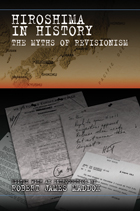 Hiroshima in History: The Myths of Revisionism
Edited with an introduction by Robert James Maddox
University of Missouri Press, 2007 When President Harry Truman authorized the use of atomic weapons against Japan, he did so to end a bloody war that would have been bloodier still had the planned invasion of Japan proved necessary. Revisionists claim that Truman’s real interest was a power play with the Soviet Union and that the Japanese would have surrendered even earlier had the retention of their imperial system been assured. Truman wanted the war to continue, they insist, in order to show off America’s powerful new weapon. This anthology exposes revisionist fallacies about Truman’s motives, the cost of an invasion, and the question of Japan’s surrender. Essays by prominent military and diplomatic historians reveal the hollowness of revisionist claims, exposing the degree to which these agenda-driven scholars have manipulated the historical record to support their contentions. They show that, although some Japanese businessmen and minor officials indicated a willingness to negotiate peace, no one in a governmental decision-making capacity even suggested surrender. And although casualty estimates for an invasion vary considerably, the more authoritative approximations point to the very bloodbath that Truman sought to avoid. Volume editor Robert Maddox first examines the writings of revisionist Gar Alperovitz to expose the unscholarly methods Alperovitz employed to support his claims, then distinguished Japanese historian Sadao Asada reveals how difficult it was for his country’s peace faction to prevail even after the bombs had been dropped. Other contributors point to continuing Japanese military buildups, analyze the revisionists’ low casualty estimates for an invasion, reveal manipulations of the Strategic Bombing Survey of 1946, and show how even the exhibit commemorating the fiftieth anniversary of the bombing at the Smithsonian National Air and Space Museum hewed to the revisionist line. And a close reading of Tsuyoshi Hasegawa’s acclaimed Racing the Enemy exposes many grave discrepancies between that recent revisionist text and its sources. The use of atomic bombs against Japan remains one of the most controversial issues in American history. Gathered in a single volume for the first time, these insightful readings take a major step toward settling that controversy by showing how insubstantial Hiroshima revisionism really is—and that sometimes history cannot proceed without decisive action, however regrettable.
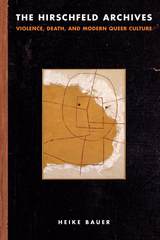 The Hirschfeld Archives: Violence, Death, and Modern Queer Culture
Heike Bauer
Temple University Press, 2017 Influential sexologist and activist Magnus Hirschfeld founded Berlin’s Institute of Sexual Sciences in 1919 as a home and workplace to study homosexual rights activism and support transgender people. It was destroyed by the Nazis in 1933. This episode in history prompted Heike Bauer to ask, Is violence an intrinsic part of modern queer culture? The Hirschfeld Archives answers this critical question by examining the violence that shaped queer existence in the first part of the twentieth century. Hirschfeld himself escaped the Nazis, and many of his papers and publications survived. Bauer examines his accounts of same-sex life from published and unpublished writings, as well as books, articles, diaries, films, photographs and other visual materials, to scrutinize how violence—including persecution, death and suicide—shaped the development of homosexual rights and political activism. The Hirschfeld Archives brings these fragments of queer experience together to reveal many unknown and interesting accounts of LGBTQ life in the early twentieth century, but also to illuminate the fact that homosexual rights politics were haunted from the beginning by racism, colonial brutality, and gender violence.
His Current Woman
Jerzy Pilch
Northwestern University Press, 2002 Pawel Kohoutek, veterinarian and womanizer, looks out the window one morning to see his mistress approaching his house. That's bad. She is hauling her suitcase (containing her books) and her backpack (containing everything else she owns). That's worse. So Kohoutek does the only thing he can: He hides his current woman in the attic of the family slaughterhouse. Farce ensues as Kohoutek attempts to hide the woman from his eccentric family, their lodgers, and various offbeat visitors. A best-seller in Jerzy Pilch's native Poland, His Current Woman is an enjoyable literary send-up of what often passes for love.
|
|
